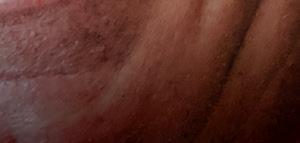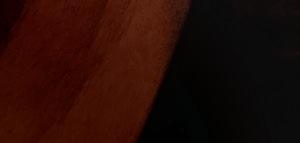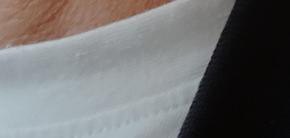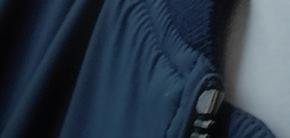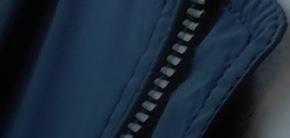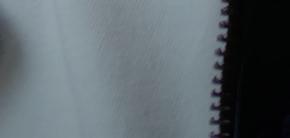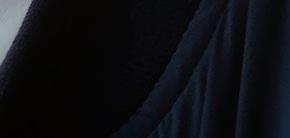VIDEO GAMES
Bigger than Hollywood, better than football


Bigger than Hollywood, better than football







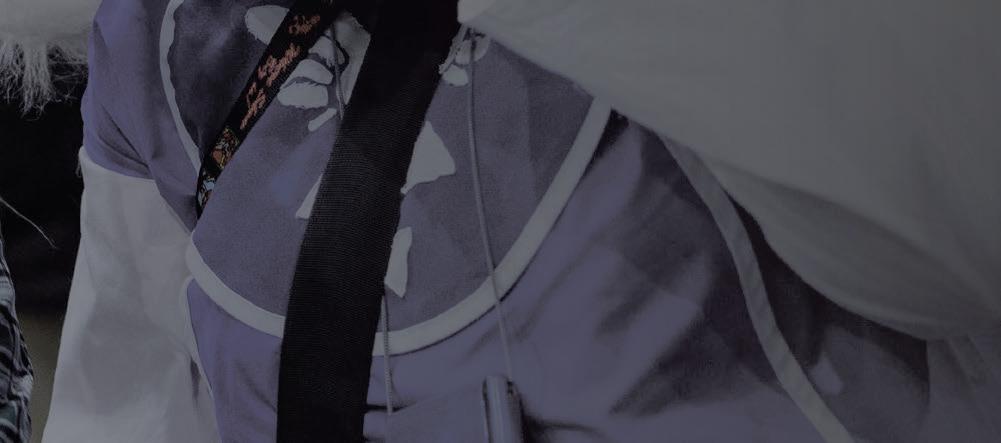





Despite what The Buggles told us, video never quite killed the radio star. Or the film industry or the music business. But all those media are put firmly in the shade when it comes to the numbers of people and company bottom lines involved in gaming. We could have run a video games special at any time, but with the Game On exhibition returning to Scotland this month, we thought we’d press start on a feature now. We take in the last 20 years of the industry’s ups and downs, zooming in on everything from Consolevania (a good thing) to Gamergate (a very bad thing), wondering if women have any better representation in games than they did in 2004 (kind of but not really), and looking at the games you should all be playing over the coming months.
Of course, we’re also keen on seeing you lot getting out and about, so Glasgow International is back with another showcase of top contemporary art across the city. A perfect opportunity, then, for us to chuck a definitive A-Z at you taking in artists, collectives and venues. Q and V proved tricky but we got there. Going out and staying in come together for those of you who want a night of luxury in House Of Gods, the Glasgow and Edinburgh hotel enterprise that puts the emphasis on fun and innovation.
Other highlights across the mag are an interview with polymath Miranda July, a trawl around the Edinburgh New Town galleries involved in NT Art Month, a rummage in the family-run Montrose Bag Company, a trek across San Francisco, and a peer into the soul of Henry Winkler (aka The Fonz) as he partially sidesteps our wholly unreasonable Q&A demands.
What’s getting the big thumbs-up from us stars-wise this time around? Well, there’s a new EP from the Hen Hoose collective, a podcast about the chaotic genius that was Rik Mayall, a stage play of Damian Barr’s Maggie & Me, the bold return of Channel 4’s We Are Lady Parts, and a barnstorming new novel from Rachel Cusk. Whether you’re going out or staying in this month, the game’s afoot.
Brian Donaldson EDITOR

Friers
Rafferty
McLean
Laidlaw
Merino
Southam Isabella Dalliston Writers
Ailsa Sheldon, Becca Inglis, Brian Donaldson, Claire Sawers, Danny Munro, David Kirkwood, Eddie Harrison, Emma Simmonds, Eyve, Fiona Brown, Fiona Shepherd, Haneen AlEid, Isy Santini, James Mottram, Jay Richardson, Jay Thundercliffe, Jo Laidlaw, Kevin Fullerton, Lucy Ribchester, Marcas Mac an Tuairneir, Megan Merino, Murray Robertson, Neil Cooper, Rachel Ashenden, Rebecca Crockett, Suzy Pope





Alone iterative characteristic about sunshine is its abundance for the whole world to bask in.
It is, however, a different story in Glasgow. To me, sunshine is one of the most vital parts of happiness; or I thought it was. I had started to associate certain people, places and things with sunshine. I felt alone and unheard. Scars and pain formulated neural pathways of trauma: my music came from that. I had given my sunshine away, but community taught me how to share it. There’s always an abundance not a lack of.
Living in Glasgow has given me a sense of community where I can grow, learn, teach, and be inspired to inspire. The music has its own community: the art scene, the book clubs, the party scene. I’ve come to appreciate the way that different kinds of backgrounds come together. Upcoming artists showing up for each other and supporting the artistry; organisations giving opportunities to those otherwise underfunded.
I had my first headliner at The Old Hairdresser’s in March, and the support was remarkable. My latest work, Sista! Beyond The Sky Isn’t The Limit, is a commission from the Scottish Refugee Council under Cross Borders which made both the
In this series of articles, we turn the focus back on ourselves by asking folk at The List about cultural artefacts that touch their heart and soul. This time around, David Kirkwood tells us which things . . .
Made me cry: Walt Disco’s new single ‘Jocelyn’, written and sung by their lead singer of the same name, is about as perfectly fragile and direct as a lyric can get. I’ll say no more than that; just check it out.
Made me angry: Melting Pot’s annual shindig at Queen’s Park was glorious, as ever, but they bigged up an afterparty which was such a non-event it felt sneaky. I raised an eyebrow mostly, but I was a wee bit angry too.
Made me laugh: I’ve been getting back into the habit of going to A Play, A Pie And A Pint at Òran Mór as much as I can. It’s a weekly source of guffaws and chortles. Lewis Capaldi Goes Tropical was a particular recent delight.
Made me think: This might all be a distant memory soon, but the questions around ‘true stories’ and ‘based on real events’, and their overlaps, rights, wrongs and dangers are fresh as hell after the difficult watch that was Baby Reindeer
Made me think twice: This year’s Record Store Day list. My vinyl purchasing can get out of control, to the extent I look at their list each year through a ‘what am I buying this time?’ lens. But nothing tempted me and I stayed strong (and in my bed that Saturday morning). Maybe I’ve gone cold turkey . . .
Singer-songwriter and rapper Eyve hails the importance and power of community to help creative people through tough times
EP and collaborations with other artists possible. It felt like I had reached another financial obstacle when reality was telling me that I couldn’t afford the trip to Sweden for Future Echoes. Conferences and showcases overseas are a great chance to tap a different market.
The music I write comes from deep within my being. ‘Call in the love that’s around’ was on repeat in my head; I reached out to the communities that I had been a part of since I started my music caree and they pooled resources to finance the trip. That belief they have in me keeps me going. I am just one of many artists. Even with the cost of living, community continues to be there. It’s not just about finances, it’s the beauty I see in people who want others to thrive.
I am grounded by community. I am a community ‘gero’: that sounds very Scottish for ‘girl’ but it’s also a Shona word for ‘girl’. I’ve found my people in Glasgow. I would love to express my deepest gratitude to Be United, The Sound Lab, Music Space, Body Remedy, Project X, Up2stndrd, UNESCO Cities Of Music, and PRS Foundation.
n Eyve’s EP Sista! Beyond The Sky Isn’t The Limit is out now.
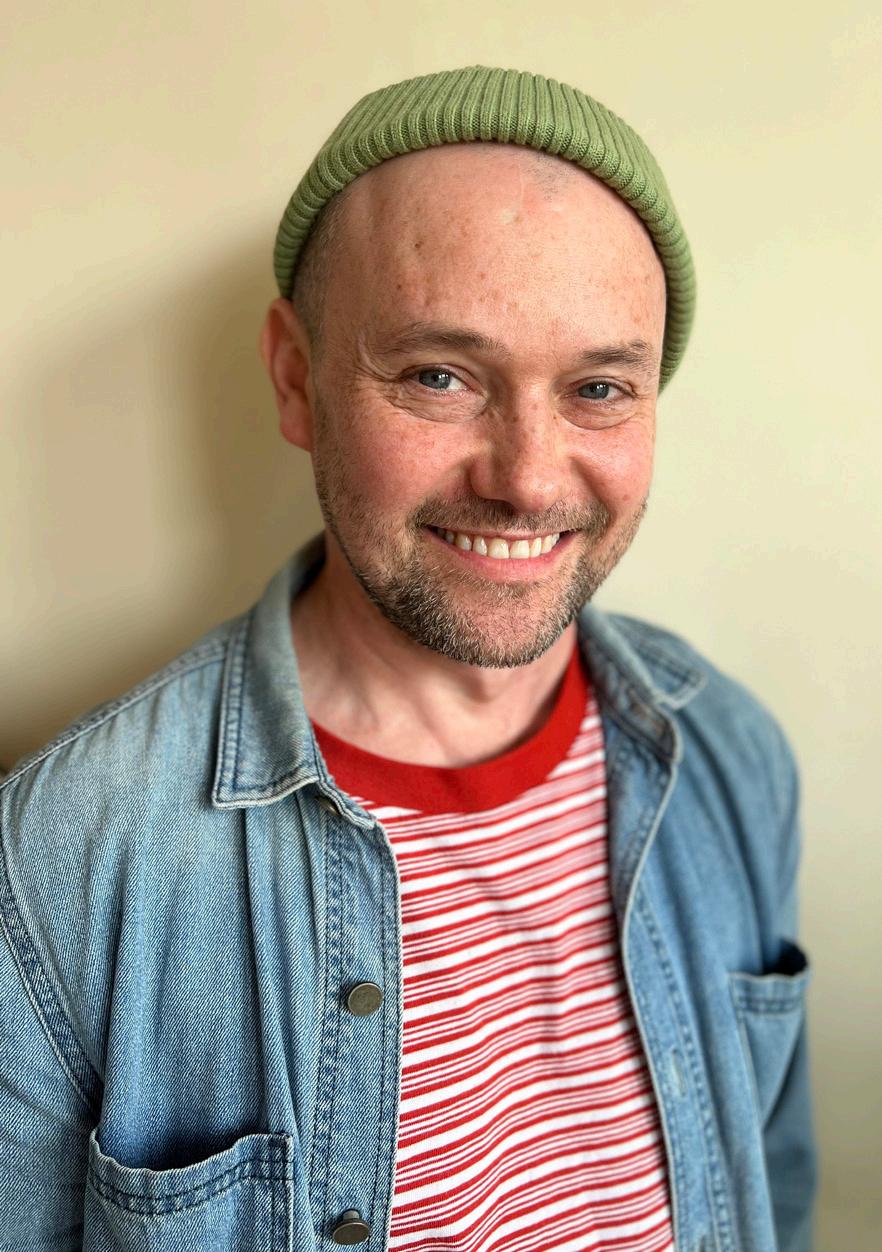
Unlock a whole new dimension this issue with our video game-themed playlist, including songs by Lana Del Rey, Sabrina Carpenter, Radiohead, Charli XCX, Jamiroquai and, of course, Rival Consoles
Scan and listen as you read:


It’s undeniable that Richard Gadd’s traumatic life events deserve to be told on many stages and screens. In the recent TV adaptation of Baby Reindeer, his weaving together of two separate but equally brutal narratives (his Fringe hits Monkey See Monkey Do and Baby Reindeer) groundbreakingly illustrates the muddy waters around sexual assault and its many perpetrators. However, its Netflixication taints a brilliant story, full of nuance and ambiguity, with pandering true-crime sensibilities that make Baby Reindeer a fleeting trend rather than a genuine masterpiece. In other words, it’s a victim of its mainstream success. Had it been produced and executed more tenderly, perhaps the lazy use of voiceover (presumably a residual element of the one-man show) would have been more tastefully executed (or better yet, removed), and proper safeguarding protocols could have been implemented to protect everyone involved. Had this been the case I think its cultural significance and discourse would have taken an entirely different and altogether more positive shape. Crucially it would have slowed the global onslaught of self-appointed internet sleuths who were all too quick to crawl out of the woodwork and embark in the ludicrously hypocritical act of digitally stalking the alleged real people.

We look through The List’s 39-year back catalogue to see what was making headlines this month in decades gone by
We transport ourselves back to June 1994 when our cover turned the lens back onto legendary photographer Annie Leibovitz. Ahead of presenting a 20-year retrospective of her work at the Scottish National Portrait Gallery, she spoke to us about her first submissions to Rolling Stone magazine and subsequent iconic shoots with John Lennon, Yoko Ono, Whoopi Goldberg and Mick Jagger. Also inside, we chatted with Scottish electronic dance group The Time Frequency (TFF) about club culture, and heard from Sadie Frost who was set to star in Paul WS Anderson’s action thriller Shopping n Head to archive.list.co.uk for our past issues.
Netflix scored a surprise hit when Richard Gadd bared his soul and detailed various traumatic events in Baby Reindeer. The rippling aftermath caught everyone unawares (not least the Fife-born comic/actor) but after all is said and done, Megan Merino and Kevin Fullerton wonder whether it was actually any good as TV
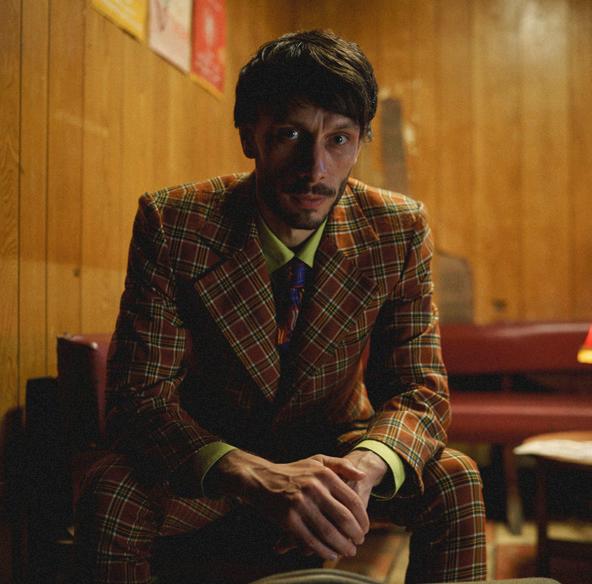
When the chattering classes have found their next target and leeches like P*ers M*rgan have finished propping up their flagging careers, Baby Reindeer will be viewed as one of the best shows of the past few years, an outlier from Netflix’s usual raft of vapid swill. That the commentariat have barely focused on the work itself, instead tugging at those threads of its toxic aftermath, is to be expected. But the truly admirable elements of Richard Gadd’s comedy-drama are less amenable to simple analysis: its unflinching attitude to sexual abuse and a reluctance to paint any character in the broad brushstrokes of hero or villain. Each one of its most troubling scenes is a necessary gut-punch, as Gadd (playing fictionalised surrogate Donny) recounts his experiences with the bemused delivery of someone unable to believe the situation they’ve found themselves in. This ‘there but for the grace of god go I’ narrative is a warning that anyone can experience trauma and, perhaps more troublingly, anyone can inflict it. Outside of its ‘true story’ trappings (which have led people to discuss the show more like true-crime exploitation rather than semi-autobiographical fiction), this is an intricately paced and self-reflexive work. Alongside I May Destroy You, it’s another show shedding vital light on the bleakest of human cruelties.









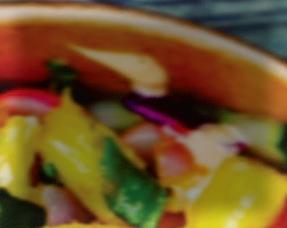






























It’s more than 20 years since The Barbican’s Game On exhibition last toured these parts. A celebration of the history and culture of video games, it has visited 20 countries and welcomed more than two million visitors. And now it’s coming back. To press ‘start’ on our video games special, Murray Robertson reckons a whole lot has changed in the industry during those intervening years. And not all for the better . . . >>


In the 1980s, the most powerful gaming hardware was confined to amusement arcades where pocket money was casually exchanged for a couple of minutes’ playtime on a dedicated machine. It was the growth of affordable computers (Commodore 64, ZX Spectrum) and later gaming consoles (SNES, Sega Mega Drive) that established the hobby as something that families could enjoy at home.
According to a survey from last year, 39% of UK households have some sort of game console. In the past two decades, gaming hardware has become exponentially more powerful, and we’ve enjoyed the launches of three new generations of consoles, from PlayStation 3 and Xbox 360 to PlayStation 5 and Xbox Series X/S. We’ve also seen Nintendo pivot from vying to produce the most powerful console to absolutely nailing the family/casual gamer market, most recently with the huge success of the Switch.
It’s easy to forget that the iPhone also had a profound impact, encouraging a glut of new gamers: Pokémon GO’s much-heralded launch in 2016 attracted 232 million players. And while VR remains a niche proposition, the technology has come on leaps and bounds in recent years, with a number of reasonably affordable headsets now available. While it will never dominate the hobby (VR isn’t the future of gaming, it’s just an alternative), it offers an immersive experience unrivalled by traditional hardware.
But what have been the key games over the past 20 years? Since its release in 2011, Minecraft has sold more than 300 million copies, making it the best-selling game of all time. Recognising its potential, Microsoft quickly bought it up for an astonishing $2.5bn and later released an education edition specifically for use in schools. More of a platform than a game, Minecraft is ubiquitous, accessible and versatile, and soon enough practically a whole generation will have been raised using it to play, create and learn.
This year marks the 20th anniversary of World Of Warcraft. Remarkably, it’s still going strong, with its newest (ninth) expansion, The War Within, due later this year. At its peak, in 2010, the game had 12 million subscribers paying a monthly fee, although that number has plummeted in recent years. Nevertheless, in the face of a fickle market, World Of Warcraft’s ongoing success is extraordinary and, in 2016, Duncan Jones directed a film adaptation of the franchise that took $439m at the global box office.
Other recent cultural behemoths include Fortnite, which has expanded from a cartoonish battle royale to a multimedia empire that regularly teams up with other huge brands for what the bean-counters might describe as symbiotic cross-promotion. Call Of Duty has grown from a simple (if quietly groundbreaking) WWII shooter in 2003 to a pervasive cultural sensation, with a new instalment dropping every November without fail. It’s no coincidence that the biggest releases of the past 20 years are all ‘live service’ games. Even Grand Theft Auto V, which was originally released on PS3 and Xbox 360







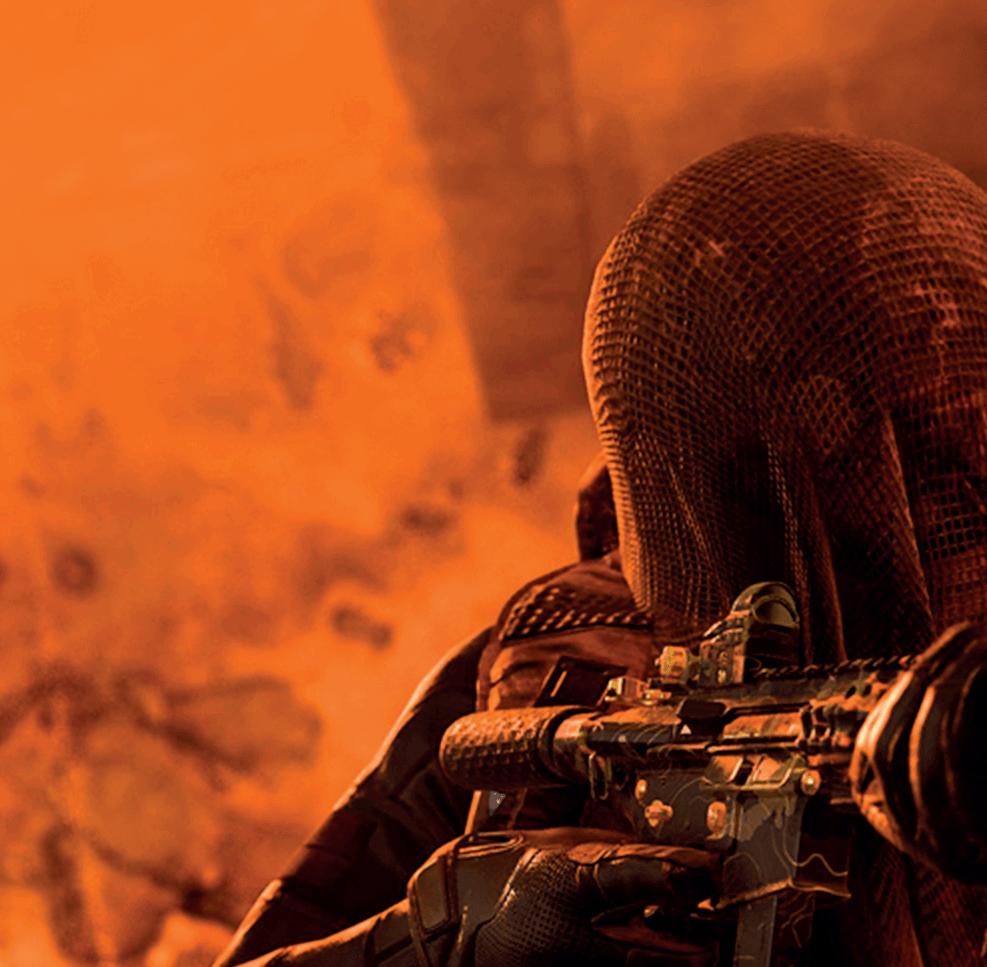






more than a decade ago, thrives today thanks to its publisher’s decision to focus on its multiplayer mode above all else. Of course, such a vast industry can never be without its problems and controversies. In 2004, a risqué minigame nicknamed ‘Hot Coffee’ was discovered hidden within the code for Grand Theft Auto: San Andreas. Developer Rockstar had decided not to include it in the game and it was unplayable without first modifying the files on PC. But the resultant fallout, including intervention by the US government, had long-lasting implications for the industry. In today’s cultural climate, the whole debacle seems rather twee.
Some live-service games have had huge financial success thanks to the nefarious employment of loot boxes, which offer randomised game elements (cosmetics and equipment for two) for real money. Considered by many to be a form of unregulated gambling that appeals to children, various European governments have stepped in to outlaw the practice. In 2022, the UK government decided to let the industry regulate itself.
Much more seriously, around ten years ago the Gamergate movement brought to the surface a toxic deluge of misogyny. Purporting to be a campaign promoting ethics in video-game journalism, it was in fact a hate manifesto directed against female journalists, developers and gamers. It had a profound impact on the culture wars, with many of its proponents later moving on to work with far-right organisations to help elect Donald Trump as US president.
Now, as more women, girls and minorities get into gaming, developers are having to dedicate more resources on anti-toxicity measures to intercept and deal with racist, sexist and homophobic abuse. According to numerous surveys, many of the most popular online games feature

near-parity between the sexes, yet even today you’ll rarely hear a female voice speak up during play. Gaming culture has undergone a radical shift over the past two decades, largely thanks to the internet. Where kids once gathered in arcades, watching players over their shoulders, that sociocultural experience has been replaced with the likes of Esports, Twitch, and the rise of streaming.
That said, many of the biggest competitive games (Counter-Strike 2, Dota 2, League Of Legends) attract hordes of fans around the world, and last year the Esports market was valued at $1.72bn. Given the hobby’s relatively niche reach in the 1980s/1990s, it would have seemed unfathomable then that people could earn not just a living but a small fortune simply by playing games while chatting over video.
Increasingly, other media are showing interest in the power of gaming franchises. Last year’s triumphant TV adaptation of The Last Of Us was the first real indication that the tide might be turning; over nine episodes, it remained faithful to the game’s spirit while improving on its story with an outstanding additional plot strand. And Prime Video’s take on the Fallout series brought in 65 million viewers in its first 16 days, second only to its Lord Of The Rings spin-off, The Rings Of Power. Once considered a cultural outlier, gaming is increasingly taking centre stage, and its market value has long vastly eclipsed that of music and film. It’s been an eventful two decades since Game On last came to town. It’ll be fascinating to see what comes next.
Game On, National Museum Of Scotland, Edinburgh, Saturday 29 June–Sunday 3 November.
presents The Comedy Arena
DESIREE BURCH • GRACE CAMPBELL • LUCY BEAUMONT • NINA CONTI • ROSIE JONES SAM CAMPBELL • SARAH KEYWORTH • SEANN WALSH • SOPHIE DUKER • STEWART LEE THE HORNE SECTION • TIFF STEVENSON
AURIE STYLA • COLIN HOULT • ELLIOT STEEL • FLO & JOAN • JAKE LAMBERT
LARA RICOTE • LAURA SMYTH • LOUISE YOUNG • MARK SIMMONS • TAMSYN KELLY THANYIA MOORE • TIM RENKOW • VIDURA BR • THE COMEDY STORE
SO YOU THINK YOU’RE FUNNY? WINNER: SAMIRA BANKS • CHORTLE STUDENT COMEDY AWARD FINALISTS
Even More Comedy
ABI CLARKE • CHANTEL NASH • DANE BUCKLEY • FOXDOG STUDIOS: ROBO BINGO • JIN HAO LI MARJOLEIN ROBERTSON • PETER RETHINASAMY • SPRING DAY
Podcasts and Conversations
DR JOHN COOPER CLARKE
THE ADAM BUXTON PODCAST with JO BRAND • EMPIRE • LUKE WRIGHT RYAN BRODERICK: GARBAGE DAY LIVE ANDERS LUSTGARTEN: THREE BURIALS • ANXIETY JOSH • ASH BHARDWAJ • DR MYA-ROSE CRAIG ELLA MCLEOD • JOANNA NEARY • JOELLE TAYLOR: THE NIGHT ALPHABET • MAYA OPPENHEIM PAPPY’S FLATSHARE SLAMDOWN • THE MAGIC OF TERRY PRATCHETT • THE REAL SEX EDUCATION
THE COSMIC SHAMBLES NETWORK presents ROBIN INCE’S BOOK CORNER: NATALIE HAYNES, CHRIS LINTOTT and AYÒBÁMI ADÉBÁYÒ NINE LESSONS FOR LATITUDE with HELEN CZERSKI • AN UNCANNY HOUR
Theatre and Dance
CIRCUS BAOBAB: YÉ • CIRCA: HUMANS 2.0 • LAURA MURPHY: A SPECTACLE OF HERSELF
AN EVENING WITHOUT KATE BUSH • I AM YOUR TRIBUTE • JADE ANOUKA: HEART LUKE WRIGHT: JOY • SHÔN-DALE JONES: CRACKING WRIGHT & GRAINGER presents HALF MAN | HALF BULL PART ONE: THESEUS and PART TWO: DAEDALUS, HELIOS and ORPHEUS
DANCEEAST presents BOY BLUE: THE GETDOWN, MCNICOL BALLET COLLECTIVE: BATES BEATS and CEYDA TANC DANCE: KIZLAR








EKLEIDO: SPLICE • NATIONAL YOUTH DANCE COMPANY presents OONA DOHERTY: WALL LONDON CITY BALLET: ARIELLE SMITH’S NEW CREATION (excerpt) and KENNETH MACMILLAN’S CONCERTO, PAS DE DEUX (second movement)
THE PLACE presents THE PLAYGROUND TOUR VANHULLE DANCE THEATRE: OLIVE BRANCH and SONIA SABRI COMPANY’S MUGHAL MINIATURES: THE ELEPHANT AND THE DRUMMER
ALMOST SYNCHRO • DISCO YOGA • MONSKI MOUSE’S BABY DISCO DANCE HALL
Across The Arts



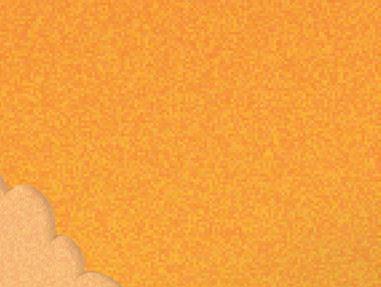

Obelisk Arena




AND REMEMBER WE CARE... A MEMORIAL SERVICE FOR THE CONSERVATIVE PARTY and DANNY DOES THE CROSSWORD • CREATIVE QUESTS • DABBERS SOCIAL BINGO • GEO KNITS SLOW MASTERCLASS TRH • NORWICH UNIVERSITY OF THE ARTS: CHARACTER DESIGN and LIFE DRAWING SHARON CHIN FESTIVAL BUNTING • THE HENHAM TREE RING PROJECT









Authors • Poets • Late Night Music • Wild Swimming • Award-winning Childrens, Teenagers and Family Programme Theatre of Food • Trailer Park • Street Feast • The Guest Chef • Mind, Body & Zen • Lavish Lounge





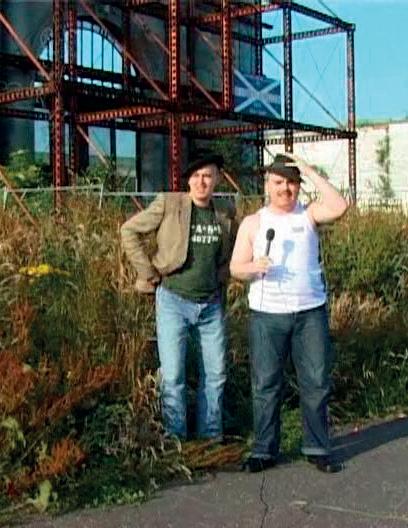


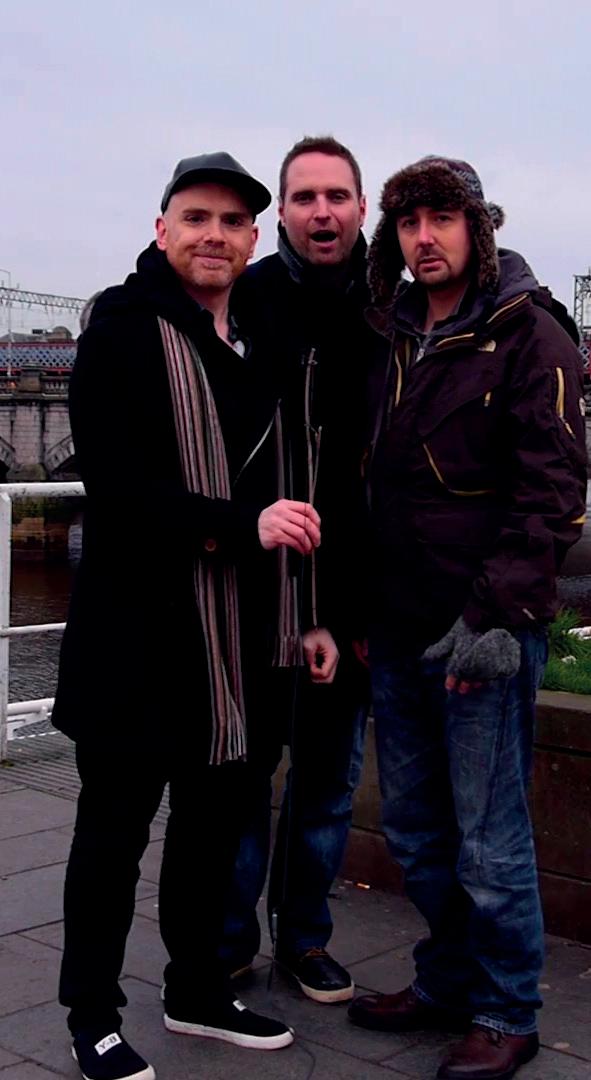

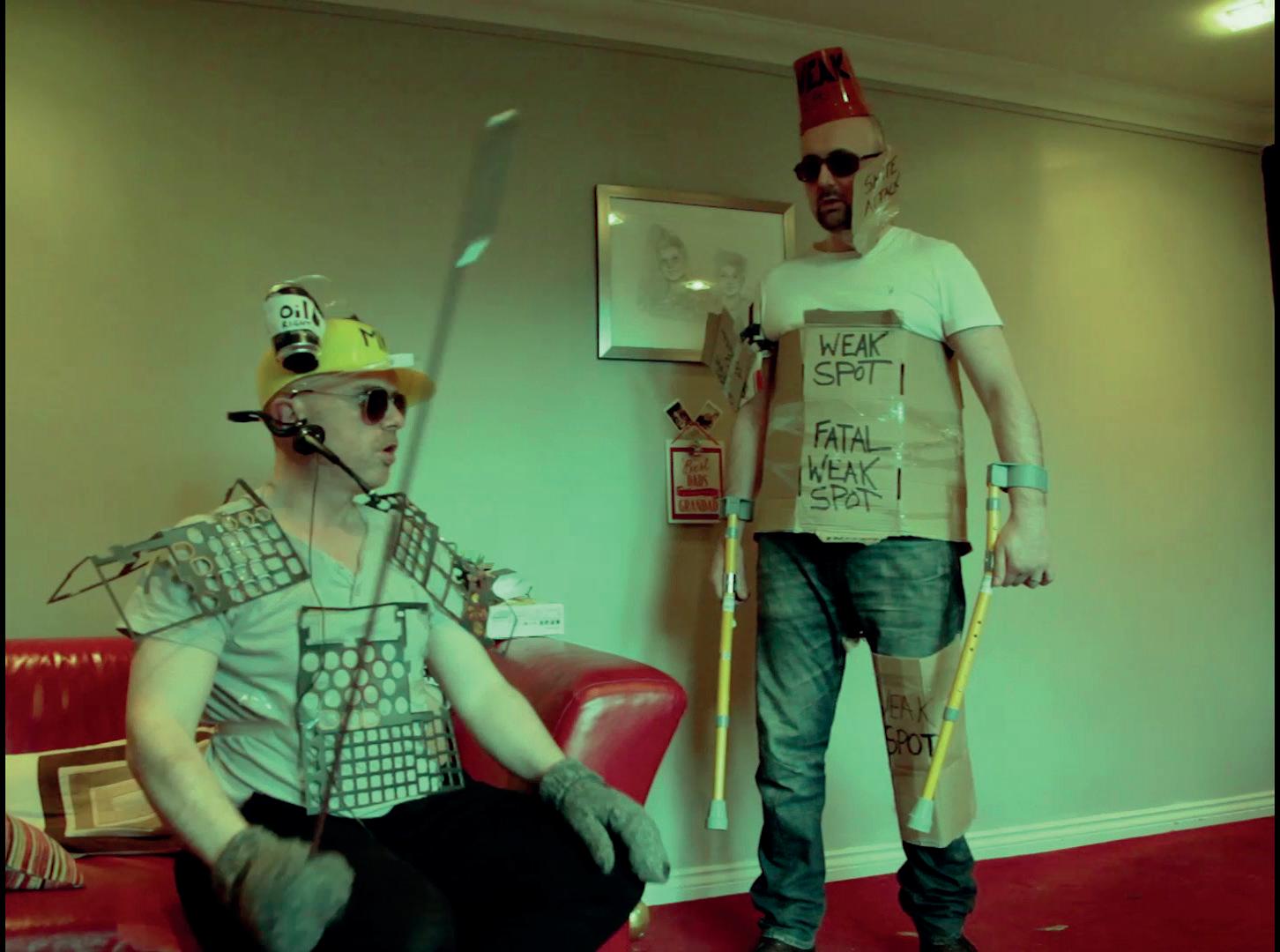




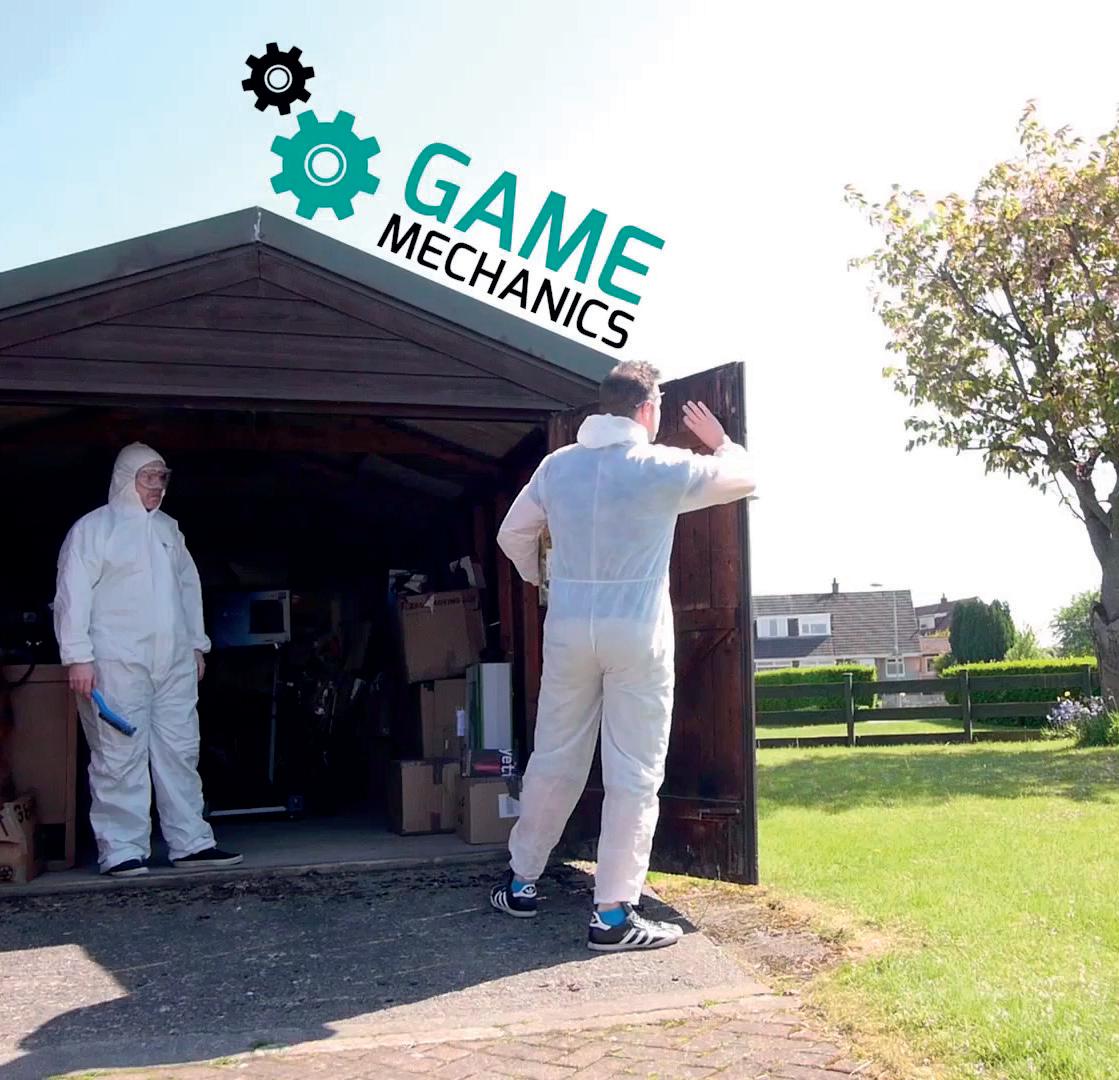
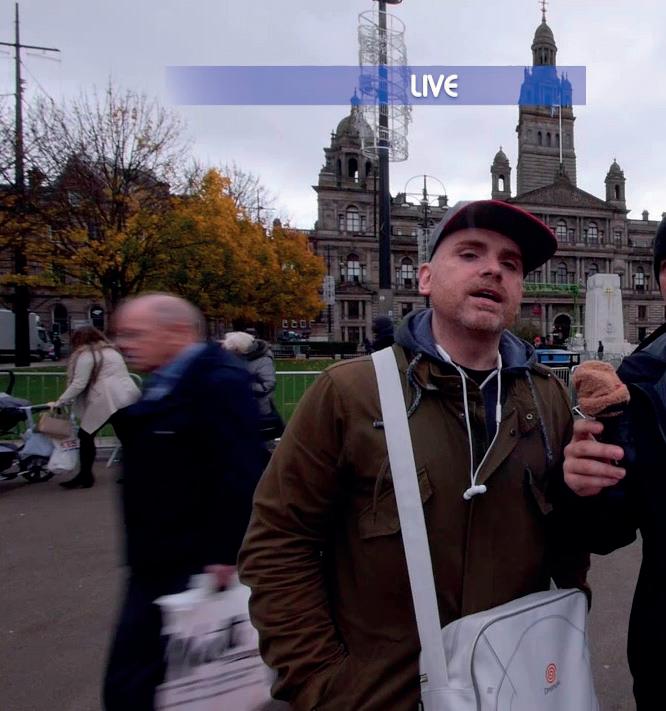




As Robert Florence and Ryan Macleod turn their long-running web series Consolevania into a trawl through video-gaming history, Kevin Fullerton quizzes them about games past and present, the value of auteurs, and keeping their show in the family
Many sketches from the early days of Consolevania are so bizarre that they might have been hallucinated in a teenage fever dream: hosts Robert Florence and Ryan Macleod stripped to their Y-Fronts, standing on Wii Fit Balance Boards and suffocating on polythene bags; notorious serial killer John Wayne Gacy (played by Florence) reviewing children’s games from his dank lair; and the odd-couple sitcom parody Mid-Level Boss And End Of Level Sub-Boss, in which Florence and Macleod, dressed in shoddy cardboard costumes, deliver bad jokes to the strains of an overbearing laugh track.
These were visions from that anything-goes era of the mid2000s internet, a time Consolevania took full advantage of to make something that was one-part gaming magazine show, two-parts absurdist sketch comedy, and a lo-fi document of its makers’ lives. Across 20 years, it has retained a subversive edge without being afraid to mature; Macleod has eloquently discussed mental-health issues while (perhaps improbably) reviewing Star Wars Jedi: Fallen Order, and Florence has explored the importance of nostalgic spaces in Shenmue when dealing with bereavement.
For its fanbase, it has been a reassuring presence, balancing humour with coverage that shines brightest when ploughing its own furrow. Now, the pair have entered a new era with Consolevania by launching CVXX, a year-by-year history of video games, starting in 1984 and winding its way towards the present day. ‘Secretly it’s not actually a video game show,’ says Florence. ‘We’re approaching it like a retrospective of our own lives.’ They promise an even deeper focus on the idiosyncratic elements that make the series so special while also de-Americanising games’ history by shining light on beloved British consoles such as the Commodore 64 and ZX Spectrum, and early 8-bit efforts like Chuckie Egg
‘That’s the thing with Consolevania,’ explains Florence, ‘it’s been personal right from the start. It’s a thing that had our friends and family in it. And now I like the idea that my kids will be able to look back at old episodes and see their grandad that they never met.’
There’s arguably never been a better time to take a step back from gaming’s present, particularly in a year faced with major job losses in the industry and increasingly cynical money-making tactics from publishers. ‘It’ll be nice to look back at an era when it was just one person in a room making a game,’ says Florence. ‘We need to be focusing less on these corporate entities that can cut a thousand jobs with their scythes, and more on individual designers like Sam Barlow and Hideo Kojima.’
Irrespective of what the future will bring, this prolonged gaze into the rear-view mirror is a chance to uncover gems from a duo who have dedicated their lives to highlighting material from the leftfield. ‘When you’re about 16 or 17 until your mid-20s, you’re consuming culture in a more feverish way,’ says Macleod. ‘I’m interested in doing the 80s episodes from a research point of view. But that period starting in the mid-90s is what I’m most looking forward to because it’s when I had the most autonomy in my hobbies, when I was spending the megabucks on Ridge Racer Type 4.’
Even a short amount of time spent with this pair is enough to catch the bug of their enthusiasm for the medium, with Florence proselytising almost religiously for the value of physical media, or Macleod describing the flashing blue light on a PlayStation 2 with a near-romantic fondness. If anyone can make a trek through gaming’s past an entertaining, weird and erudite delight, it’s these two.
CVXX episodes are available monthly on patreon.com/ consolevania and YouTube.


























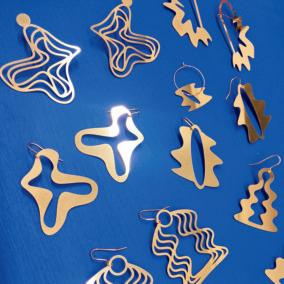







The early noughties was a frustrating time to be a girl gamer. Still tacitly considered a boys’ hobby, it was a rare thing in the world of PlayStation, Nintendo and Xbox to find a woman character who functioned as more than a prop. This was the era of Princess Peach (the ultimate damsel in distress), Lara Croft (whose pin-up image left no doubt that, despite being a gun-wielding badass, she was meant as eye candy for a male fantasy) and Grand Theft Auto (which incentivised the murder of sex workers). The message for women was clear: this was not their playground.
But one tonic came in 2003, when Ubisoft unveiled the cult classic Beyond Good & Evil and, with it, a different woman archetype. Dressed in baggy cargo trousers (regular body dimensions intact), pixie-cut swept back by a sweatband, Jade looked every part a woman existing on her own terms.
than half of all participants in the UK. All positive steps, but remnants endure of a culture that at best is exclusive, and at worst is violently misogynistic.
Researchers analysed the speech of 13,000 characters last year, with damning results. Men speak twice as much, with women talking over half the time in three out of 50 games. Even when women have the floor, they are more likely to apologise, hesitate or be polite, reinforcing the passive feminine trope. Offscreen, over a third of women (half of those aged 18–34) report experiencing harassment or mansplaining while gaming online.
Is gaming still nothing more than a lads’ playground? Despite some progress for women in the industry, Becca Inglis says misogyny and exclusion remain, while gender equality is a battle yet to be won
‘Nothing against sexy action women,’ Ubisoft’s Tyrone Miller told LadyGamers, ‘but with Jade, the question was more about her role, her situation in the world, and the meaning of her quest opposed to the size of her breasts.’ Jade didn’t need saving; indeed, she was the rescuer. A skilled photojournalist, she was committed to exposing a corrupt military’s propaganda. Finally, a woman character with depth had emerged.
Twenty years after Jade’s creation, you’d think gaming would have improved for women; and in some ways it has. In 2016, just 2% of game protagonists were women, rising to 18% by 2020. In the US, women now make up 46% of gamers, up from 38% in 2006. One study puts women gamers at more
This toxicity peaked in 2014 with Gamergate, a co-ordinated trolling and doxxing campaign against prominent women gamers. For the way it weaponised fury against wokeism, and unified thousands of complainants from the internet’s shadowy corners, Gamergate has been called a turning point in the alt-right’s online tactics. One Vox commentator even lays blame for 2021’s US Capitol insurrection at its door.
It may be a stretch to call woman characters the kryptonite of far-right terrorism, but it wouldn’t hurt to better reflect gaming’s growing demographic. A majority of gamers told Opinium that hiring more women in leadership positions could help. In Jade’s case, the proof is truly in the pudding. Alexandra Ancel (the wife of Jade’s maker, Michel) is said to have had a strong hand in the character’s creation, even inspiring her design.
Gender equality in gaming remains a work in progress, but, for this writer at least, Jade is a shining example. And her work is far from done. With Beyond Good & Evil’s 20th anniversary edition due this year, Jade might just inspire another generation of girl gamers.

Murray Robertson casts his expert gaming eye over some heavily anticipated releases across the coming months, including everything from Elder Scrolls to Elden Rings
As the interminable wait for The Elder Scrolls VI continues, fans can always sate themselves with the series’ enormous online offering, now ten years old. This newest expansion introduces West Weald, previously featured in Oblivion.
n Released on PC, PS4, PS5, Xbox One and Xbox Series X/S, Monday 3 June.
The eighth expansion for this controversial online shooter focuses on mysterious recurring bad guy, The Witness. It also includes new locations, PVP maps and copious gear to covet. The bean counters at studio overlords Sony will be watching this release carefully as it’s been a bumpy ride for this live-service game.
n Released on PC, PS4, PS5, Xbox One and Xbox Series X, Tuesday 4 June.
Expectations are sky high for this expansion to Hidetaka Miyazaki’s 2022 masterpiece. Scant details reveal that the new big boss is Miquella, and the semi-full price suggests it’ll feature a fairly sizeable new map.
n Released on PC, PS4, PS5, Xbox One and Xbox Series X/S, Friday 21 June.
Massive Entertainment, responsible for Tom Clancy’s The Division series, are behind this brand-new action adventure set between The Empire Strikes Back and Return Of The Jedi. The first Star Wars game set in an open world, it looks beautiful and hopes are tremendously high.
n Released on PC, PS5 and Xbox Series X/S, Friday 30 August.
S.T.A.L.K.E.R.
Between 2007 and 2009 there were three S.T.A.L.K.E.R. games, then nothing. This continually gestating sequel was due for release in 2012 but numerous issues have troubled its production, not least the Russian invasion of Ukraine (developer GSC Game World relocated from Kyiv to Prague two years ago, and one of its developers was killed in the war). The earlier games were complex, difficult and thick with atmosphere. Expect more of the same.
n Released on PC and Xbox Series X/S, Thursday 5 September.
The original Space Marine was released in 2011 to middling reviews, and early word on this third-person future-shooter isn’t exactly positive. An almost year-long delay will hopefully help iron out the kinks.
n Released on PC, PS5 and Xbox Series X/S, Monday 9 September.

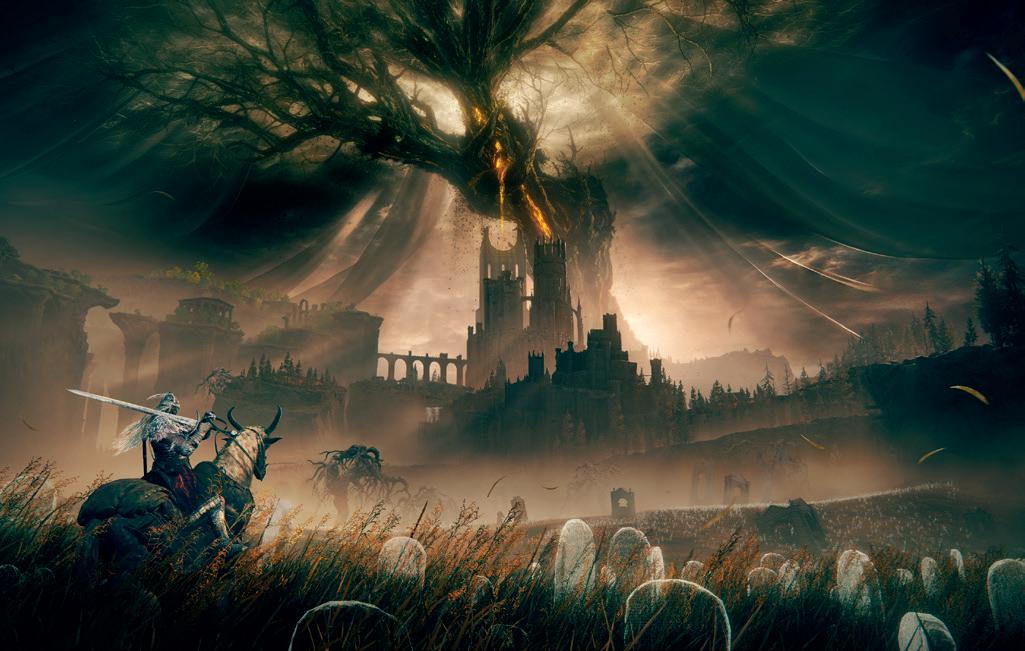


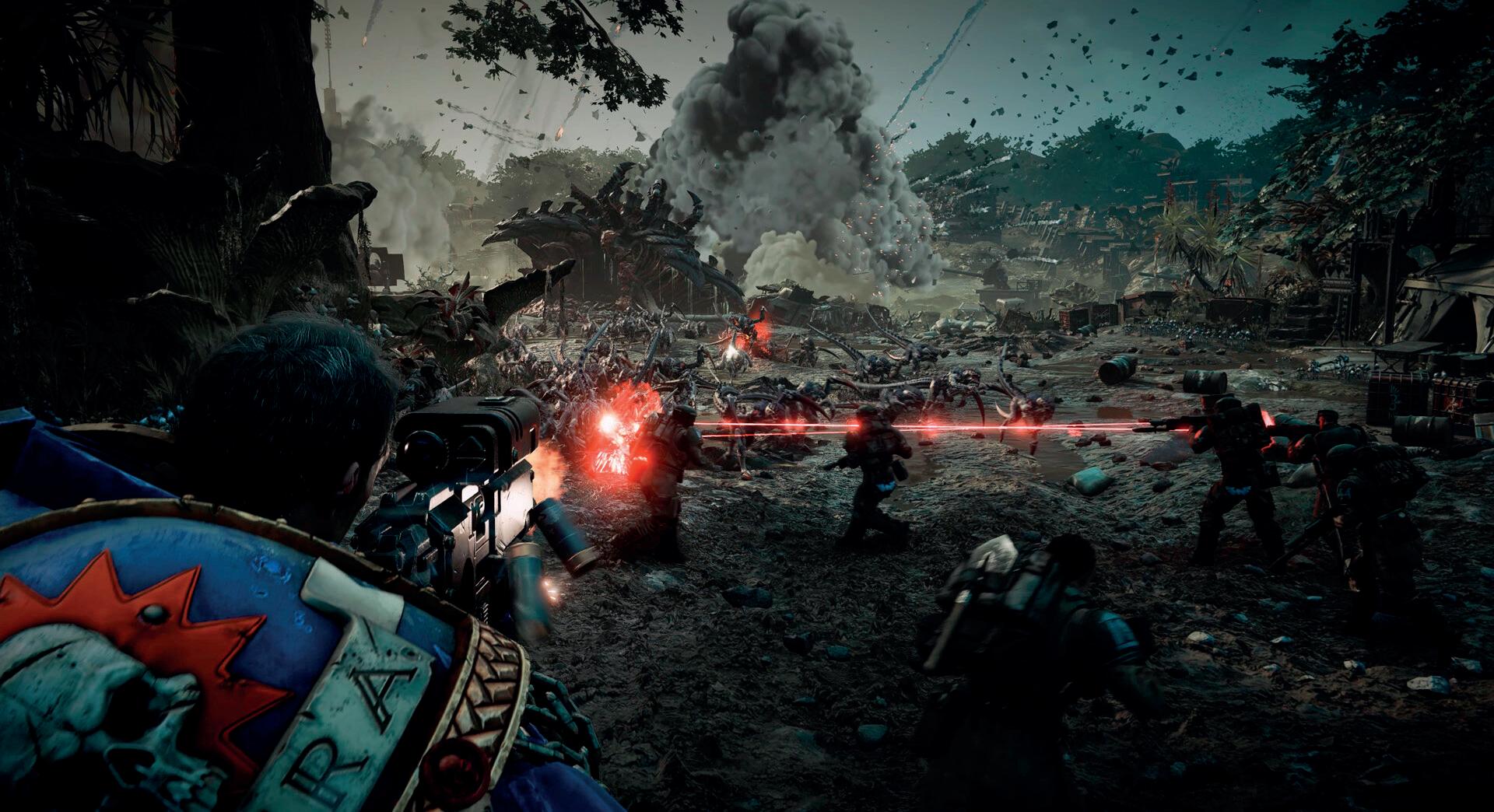
































































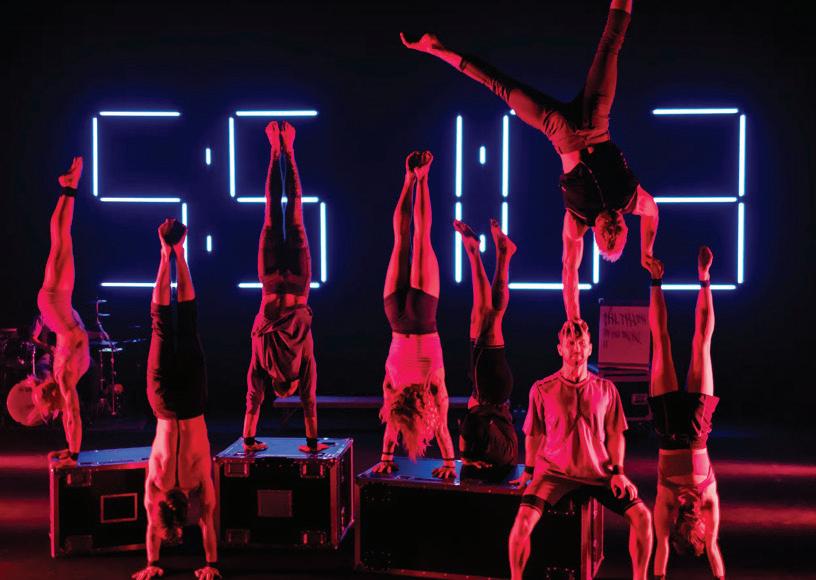




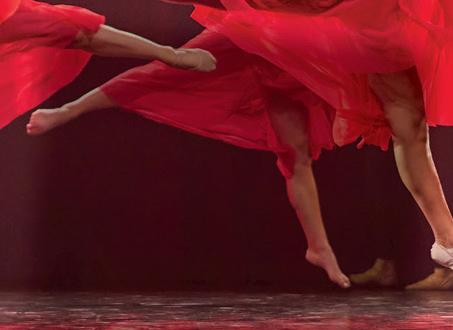







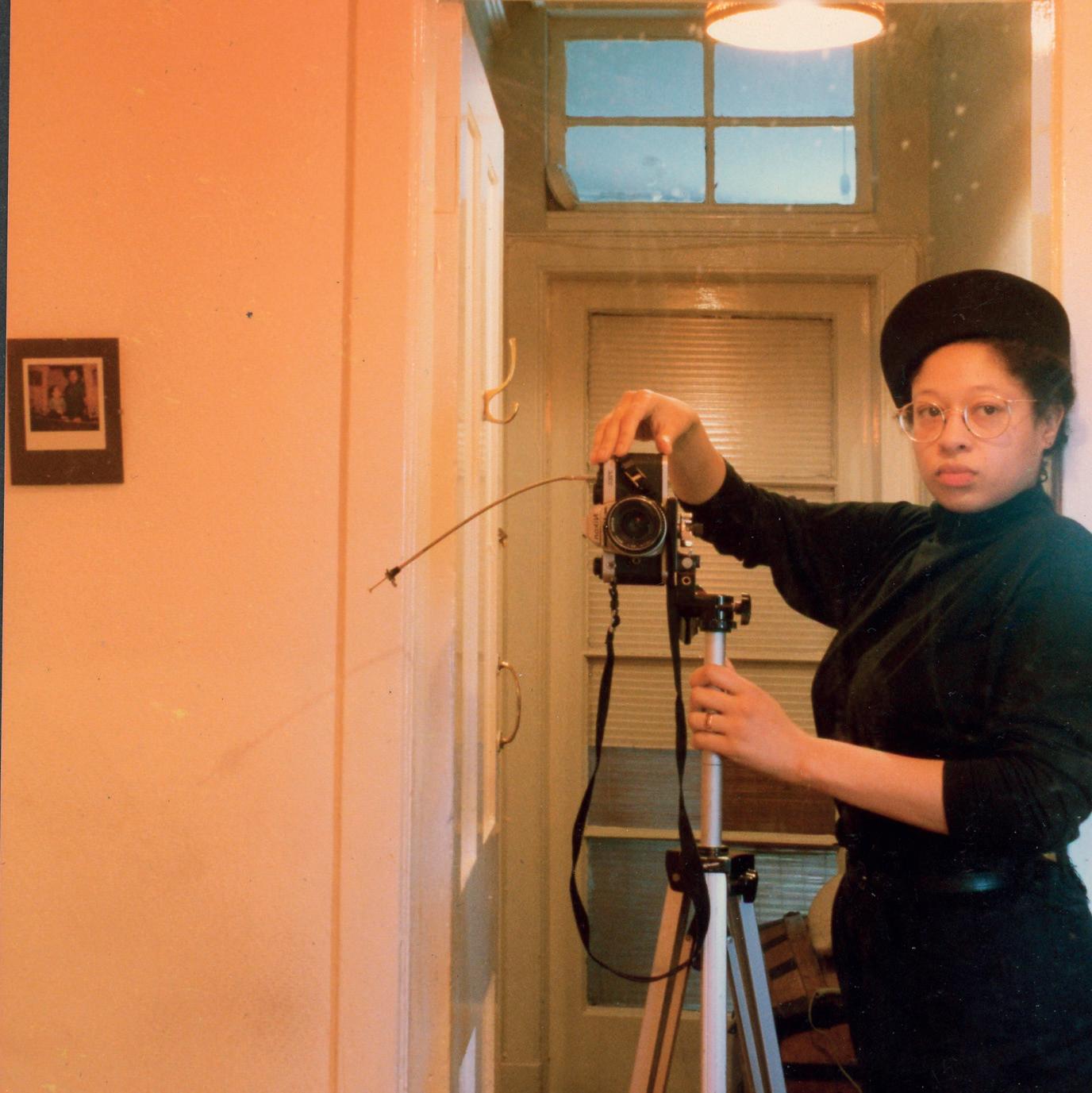

Covering everything from subway graffiti to solstice rituals, and post-colonial perspectives to site-specific performances, Glasgow International is back. As Scotland’s biennial festival of contemporary art brings us its tenth outing, Rachel Ashenden goes on an alphabetical amble through its packed programme
Audio-visual practitioner Darragh Amelia interrogates power structures across film cultures. An obsession with memory underpins her work to preserve, produce and programme audio-visual content. She teams up with Alma Simba to present as a point of departure, a joint exploration of intimacy through the prism of belonging and landscape.
Korean and western painting traditions collide in Bohie’s creative practice. Her tranquil paintings prompt spiritual reflection and are inspired by her home island of Jeju, South Korea. A new series of paintings that explore the subtleties of landscape brings her to Glasgow.
Based on the Scottish Isle Of Seil, Cameron works with sound installation, moving image and performance as a conduit for her Celtic shamanic practice. With her friend Owain Train McGilvary, Cameron exhibits two moving-image works anchored in forgotten pasts and imagined worlds.
The personal and the political intertwine in Le Bas’ multidisciplinary practice as she aligns her experiences as a Romani person with perspectives on nationhood, land, gender and discrimination. Her installation series Delainia: 17071965 Unfolding, combines psychology, mythology and archival ephemera.
Hailing from the Philippines and US, this artist duo scrutinise local practices of labour and capital through a post-colonial perspective. Their new work, Offerings For Escalante, is an experimental documentary that shares their long-term research about the island of Negros.
Mina Heydari-Waite creates a moving image and sculptural installation that traces a semi-fictional journey across Iran. Juxtaposing childhood footage with material about the British presence in the region, Farang reflects on family life against the wider socio-political agenda.
The late George was a black social documentary photographer who captured community life in Scotland. Her black-and-white stills convey the value of accessibility, care and equality, both in the arts and in the workplace.
While the late Keith Haring is best known for his colourful graffiti motifs, a new exhibition dives into works that weren’t known to the mainstream media. Subway drawings, studio pieces and more reveal Haring’s interest in semiotics and language.



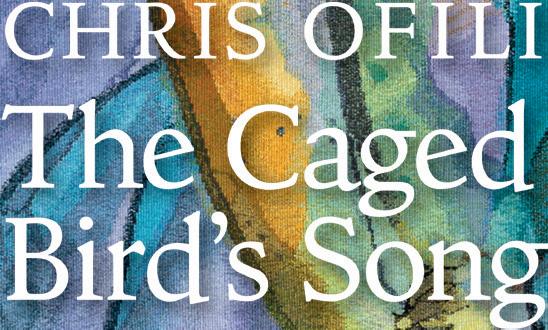



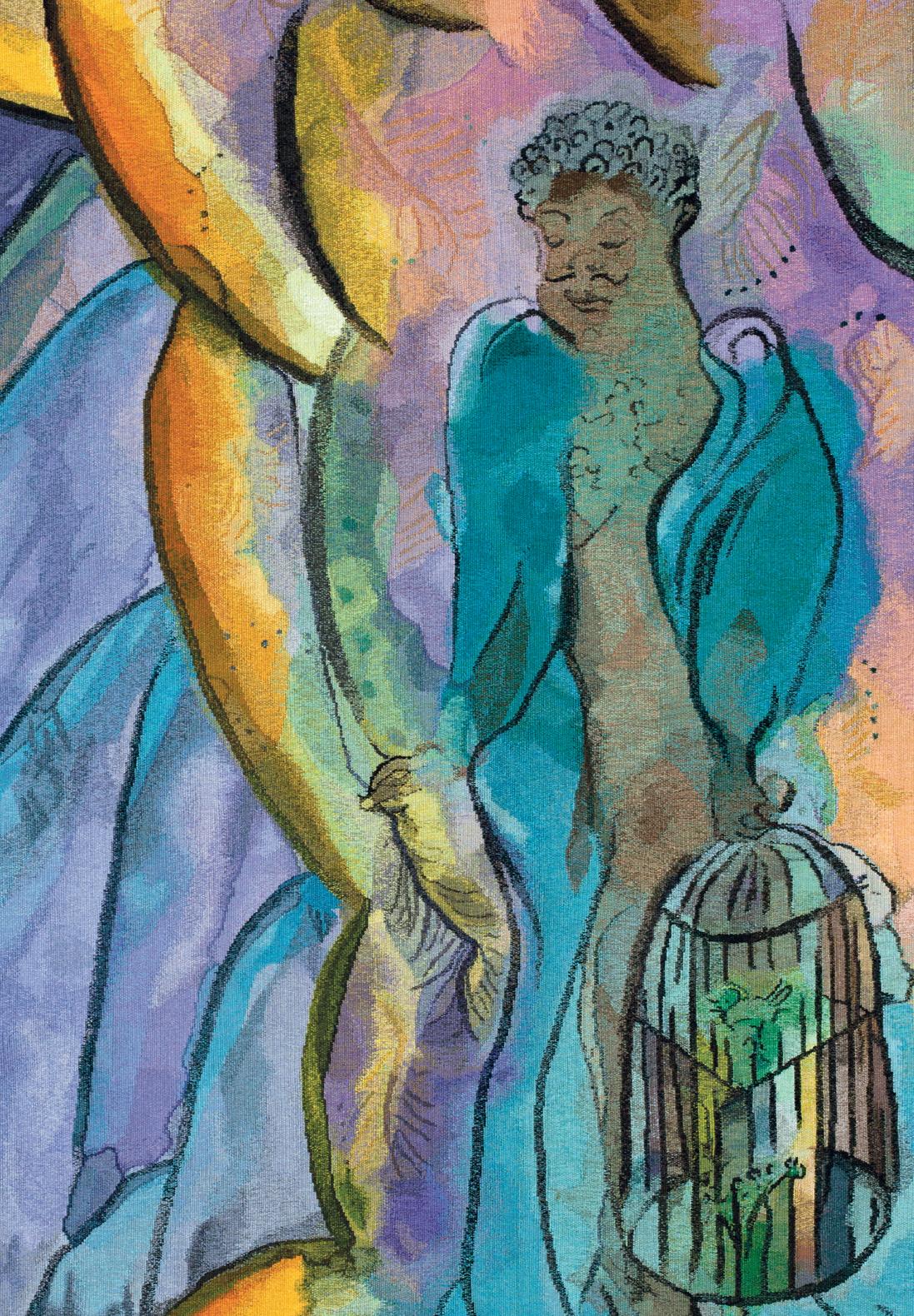











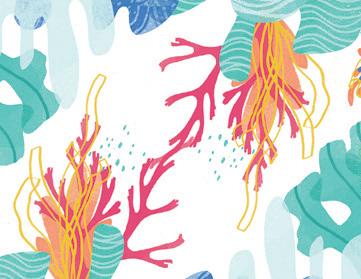















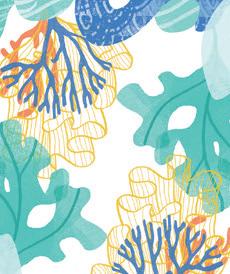





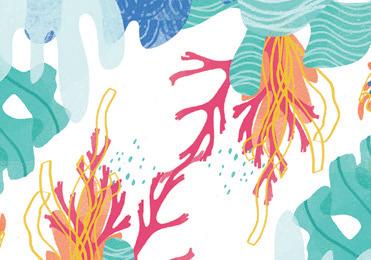
















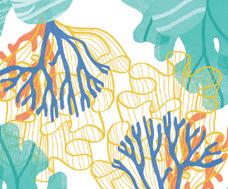














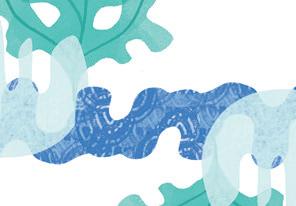


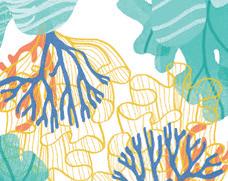






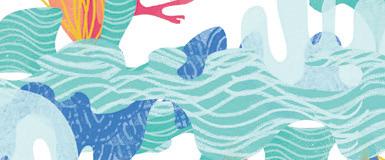












A Sufi sound artist and performer, Islam wears a burqa to convey her anarchy. She confronts Islamophobia and rejects the paradoxical myth of cultural assimilation. Made in collaboration with Kyalo Searle-Mbullu, Listening For Love explores their multicultural experiences of sound.
Glasgow-based artist Perry predominantly works with drawing. In partnership with four artists, she presents Where a castle meets the sky, an exhibition that uses autobiography to explore queerness and chronic illness.
Sculptor KO works with unconventional methods and media to reimagine the black female body. She creates larger-thanlife, glittery sculptures with irregular limbs that contradict western ideals. Teaming up with artist Kialy Tihngang, KO presents fir gorma, a research-led exhibition about black British history.
The self-described ‘audio investigator’ weaves together urgent political narratives to create sonic live performances. Abu Hamdan presents three Live Audio Essays which incorporate percussion, footage and sound design, all specially designed to support the audience to listen deeply.
Composer and sound artist Kali Malone has created a site-specific performance for Glasgow Cathedral. Her work animates the 12th-century building’s sonic, architectural and social history through experimental compositions.
Based in Glasgow, Rossi embraces collaborative performance and play to create space for social and political reimagining. All Walls Will Fall, a project that she’s involved in, is inspired by the Palestinian Resistance.
The Japanese avant-garde artist’s Wish Tree becomes a focal point of a new temporary orchard at the Glasgow Women’s Library. The garden has been grown for visitors to express grief and imagine peaceful futures.
Based in Shetland, Paloma describes herself as an artist, poet and trans witch. Working with Rabindranath X Bhose and Oren Shoesmith, Corpores Infames: Disreputable Bodies is a solstice ritual that explores what boglands can teach about deep time and the tyranny of productivity.
Built at the turn of the 20th century, Queen’s Park Glasshouse is located in Shawlands. During June, the dome hosts group exhibition Unnatural* Urges featuring Laura Lulika, Hang Linton, Jack Murphy and Clay AD.
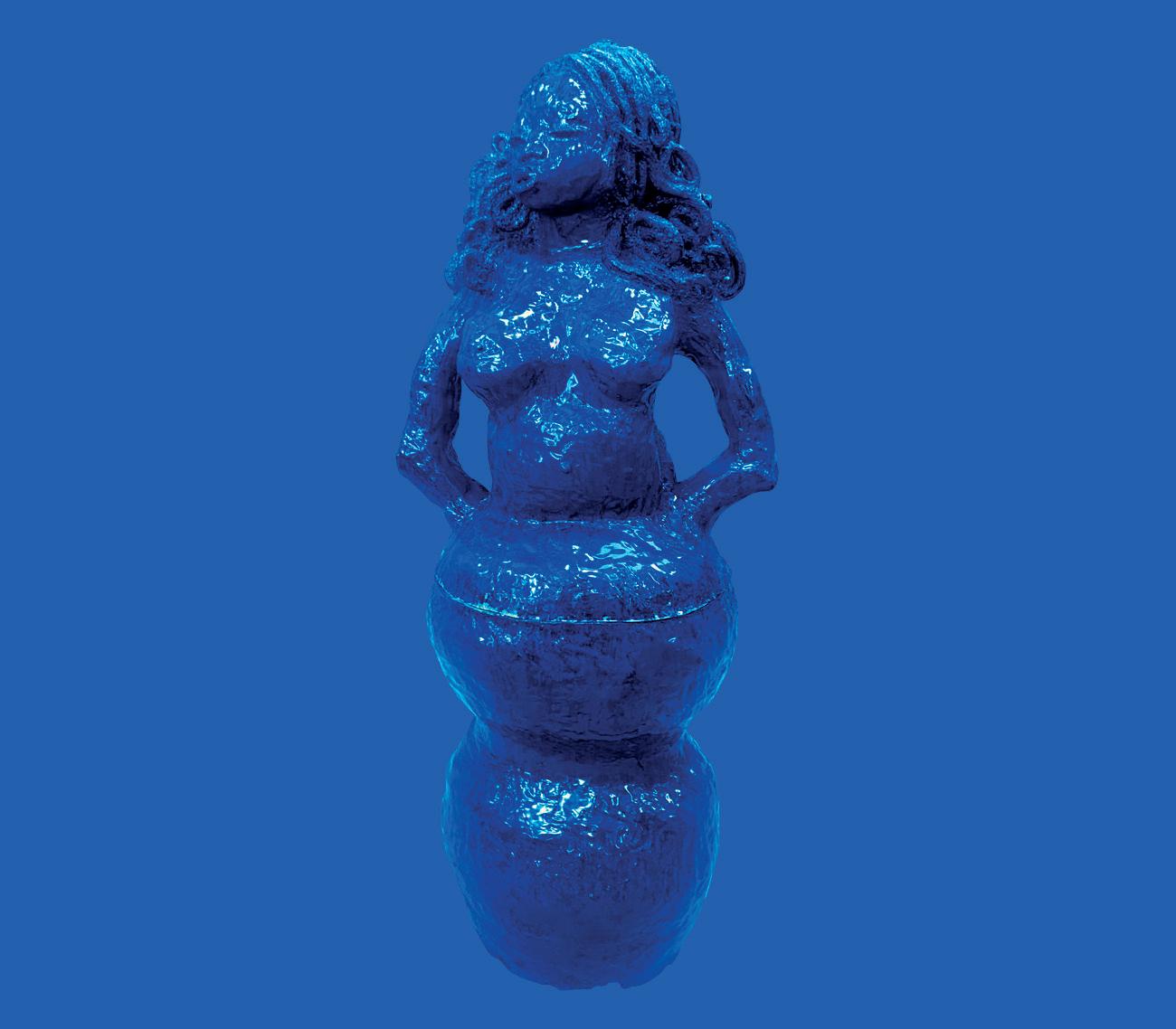



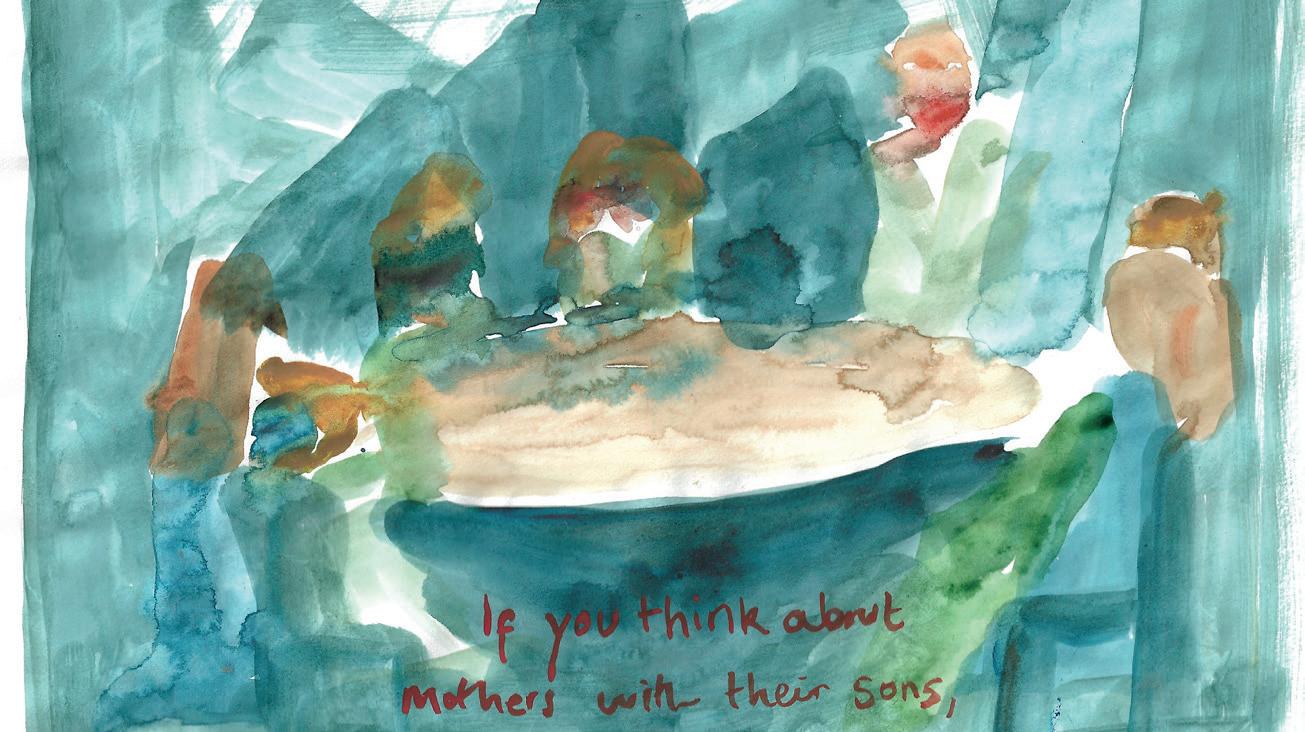


The small independent publisher reveals Teneu, a book of commissioned texts that probes the mythology of Glasgow city’s forgotten medieval mother, St Enoch. The publication interrogates the dominant mythological narratives and asserts St Enoch’s place in the city’s cultural fabric.
Writer and artist Simons investigates the histories of land and housing in the north of Glasgow. His new body of work, Beyond The Forbidden Gate, addresses suppressed workingclass histories and their relevance to contemporary social struggles.
Taal works with video, watercolour, installation and performance to destabilise historical records. After Kinte, her newly commissioned performance piece, takes place on five occasions throughout Glasgow International.
Glasgow Uni participates in The Open Museum, an ongoing project which takes kits containing objects from Glasgow Museums collections out into the community. The objects become a catalyst for storytelling and creative activities.
The artist collective cultivates new ideas and connections through encounters with artists’ film and video. The Vega Foundation joins forces with Assumption Studios and the Scottish Government’s EXPO fund to support the moving image exhibition, Anticipate, sublimate
Artist, horticulturist and co-founder of the Rumpus Room, Walker works with children and young people on collaborative art projects. For Loose Tomatoes In The Backyard, Walker teams up with fellow artists and children to cultivate, build, write, make and become the caretakers of the Rumpus Garden Club.
Dr Gao is a queer scientist, artist and film producer who additionally performs in artists’ moving images. He collaborates with Wei Zhang (among other queer East and South-east Asian creatives) to produce Wah Yen, a film that explores the perspective of a neurodivergent Chinese immigrant.
The artist, researcher and cultural producer experiments with movement, performance, film and text (to name a few) to examine our relationship with the body. She contributes to Yoruba Sonic, a sound performance event that explores Yoruba systems of knowledge and anti-colonial methods of pedagogy.
Along with her fellow co-curators Paria Goodarzi and Mia Gubbay, Italy’s Zappia presents Monuments For The Present. This open-ended project was created by members of the Maryhill Integration Network Art Group and invited dialogue around equality issues and public space.
Glasgow International, various venues, Friday 7–Sunday 23 June, glasgowinternational.org










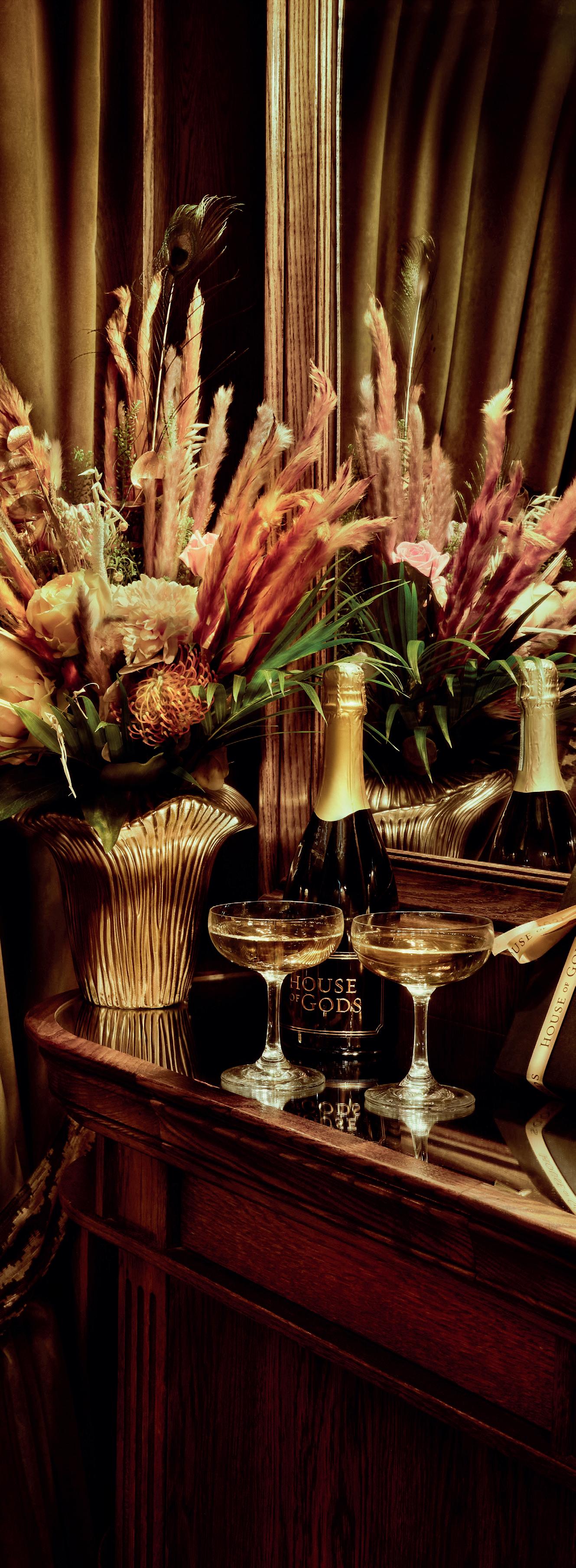


GGlasgow’s newest boutique hotel has naughty switches, butler buttons and a bath-sized champagne bucket. As Lucy Ribchester discovers first-hand, House Of Gods is a place to sample the opulence of old-world travel while having extravagant fun
lassford Street in Glasgow’s Merchant City is a workaday kind of place. Cars whizz past on their way to park at the NCP. A giant Nisbets sells catering equipment on the corner. There are a couple of bars that have seen better days. There’s no sign of anything unusual or extraordinary: until you spot the monkeys.
Two gold macaques, tails aloft, perch like footmen either side of a dark, glowing doorway in an Edwardian building. This is the entrance to House Of Gods, Glasgow’s brand-new rock’n’roll boutique hotel, and stepping across the threshold gives you a tiny taste of how Alice must have felt tripping into that rabbit hole.
The Glassford Street venue is the second under the brand from renegade Scottish hoteliers Mike and Ross Baxter. Their first venture opened in Edinburgh’s Cowgate in 2019, six months before covid all but shut down the hospitality trade. Yet despite this, the hotel went on to win Sunday Times Hotel Of The Year in 2020 and has been at almost 100% occupancy ever since. Inside, the Glasgow branch is glitzy, ritzy and just the right side of bizarre. At the reception desk, I loiter next to a life-sized gorilla, while a friendly receptionist fetches me a welcome watermelon tonic. She then leads me through a dark maze of velvet-cushioned doors to my room.
The suite I’m staying in is wood-panelled, bronze-glowing. It has a cocooning feel, which Mike Baxter, who designs the interiors himself, later explains is based partly on the old Orient Express train carriages. The lighting is so subtle and integrated it seems to emanate from the room itself, a bit like that briefcase in Pulp Fiction when it’s opened. Mirror tiles shimmer underneath the cornicing. 1920s-style shutters on the windows throw slices of film noir shadows across the four-poster bed. There’s a tiger-print sofa, a copper bathtub, more monkeys.
Further investigation reveals I have a butler button, enabling me to press for ‘Prosecco’, ‘Milk And Cookies’, or just general butlery, any time until 1am. ‘We wanted to create something that was super experiential,’ says Mike Baxter, as we chat in the bar downstairs, on velvet sofas printed with Tibetan tiger motifs. ‘Opulent, luxurious and decadent, a wee bit rock’n’roll and a wee bit wild. There are properties like that already, but they tend to be heritage hotels that cost all the money in the world.’
Budget travel has, Baxter believes, killed off the romance of the travel of yesteryear; though, as he points out, that was only ever ‘reserved for the rich and worshipped’. His aim was to create an environment that conjured up the essence of old-world travel, but without the price tag. Staying at House Of Gods is by no means cheap, he admits, but his plan was always for it to be accessible for special occasions and splurges.
‘I like the idea that anyone can come here, you can step into what is arguably quite a ridiculous sort of aesthetic and surrounding, and it’s immersive.’ What is pleasing about chatting to Baxter, aside from his refreshing enthusiasm for accessibility in an industry famed for its

Mike Baxter: ‘We’ll take you on a journey’
snootiness, is his wry awareness of the absurdity of his maximalist tastes. There are monkeys everywhere; perching on the bedside shelf, skulking in corners. The glass Sacred Garden rooftop bar boasts a whopping 3000 artificial flowers; meanwhile, behind us in the bar stands an Italian marble fountain, converted into a fireplace. How does Baxter carefully curate all these extravagant quirky touches and unusual objets d’art? Turns out he buys them while tipsy.
‘I bought that fountain in an auction outside of Rome,’ he points out. ‘I was drunk, and when I got it here I was like “what the hell do I need a fountain for? I haven’t got a garden.’” The same thing happened with the 900kg marble bathtub he just had to have. Originally destined for the presidential suite, the removers couldn’t get it up the stairs, so they had to leave it in the lobby, with Baxter telling his investors ‘I bought this incredible champagne bucket . . . ’
Baxter certainly understands the value of a story in building a hotel’s personality. There is a mystique about hotels, individualistic yet by their nature anonymous. Hotels have been used to intoxicating effect in film, from the baroque bustle of the Grand Budapest Hotel to David Lynch’s unsettling Lost Highway Hotel. It was a hotel that Agatha Christie disappeared to during the breakdown of her marriage in 1926 (The Old Swan in Harrogate) and a hotel in which Oscar Wilde lived out his final days (L’Hotel, Paris).
During the pandemic, when hospitality businesses were floundering, the newly opened House Of Gods in Edinburgh knew it had to do something to stay afloat. Unable to open the bar, the team came up with the idea of serving cocktails in the rooms with a theatrical twist. ‘We thought, let’s make it fun,’ Baxter recalls. ‘Rather than saying “I will deliver cocktails to your room”, we’ll take you on a journey.’ Covid guidelines were to leave drinks outside the rooms, so they decided to fill the corridors with smoke, place the drinks in skulls garlanded with flowers and blast rock music through the sound system. Now that tale is built into the hotel’s lore through the legacy of their in-room cocktail service, where a waiter shakes your drinks while spinning you a yarn about the cocktail’s origins. Stories feel as important to the House Of Gods ethos as its opulence. Yes, it’s beautiful and sensual, full of expensive things. But it’s also full of anecdotes and playfulness. The giant gorilla lounging in the lobby, I am told by Emma on reception, is called Joffrey, uses ‘she’ pronouns and may at some point have her own Instagram. Later, in bed, I flick what I think is the bedside light switch only for a red neon rim to light up the inside of the four-poster canopy. ‘Ah, you found the naughty switch,’ Baxter grins, when I mention it to him at breakfast. Back in the suite, in the interests of lifestyle journalism, I feel dutybound to try out that butler button. I feel extremely awkward summoning a butler. What does one do after pressing the button? Wait by the door? Sprawl across the four-poster bed? Will he knock? He knocks. He is friendly, polo-shirted. Pleasingly unbutlery. I ask for a cup of tea (The List is rock’n’roll, you know) which he brings me. And now I have tea and a four-poster bed with a neon-rimmed canopy, and for a brief few moments, the world is fabulous.
House Of Gods, 61 Glassford Street, Glasgow; 233 Cowgate, Edinburgh, houseofgodshotel.com

The warmer weather has finally arrived, and with it comes the opportunity to get out and about to explore some of Edinburgh’s best experiences at Johnnie Walker Princes Street.
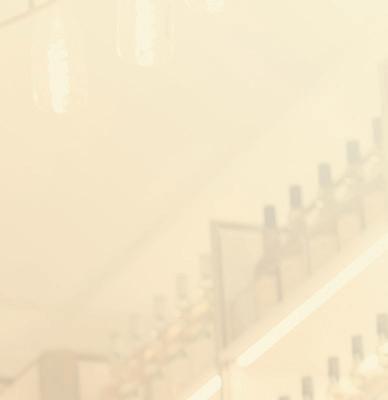
There’s no better way to kick off your Johnnie Walker Princes Street adventure than experiencing the immersive Journey of Flavour tour. Here, whisky lovers and those looking for a fun day out, will spend 90 minutes enjoying a sensory adventure that unveils the incredible history and flavours of Johnnie Walker, while sipping on three personalised whisky drinks or non-alcoholic options.
Bit of a foodie? Why not mix things up and try STIR, the ultimate whisky and small pairing plates experience held in Johnnie Walker Princes Street’s Explorers’ Bothy Bar.
Shake up what you know about whisky and pairing plates at STIR with a menu of micro dishes and cocktails which have been designed to challenge preconceived conceptions of what should and should not be on a whisky and pairing plates menu while the STIR team regale diners with unique stories from the menu’s key whisky distilleries.
From Johnnie Walker Blue Label Elusive Umami paired with Verbena Jamon to the Caol Ila Distillers Edition paired with Sloe Caol Ila Ice Cream, this is an experience which truly offers something different to anything you’ve tried before.


The award-winning venue, sponsoring Pride Edinburgh again this year for the second time, is located perfectly in the centre of Edinburgh’s west end, making it the perfect spot for a casual summer dinner and drink atop the 1820 Rooftop Bar boasting one of the city’s best bird-eye views, or a chance to delve into the world of whisky for unique tastings, pairings and much more.
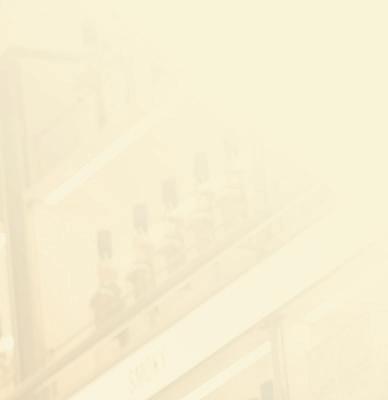
Book now and add whisky adventures to your summer itinerary at Johnnie Walker Princes Street: johnniewalker.com/en-gb/visit-us-princes-street/book-whisky-tasting/
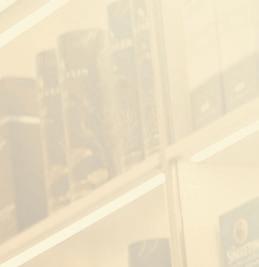
On June 21 and July 19, guests will have the chance to explore three special whiskies from the Scottish Lowlands at A Celebration of Lowland Whisky experience from the retail area of Johnnie walker Princes Street.
A key region for whisky distilling, yet often overlooked, this tasting has been created to give guests a personal insight into the gentle and refreshing drams that define The Lowlands area, including Cameronbridge and Glenkinchie.
Johnnie Walker x Harris Tweed Deconstructed Tasting (£22 pp)
Pay homage to two iconic Scottish brands at the Johnnie Walker x Harris Tweed Deconstructed Tasting on June 28 and July 26. At this tasting, visitors will savour the Johnnie Walker and Harris Tweed bottling, finished in American oak casks in the cellar of Johnnie Walker Princes Street, as well as the Cardhu 18-Year-Old and Cameronbridge Special Release 2022.
and the Chocolatier
Available all summer long is the Johnnie and the Chocolatier Tasting where you’ll enjoy a tasting of four iconic Johnnie Walker drams, each accompanied by a luxury chocolate truffle from Iain Burnett, the Highland Chocolatier. You’ll also be treated to a refreshing highball, made with a blended whisky, beautifully crafted by Master Blender Emma Walker and exclusive to Johnnie Walker Princes Street.
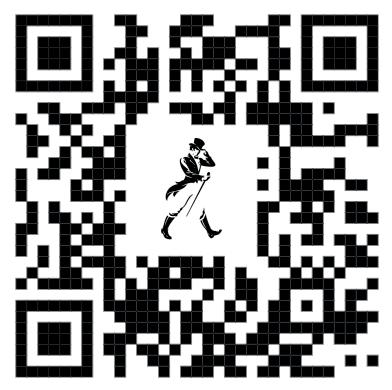
Johnnie Walker Princes Street also boasts an incredible retail store filled with an array of popular and exclusive bottles and merchandise. Pick up Johnnie Walker Princes Street’s exclusive seasonal whisky blend, with the Spring/Summer bottling currently available. Hand-fill your own bottle or have it engraved to make it extra special as a gift, or a treat for yourself.
Newport’s David Anderson Marine, on the banks of the Tay, provides a picturesque background to watch Germany host Scotland on a big screen when the men’s Euros open. Creators Le Freak & Friends have previous, running an annual charity Pier Party at the site, so it promises to be a slick affair. Scottish Street Food Awards finalists The Cheesy Toast Shack will diversify into bratwursts, Leuchars-based Salt & Pine provide pizzas and loaded fries, and CoelBrew from St Andrews will pour their gluten-free beers. Let’s just hope they’ve optioned the later dates for when Scotland make their inevitable run to the knock-out stages . . . (David Kirkwood) n David Anderson Marine, Newport, Friday 14 June, @lefreakandfriends on Instagram.
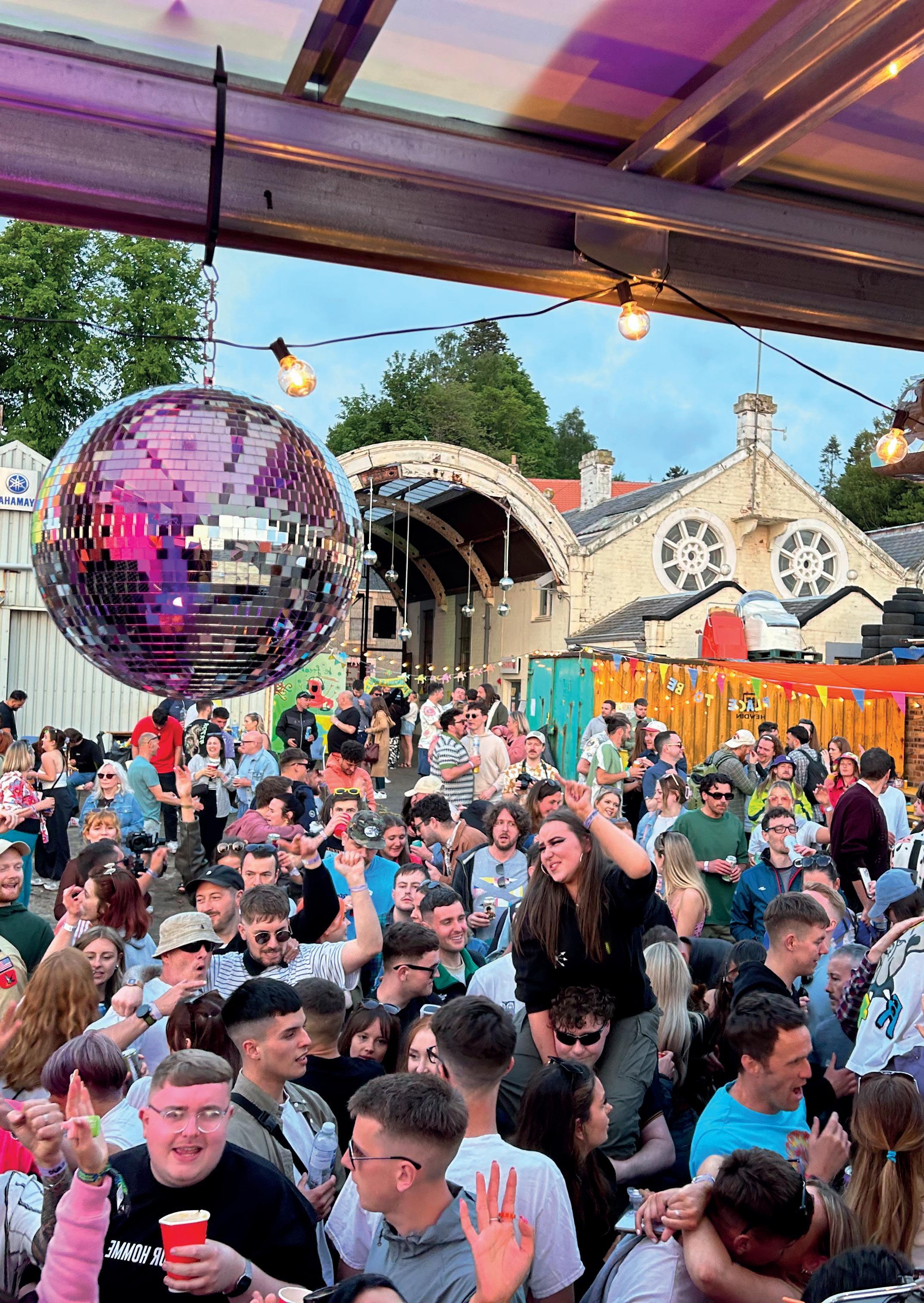

Pop-ups, residences and kitchen takeovers: we’ve seen them all. But David Kirkwood finds something altogether bigger is happening on Glasgow’s Southside


ollabs have long been the name of the game in hospitality, ranging from one-night-only guest-chef supper club situations to long-term kitchen takeovers between (usually) bars and street-food operators. But one recent partnership is on a totally different scale. Phillies Of Shawlands (a throbbing beast of a bar already ensconced in the Southside) and Finnieston’s Five March (equally beloved for its take on Mediterranean-Asian fusion small plates) announced that the latter would take the reins of Phillies’ kitchen on a permanent basis. And so, on 5 March (nicely done), Five At Phillies was launched.
‘We had a good steer on what we wanted to offer,’ explains Phillies’ general manager Laura Hughes. ‘But we wanted to delve a bit deeper, for Phillies to benefit from an out-and-out restaurant’s strengths in bringing something even stronger to the Southside.’ The bar’s success came from its community focus and ability to cater to a broad church of customers, something the previous menu reflected. Now, it’s a more refined eating experience, with a subtle separation of dining and bar spaces, and food bearing those hallmarks of the restaurant’s standalone spot in the West End. Think coley with Asian greens and bonito flakes, or confit chickpea fritters in a romesco sauce and parmesan crumb (plus the legendary Five March fried spuds). Menus will also change more frequently than is usual for a bar.
Yet the overall energy of the bar still defines its vibe. ‘We’re essentially creating a new brand,’ observes Hughes. ‘Phillies takes care of the well-curated and lively atmosphere. At a restaurant, you finish your meal and go somewhere else, but here the evening’s just about to get going, though we’ve asked our DJs to rein it in a bit until dinner service is over now.’ This curation reaches new levels with the addition of Curious Liquids, the artisan wine, beer and spirits shop that trades from the front part of Phillies’ space. They manage the wine list for Five At Phillies, and their wines are also available for a corkage fee.
‘That’s always been the case,’ explains Curious Liquids’ owner Dayton Joline, ‘but it’s only with Five At Phillies’ more food-focused offering that it’s started to take off.’ So a customer might sit down for dinner and choose from Phillies’ fully fledged cocktail list and 18 draft/craft beer lines, and then have access to a 100-plus bottles wine selection. Very impressive. But how have their regulars dealt with the change? ‘We’ve got such an established customer base, and they will tell you if they don’t like something,’ Hughes laughs. ‘Some of them just needed to see that it was still the personality of Phillies; only now we can drive the most elevated dining experience available in a bar setting.’
Five At Phillies, 1179 Pollokshaws Road, Glasgow, fivemarch.co.uk/five-at-phillies
It’s open season on new establishments as Jo Laidlaw samples everything from transformed chippies to long-awaited tasting menus
Openings, openings, you can’t move for openings. Starting strong in Edinburgh, Leith Walk stalwarts Vittoria have had a spring shuffle, refurbing Vittoria On The Walk and opening Brunswick Book Club, a day-into-night café/bar/restaurant. Six By Nico are expanding, with plans to open the city’s second flagship space on Queensferry Street alongside new cocktails concept Somewhere By Nico. And Under The Table is open, a casual, bistro-style little sister to The Table on Dundas Street (and yes, it is underneath).
After a series of previews, Michelin-starred San Franciscan chef Rodney Wages has fully opened the doors to Avery. The tiny Stockbridge restaurant will offer a 15-course tasting menu (dinner only). Meanwhile, at the other end of the road, The Neighbourgood Market is back for its traditional pre-Festival run at the Accies’ ground; expect all your favourite street-food traders over three cycles plus live music, quizzes and craft markets (until Tuesday 30 July).
Baking is the name of the game in Glasgow. Lagom Bakery is the latest spot from the gang behind La Pastina; their brunch bowls look like little circles of joy, but do leave room for the excellent cakeage. Cult cookie stuffers Full Circle Bakes are on the move to a brand-new, much bigger bakery on Victoria Road. Due to open early this month, the new location will have indoor and outdoor seating too. Staying south, The Old Fish Bar is now open. This former chippy has been transformed into a cocktail bar, with a short and sweet tapas menu keeping the focus firmly on seafood.

We wander through a neighbourhood and tell you where to drop in for food, drink and groceries. This month, Jay Thundercliffe takes a stroll through Glasgow’s Woodlands
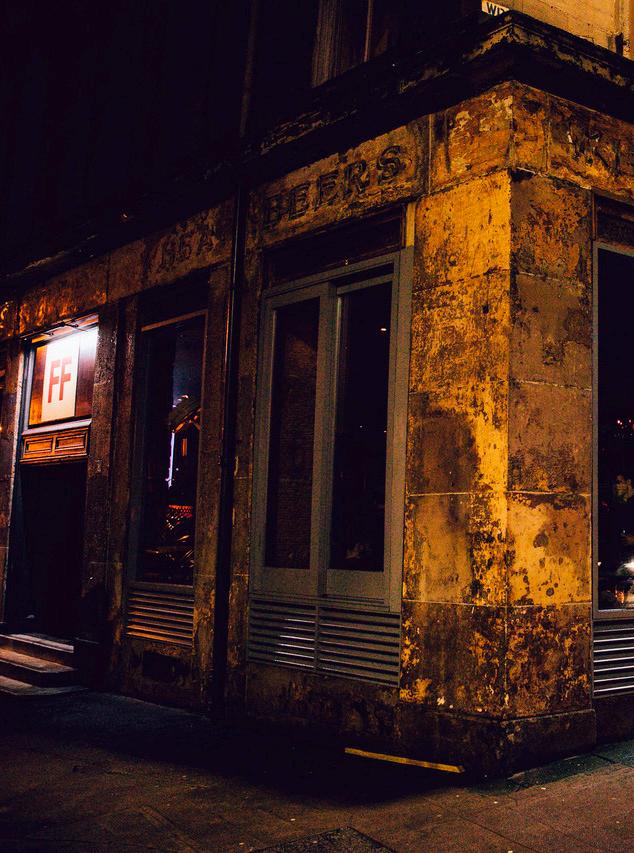
The Woodlands area, wedged between motorway, Great Western Road, the Kelvin and the posh Park District, is a genuinely bohemian, multicultural part of town. There’s a strong sense of community (check out the thriving Community Garden) and a wealth of bars, restaurants and cafés, most lining the main artery of Woodlands Road.
To sample some of the top East Asian diners in Glasgow, head along to St George’s Road on the M8 perimeter. Satu Satu does Malaysian food plus more Asian desserts than anywhere else in town. Further down the road is Ka Ka Lok which lays on straight-up Chinese, next to Same Same serving up ChineseMalaysian, while around the corner is Japanese cuisine at Don Ya Sushi
The student population makes up a chunk of residents, feeding a lively bar scene. The Drake excels at a village-pub-in-the-city feel, with real fire, lazing dogs and Sunday roasts, while upstairs, sister venue Hooligan focuses on cocktails and small plates. Whisky fans can eye-up the 70-plus malts at Dram!, while the great-grandaddy is The Arlington Bar, self-proclaimed home of the Stone Of Destiny and nononsense old-school boozer for folk who appreciate pubs unadulterated by modernity.
The long-standing food-truck spot at the petrol station is currently home to Mrs Falafel and her delicious Levantine street food. For imaginative vegan and veggie dishes, check out laid-back Sylvan, who also do a great selection of natural wines, with loads by the glass and some for carry-out. For a meaty fix, El Perro Negro is one of Glasgow’s top burger specialists, while Finsbay Flatiron is the place for casual steaks and lively cocktails.
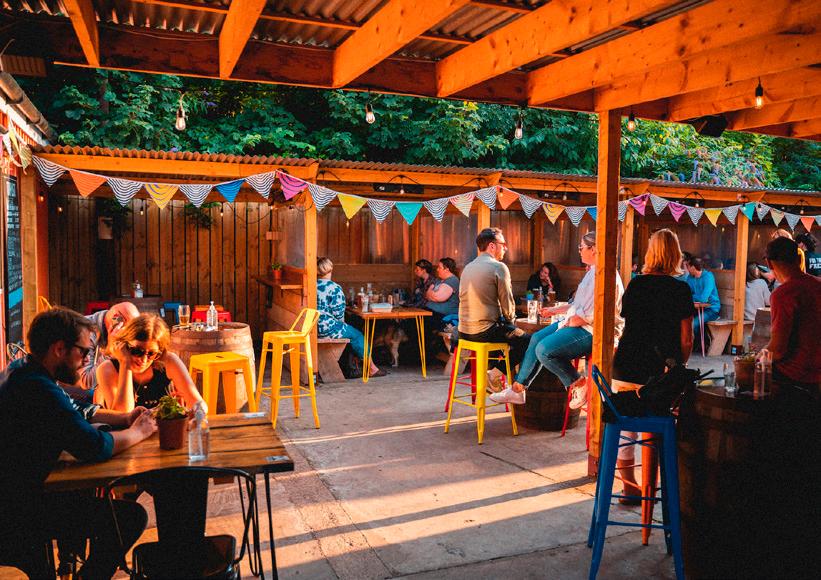
Our tipLIST suggests the places worth knowing about around Edinburgh and Glasgow in different themes, categories and locations. This month, we’re gearing up for a summer of competitive spherical-shaped object-kicking by asking: where’s good for watching sport?

BELLFIELD BREWERY TAPROOM & BEER GARDEN
46 Stanley Place, bellfieldbrewery.com
A veritable shanty town of outdoor wooden booths and barrel seats. A huge screen and projector will display the Euros, fuelled by their excellent selection of brewed on-site craft beers and pop-up food offerings.
BELUSHI’S
32–34 Market Street, belushis.com/edinburgh-old-town
Part of a chain of hostel bars, Belushi’s show all the big sporting fixtures: not just football and rugby, but American football, basketball, ice hockey, and even the Indian premier league. Food is basic bar fare but there’s an electric atmosphere on game days.
THE BOTHY
18 Corstorphine Road, themurrayfieldhotel.co.uk/the-bothy
Given its proximity to Murrayfield, The Bothy is unsurprisingly mostly a rugby bar, but they will show the Euros on their screens this summer. A swanky interior makes for more of a restaurant feel, serving scallops, steak and gnocchi.
THE GOLF TAVERN
30–31 Wright’s Houses, golftavern.co.uk
Established in 1456, this is one of Scotland’s oldest eating and drinking spots. You can golf for real on the pitch’n’putt course outside (just like in 1717), but they also have big screens showing major sport fixtures, including (of course) the Masters and the Open.
THE TOURMALET
25 Buchanan Street, facebook.com/thetourmalet
Tucked off Leith Walk, The Tourmalet has plenty of character. If you’re not there to watch the stages of the Tour De France, Giro d’Italia or La Vuelta, there’s a mesmerising tropical fish tank to observe. (Suzy Pope)
BAAD
54 Calton Entry, baadglasgow.com
Both event space and courtyard bar, BAaD shows most Scottish and English men’s football, some women’s games, and Formula 1. Bench-style seating makes it particularly suited to big groups, while burgers, shawarmas and pizzas from sister venue Nonna Said will appease most appetites.
BAG O’ NAILS
165 Dumbarton Road, bag-o-nails.co.uk
A rowdy Westender where major rugby and football plays on the big screens; an even larger one rolls down from the ceiling for the biggest matches. Their menu stays abreast of food trends, and dishes like an impressive birria beef mac and cheese and lamb gyros prop up the nachos and pizzas.
THE CORONA
1039 Pollokshaws Road, corona-bar.com
This long-time Shawlands Cross boozer changed ownership at the end of 2023 and their food offering is heading towards a quirky trajectory of gochujang chicken bao and meatball subs. The pub is big, with lots of nooks, crannies and alcoves to watch your team.
ST LUKE’S & THE WINGED OX
17 Bain Street, stlukesglasgow.com
Pretty close to watching sport in a North American dive bar, with TV screens amid neon signs, showing football, rugby, major golf, Wimbledon and the Olympics. Expect decent craft beers and a menu of dependable Americana.
THE TAP YARD
17 Bell Street, tapyardglasgow.com
A genuine sports bar, showing all sorts of different events (at the same time if necessary). There are loads of large screens plus individual ones at bookable tables (you can get your own beer tap as well). Football will always dominate but if you pop in during the day you’ll see badminton, cricket or athletics. (David Kirkwood)
Kevin Pigott, Tullamore
DEW Irish
Whiskey Global Ambassador, picks out three bars for watching sport in Edinburgh

1–3 Angle Park Terrace, athleticarms.co.uk
Athletic Arms, aka Diggers, is an institution that is well worth a visit for any sporting occasion. It shows everything from darts to dogs: what more could you want? It has a wonderful whiskey offering at great prices and when you see folks in high vis and suits in the same bar, you know you’re in a solid melting pot.
MALONES EDINBURGH
242 Morrison Street, malonesedinburgh.com
I had to pick an Irish spot . . . and this is a great place to watch the football, have a lovely pint of Guinness and a drop of Irish whiskey. It really is one of the Irish gems in Edinburgh, the type of place where you become friends with the bartenders as soon as you walk in the door. Good fun and up for a laugh, it’s the perfect bar to watch Scotland v Germany in the Euros.
TEUCHTERS BAR & BUNKER
26 William Street, teuchtersbar.co.uk
Enjoy a game of ring toss (throwing hoops at your favourite whiskey on the back bar in the hopes of hooking a high-end dram), watch your team and revel in the atmosphere, all surrounded by an impressive whiskey selection for celebrating a win. Located in the West End, it’s ideal for grabbing a pie and soaking up the cosy, lively vibe surrounding a good game.
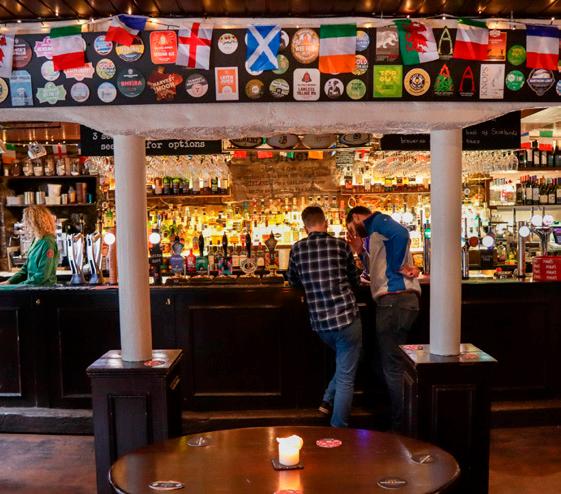

For years, Bruntsfield’s Leftfield has delighted diners with delicious seafood and permanent house-guest conviviality. Now sassy younger sister Margot, by the same family team, is finding her own identity just around the corner. During the day, there’s a relaxed café vibe for coffee or brunch: try the croque Margot of pancakes, fried egg, spinach, béchamel and roast ham. In the evening, return for 23 wines by the glass (mostly organic and from small producers) and a menu of ten small plates. Each makes a delightful accompaniment to an aperitif, so take a friend and order half a dozen for the full experience.
Like Leftfield, sustainable seafood is a specialty. Cumbrae oysters with balsamic vinegar and jalapeño are a lip-smacking triumph, while an enormous langoustine comes with red pepper sauce and a little chilli. Cured halibut combines beautifully with wild garlic, seaweed, ponzu and chives; Scottish smoked trout is whipped with organic crème fraîche and dill, served in a pleasingly big scoop on a wedge of Company Bakery toast. Vegetable dishes are equally complex: slow-braised fennel sits on wild garlic hummus; tender broccolini is glazed with tequila and served with smooth salty ricotta. A generous bowl of tangy St Andrews cheddar with home-pickled onions is a perfect cheese course: no fuss, just flavour. For dessert, a rich dark chocolate and raspberry tart has crisp pastry and a hint of sea salt, served with soft burnished meringue and a sauternes syllabub.
Wines are accessible yet surprising. There’s a juicy, complex and hardto-find zelen from Slovenia as well as a Portuguese pet nat with gentle sparkle and crisp acidity, while Les Prunes is a beautiful rosé made with mandó grapes. The team’s enthusiasm is infectious, leading to brilliant pairing recommendations and a relaxed evening of food and wine. (Ailsa Sheldon)
n 7–8 Barclay Terrace, Edinburgh, margotedinburgh.co.uk; average cost for three small plates and a glass of wine £32.


From the folks behind Topolabamba and Chaakoo, Zhima has transformed the ornate Glasgow city-centre spot vacated by Prezzo. There is mystery here, disorientation even, as dark wood blends with mirrors and large decorative screens, partially obscuring segregated dining sections across the two floors. And there is gold too, enough to conjure Midas: sit on gold chairs, touch gold cutlery, look at displays of gold artworks and masks.
Staff in black suits swish between tables and a blingy (gold) bar that dishes out satisfying cocktails. The house Margarita is clever, with spicy Sichuan seasoning and nutty notes from sesame-washed reposado. The on-tap beer, Hong Ba, is made in Glasgow and is a decent stand-in for unavailable Tsingtao. Cantonese and Beijing cuisines are well represented in the familiar sesame toast, sweet and sour dishes and Peking duck. Bolder Sichuan cuisine is here too in kung pao dishes and tender ribs packing a wee punch. The Hunan region is tasted in Qianlong wan ji: rice with minced chicken in spicy(ish) sauce, with crisp garlic slices adding lovely pungent crackles. Milder Huaiyang food is also found, with enjoyable lion’s head meatballs (light pork and chicken balls, fragrant with ginger and fennel, in satay sauce).
Then Japan gets a nod with oyster mushroom tempura: a bit batterheavy and needing dipping sauce. Mongolia pops up, with moreish wok-fried tender beef in sweet soy sauce. There are hints of Malaysia and of Indonesia, too. It all starts to feel a tad scattershot with crowdpleasing choices somewhat trumping further delves into China’s fascinating cuisines. (Jay Thundercliffe)
n 35 St Vincent Place, Glasgow, zhima.co.uk; average cost for starter, main and side £34.
Indian Street food, tandoori grill, curry’s, fresh mocktails and more...
ORDER ONLINE FOR EXPRESS DELIVERY
BYOB DINING CATERING EVENTS 10 Antigua Street, Edinburgh, EH1 3NH
Marinated lamb shank finished off in the tandoor (a true Punjabi speciality)
kahaniindianrestaurant







He’s barred from bars in 32 counties for crying too loudly about his wife leaving him, and he’s never even been married. Kevin Fullerton is back to howl another drinking game into the void and onto these pages. This month’s challenge . . . hide in the best auld man’s pub in Glasgow
This morning, I looked in the mirror and found my long lustrous locks had disappeared. A squat, bald man stared back at me. My beard had turned into a shock of white, almost as though I’d killed someone the night before and the guilt had stained my follicles to a deathly pallor. But, of course, that didn’t happen. I’m a mere innocent reviewer hiding out in (I mean reviewing) a series of auld man’s pubs in Glasgow, a light-hearted puff-piece peddler whose white hair is a mere fluke of nature. And if this article happens to form a credible alibi regarding my whereabouts, then that’s simply a happy accident.
First, I secreted myself in The Laurieston Bar, a social club-cum-art hangout kitted out with authentic 1960s décor, photo collages of past punters and striking paintings. There’s something about the effortlessly attentive staff that makes a stay here relaxed; less like customer service and more like a pal you haven’t seen for ages. I could have stayed for hours but as I was on the lam (I mean reviewing other bars), it was time to move on.
I covered my tracks and headed to The Scotia Bar, one of the oldest pubs in Glasgow. Lurking in the corner of a gorgeous low-ceilinged relic, it was easy to be impressed by how this haunt on the outskirts of Merchant City is totally uninterested in attracting tourists. Instead, it’s content to be a welcoming spot for locals, with staff who’ll be your best pal if you’re nice and your worst enemy if you cross them.
I finally calmly sauntered (scarpered) to The Horseshoe Bar, which has the longest bar in Europe. Its clientele was a curious mix of older men and younger students, although its varied menu made it easy to see why; this was a city-centre pub appealing to a broad church. It was then I remembered the concussion I received the night before while watching an episode of Twin Peaks and dipping my beard in white emulsion paint (a hair-strengthening tip I found from a TikTok video with a mere 14 views). Phew, I hadn’t murdered anyone! And that, ladies and gents, was the end of that.
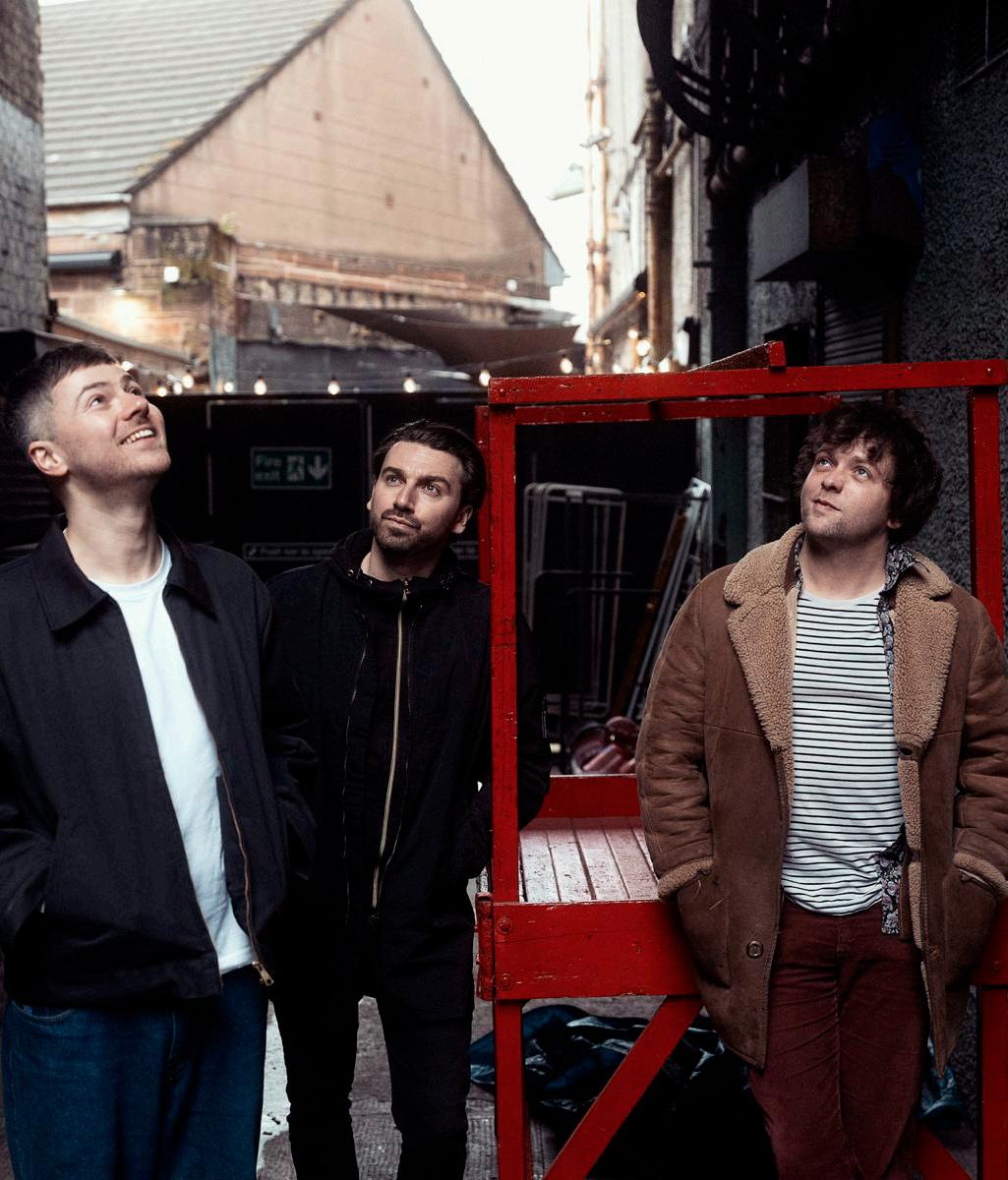

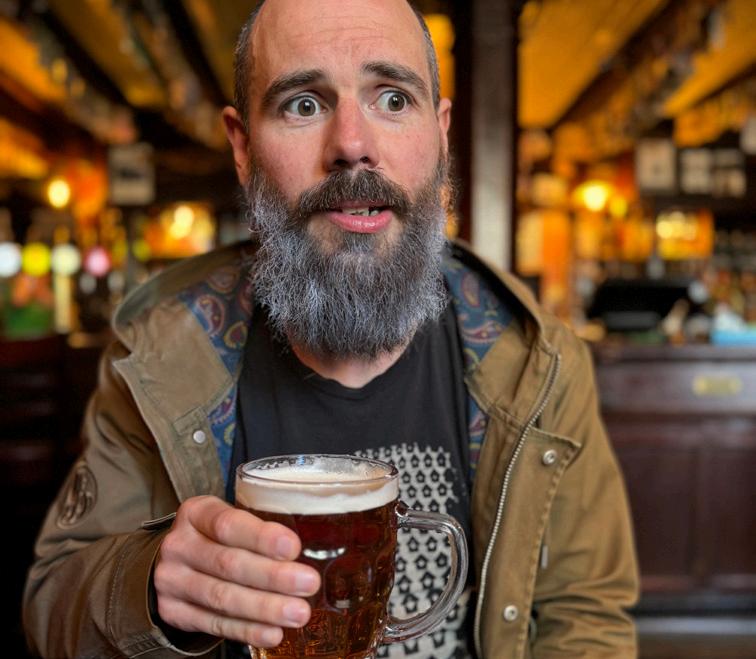
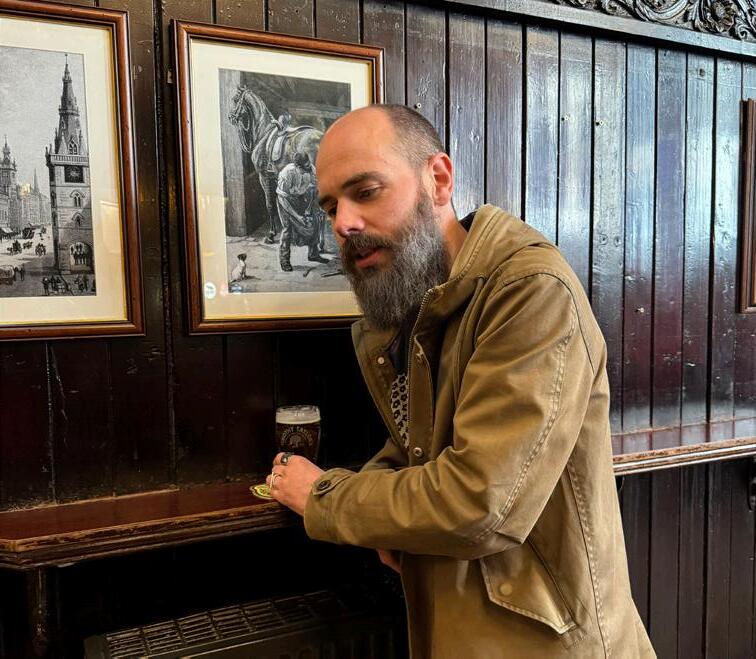
The King Lud, situated in the delightful and vibrant hamlet of Craigneuk, is my favourite pub. Nestled between the modern metropolises of Motherwell and Wishaw, it hosts the best of both towns’ folk and also attracts many others from all over with its welcoming and youthful atmosphere. A wonderful pint of lager and an extensive cocktail list greets whoever crosses the boozer’s threshold, as well as Buckfast on the gantry for those who dabble. One of the best beer gardens I’ve ever seen awaits sunseekers and, sometimes when conditions are right, you could swear you were on the French Riviera. Many current barflies are ex-workers of the steelworks at Ravenscraig and most people have some connection to it. They will happily bestow tales of the olden days on anyone who would like to know more about its fascinating history. Some of the best people in the world.
n The LaFontaines play Church, Dundee, Sunday 16 June; Tunnels, Aberdeen, Monday 17 June; Sneaky Pete’s, Edinburgh, Tuesday 18 June; new album Business As Usual is released by SO Recordings on Friday 14 June.
Located on Edinburgh’s Princes Street, Japanese clothing brand Uniqlo’s flagship Scottish store offers simple, top-quality casual gear designed to last. Whether it’s waterproofs, workwear or summer linens, Uniqlo does comfortable yet elegant wardrobe staples better than most high-street retailers. Longevity is key at their Edinburgh shop, which is introducing the RE.UNIQLO studio, a place for customers to alter and upcycle their Uniqlo items with various embroidery methods. This new store also features a Japanese tea room as well as a library curated by the capital’s own Golden Hare Books. (Isy Santini) n 64 Princes Street, Edinburgh, uniqlo.com


As she travels down Amercia’s west coast, Becca Inglis takes a magical mystery tour through San Francisco, Berkeley and Oakland. On almost every corner is a slice of music history
Abattle of ideals wages in the San Francisco Bay Area. Lured here by its bohemian legacy, tourists come primed to uncover the ground zero of beat poetry, hippie culture and countless music careers, from Jefferson Airplane to Tupac Shakur. That old world is fading now, to hear the locals tell it, edged out by Silicon Valley’s impossible wealth. Yet 1967’s philosophy still persists. ‘You go to New York to get rich, LA to get famous, and San Francisco to be yourself,’ one cab driver intones, quoting a wizened flower child he once ferried.
Endangered it may be, but San Francisco’s old bohemia soldiers on, fuelled by a love for music. In the heart of Chinatown, close to City Lights bookstore (Jack Kerouac’s old haunt), a man blasts soul from a boombox strapped to his wheelchair. An elaborate drum circle erupts in Golden Gate Park, beneath a slope known as Hippie Hill; players have met here every weekend since the Summer Of Love.
We enter Haight-Ashbury at the park’s edge, passing the Jimi Hendrix mural and Amoeba Music (whose Hollywood branch is the world’s largest independent record store) in search of the Grateful Dead House, where the band lived in the 60s. We find a tall townhouse on an even taller street, built in distinctive Victorian style and painted a soft charcoal black. Determined to discover the contemporary scene, we head to Bottom Of The Hill, an iconic gig venue Rolling Stone calls



‘the best place to see live music in San Francisco’. Tonight is billed as emo, skater doom and post-grunge, with ‘grunge poet’ AP Tobler topping the list. Rainbow flags salute their largely LGBTQIA+ fanbase, who tirelessly mosh at the foot of the stage. ‘We write songs about wanting to die and stuff,’ Tobler murmurs into the mic, perfectly embodying midnoughties emo angst.
The next day takes us over the Golden Gate Bridge into Berkeley to navigate a self-directed tour through Green Day land. Band logos plaster 924 Gilman Street, the punk-rock venue frequented by the band as teens, while Fantasy Studios (where Dookie was recorded) is now shuttered. Above the door of Oakland Guitars (previously Broken Guitars, owned by Billie Joe Armstrong), we spot a Scott Hutchison sticker: the store’s new owner is a fan.
Five miles south is Oakland, where Tupac called home after breaking through with Digital Underground. His old apartment still sits on MacArthur Boulevard, a section of which has now been renamed Tupac Shakur Way. We stop by en route to Oakland Museum Of California, where celebrations for hip-hop’s 50th anniversary are underway. Locals of all ages form an amphitheatre around a DJ mixing glitchy breaks. In fading light, toddlers spin alongside older hip-hop heads, the old guard teaching them the steps.
visitcalifornia.com


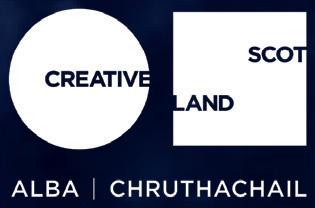

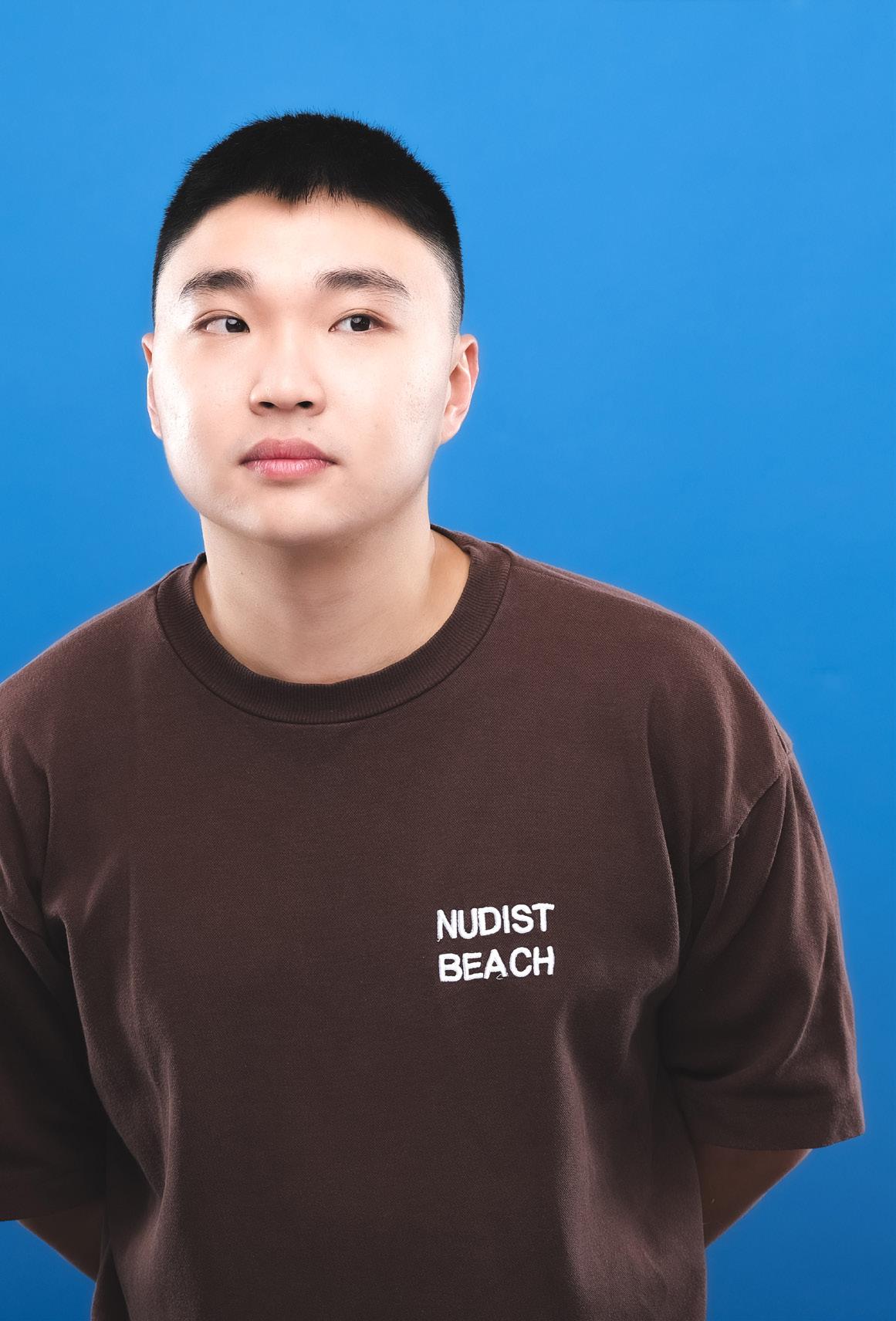
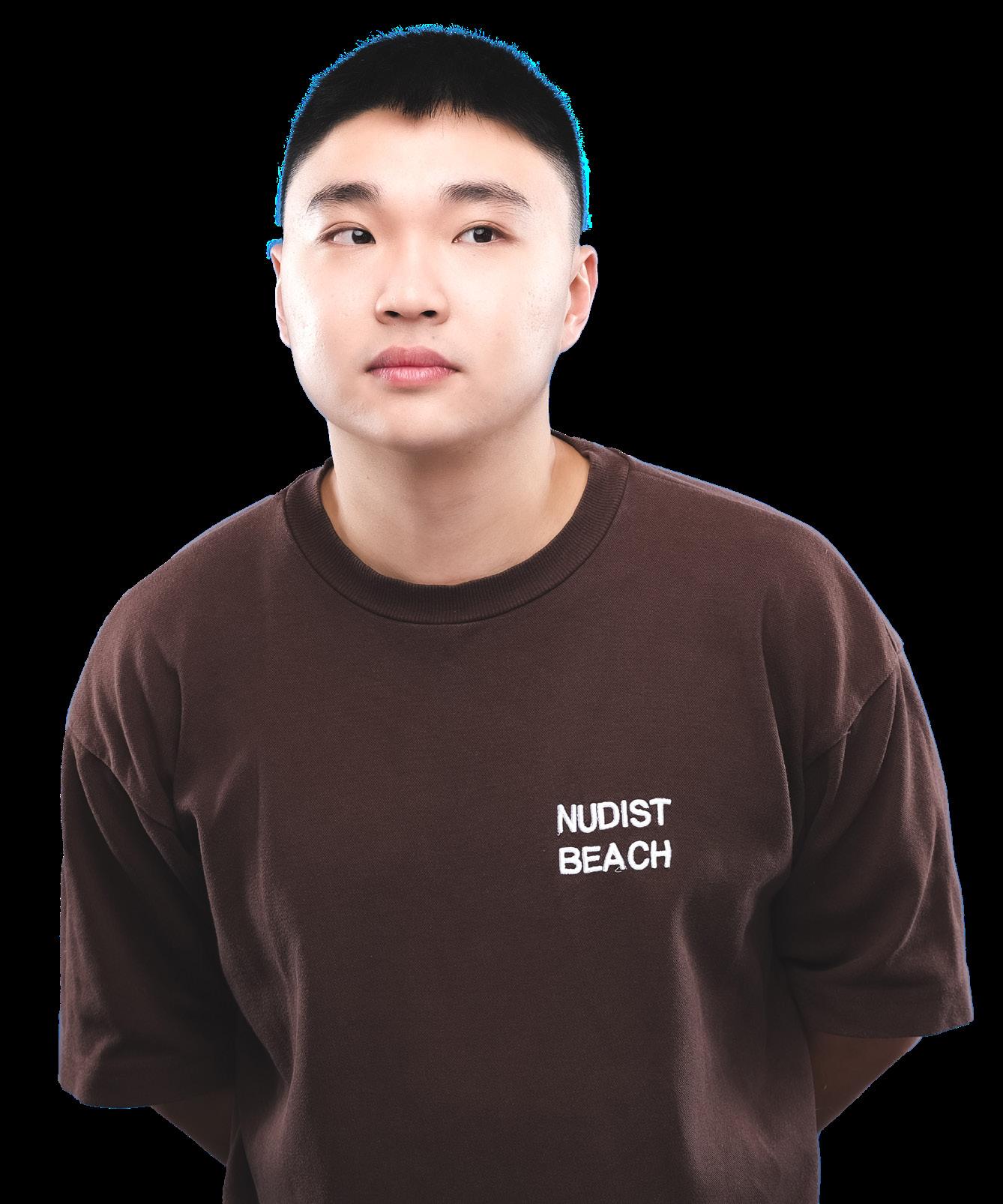
Comedian Jin Hao Li recalls a memorable trip to Skye that took a filthy turn
During a hike on Rubha Hunish, the northernmost point on the Isle Of Skye, I decided to wander off ahead of my two friends, like a pioneer (or a child saying to the world ‘look at me, I’m walking alone!’).
I was a couple of steps away from the cliff edge and I could smell the sea. The horizon was just about to enter my view when I stepped in mud . . . and sank an entire leg into the ground. Like a good improviser, I took another step and sank half of the other leg. As I was being rescued by Isobel, Amelia filmed the ordeal while informing me that this trap was indeed called a peat bog (I didn’t know there was a harder level of mud).
The frustrating part wasn’t the smell or the dozens of flies suddenly so excited to hang out. It was that I couldn’t find any humour or symbolism in this. There was no moral, there was no poetry, there was no Newton getting hit by an apple and learning gravity. It was truly just me and my defeat, covered in wet grassy mud, staring at the sea. Then, for some reason, I started laughing.
I realised I’d flown across two continents to study in Scotland, taken a day’s drive to this remote spot, just to sink into a horrible mush. It was as if that piece of bog was meant for me and had spent a year waiting.
Jin Hao Li, Monkey Barrel, Edinburgh, Saturday 1 June; Jin Hao Li: Swimming In A Submarine, Pleasance Courtyard, Edinburgh, Wednesday 31 July–Sunday 25 August.
As we slowly ease our way into the warmer months, Megan Merino rounds up three beaches to explore this summer
YELLOWCRAIG BEACH
Thought to have inspired parts of Robert Louis Stevenson’s Treasure Island, this east-coast beach boasts a beautiful view of Fidra and its 19th-century lighthouse. Just 45 minutes out of Edinburgh, this is a designated bathing water site with plenty of scenic walking routes, barbecue spots and an RSPB-recognised nesting zone for puffins. n visiteastlothian.org
CULZEAN CASTLE BEACH
Just over an hour’s drive from Glasgow, this beach looks out over the Firth Of Clyde to Arran, Kintyre and Ailsa Craig from its rockier, westerly coastline. Up on a nearby cliff edge, Culzean Castle overlooks the shore, where visitors can search rock pools for sea urchins, starfish and precious stones. n nts.org.uk
ST CYRUS BEACH
Slightly further afield, on Scotland’s north-east coast, the beach at St Cyrus is home to a huge range of wildlife and sprawling trails around volcanic cliffs. Spot dolphins, porpoises and whales plus a range of bird species as you wander its large dunes and white sand-swept shorelines. n visitabdn.com

Megan Merino hears from the directors of Montrose Bag Company to find out how one of Scotland’s longest-standing independent businesses has diversified through the centuries
Established in 1789, Montrose Bag Company’s parent owner Rope And Sail was initially set up to serve Scottish fishing fleets. Some 235 years later, the business is still family-run and based in Angus providing a range of clients with all-weather tarpaulin covers and kit bags, particularly popular among those working offshore. ‘If you go to any airport in Scotland, you’ll see one of our bags going around the conveyor belt,’ says Ashley Wyper who, along with her husband Rudi, recently took over the family business from his stepfather Neil Paton.
The bags, made entirely of matte PVC and available in various styles, colours and sizes, were Paton’s idea after a friend who worked in the North Sea requested a more durable alternative to the one provided by his work. Utilising Rope And Sail’s signature PVC fabric and expert manufacturing team, Montrose Bag Company went from producing that one-off to turning over 30,000 bags a year.
Now an industry standard for offshore workers and gaining popularity among general consumers (particularly those who enjoy biking and wild swimming), the ‘Montrose bag’ has never been more in demand. But what’s the key to their success? ‘They’re weatherproof and last a really long time,’ says Rudi. ‘We have people who have been using the same bag for 20 years. It’s almost an Achilles heel that they don’t break! But we’d much rather be known for a good product that doesn’t fail.’
All products are manufactured in Montrose by a specially trained sewing team, many of whom have worked at the company since they left school. Despite being relatively new business owners, this loyalty is something the Wypers fiercely believe in. ‘Our main goal is to keep it going and keep the heritage of the brand,’ Rudi says.
‘In an ideal world our son will take it on when we retire,’ Ashley adds. ‘But he’s only ten and we’re still in our early 40s so we’ve still got a few years left.’
montrosebag.com, @montrosebagcompany on Instagram.

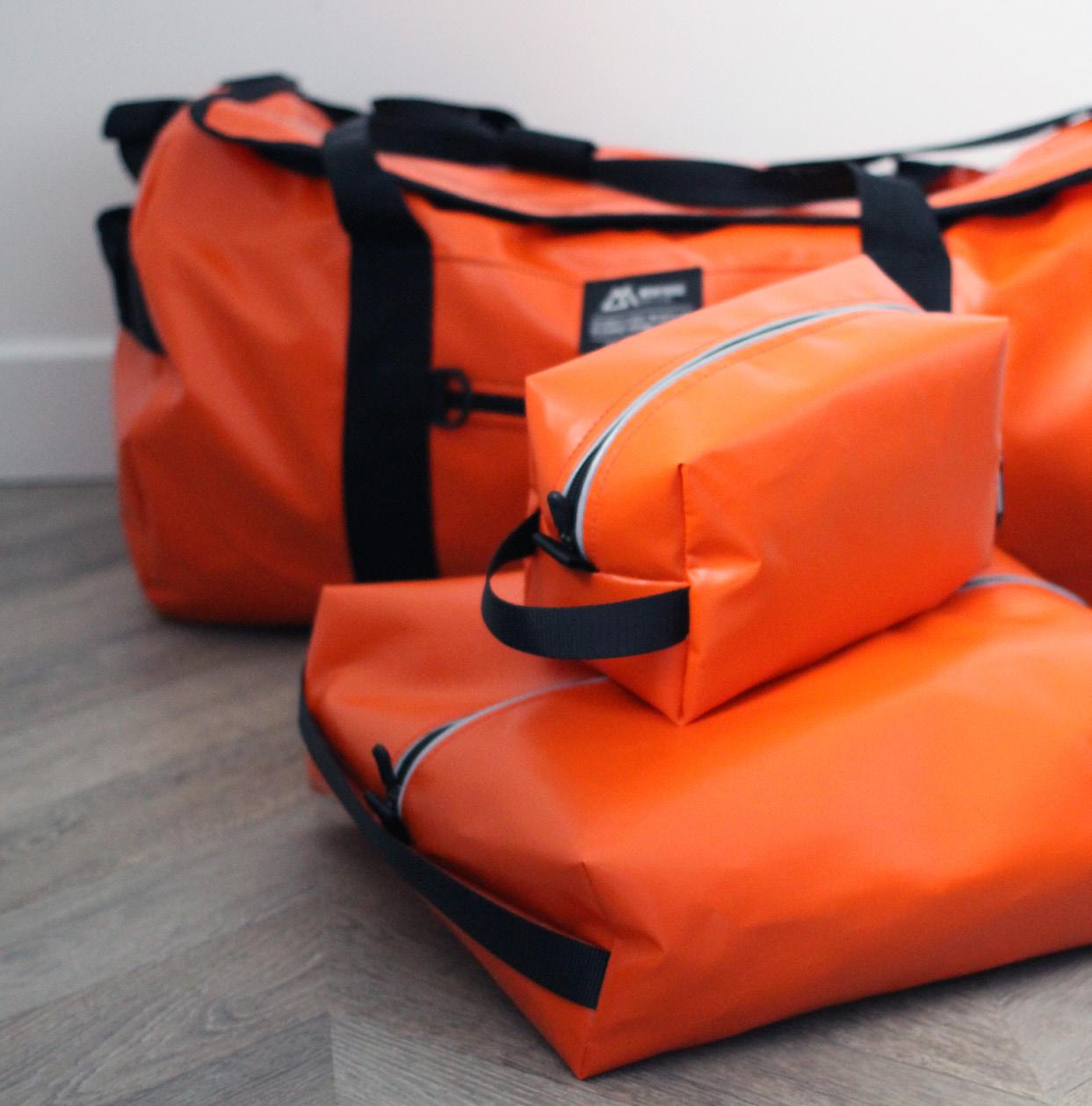

Och Vegan offers guilt-free pampering with its zero-waste soaps and lotions. Their products range from the sensible to the luxurious, everything handmade and crafted with exquisite care. Whether you’re looking to treat yourself or a friend, Och is an ideal source for all things self-care.
n ochvegan.co.uk, @ochvegan on Instagram.
Timeless style meets ethical fashion at this small Stockbridge boutique. At Treen, every item of clothing has a story that can be scanned and read on the price tag. Earth tones and organic fibres populate the racks, making it perfect for
From ethical fashion to radical reading, Isy Santini recommends another trio of independent retailers
anyone who prefers wardrobe staples to fastfashion trends.
n 2–4 St Stephen Place, Edinburgh, shoptreen.com, @shoptreen on Instagram.
Edinburgh’s radical bookshop is packed with bargains and friendly faces. Its light, airy rooms house books about Scotland, politics, identity, history, and the environment, as well as a great selection of fiction. This is a shop for anybody with an interest in society and the world around us.
n 43–45 West Nicolson Street, Edinburgh, lighthousebookshop.com, @lighthousebks on Instagram.






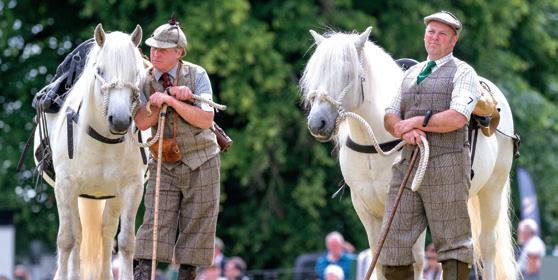



















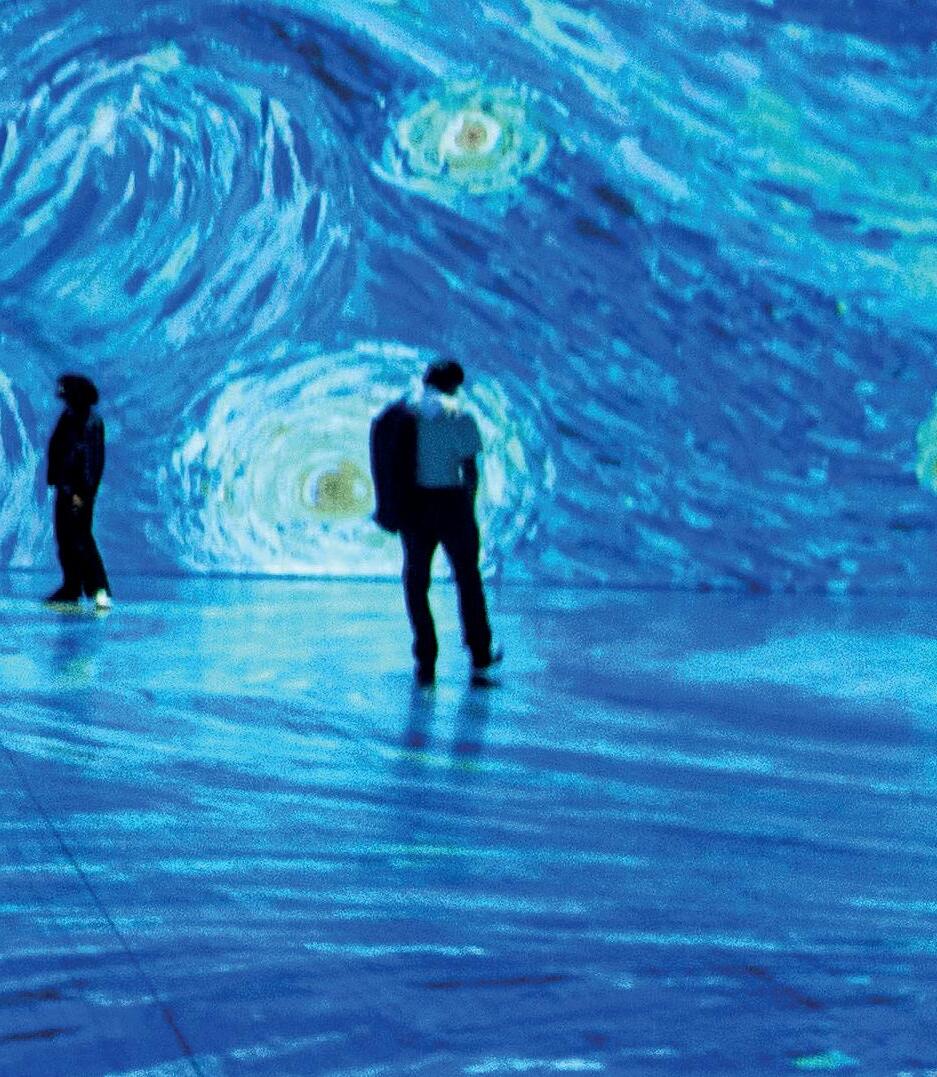


Glasgow gets swinging this month for five sizzling days and smouldering nights of jazz in venues such as The Glad Café, Òran Mór and Nice N Sleazy. The city’s jazz festival mixes the old with some new as Glasgow Improvisers Orchestra collaborate with Orphy Robinson, kitti gets stuck into the Caledonian Songbook, ex-Jazz Messenger Bobby Watson introduces us to his quartet, and Scotland’s contemporary jazz star Fergus McCreadie (pictured with his trio) continues an inexorable rise to the very top. (Brian Donaldson) n Various venues, Glasgow, Wednesday 19–Sunday 23 June.



•tra •tra art•

I‘t’s all about celebrating smaller, independent spaces,’ says Chloé Nelkin, organiser of NT Art Month, which is entering its second year. The festival aims to shine a spotlight on the abundance of independent galleries populating Edinburgh’s New Town, as well as to reduce the fear surrounding these spaces. ‘There’s a preconception and a misconception that you can’t go into independent galleries because the art is on sale, and that’s very much not the case,’ Nelkin adds. ‘They’re an amazing place to soak up the lifeblood of the arts scene. You can have such interesting conversations with the people who work in galleries and learn so much from them.’
According to Nelkin, it’s vital for people to give these galleries a chance, now more than ever. ‘It’s been a really difficult time for independent spaces. The running costs and cost of living and the recession have all hit them really hard; so, for me, it’s important to celebrate the incredible things they’re doing and the fact that they’re still there and producing these incredible exhibitions every month.’
NT Art Month is a great excuse for galleries in a vibrant cultural area of the capital to throw open their doors to the public. Isy Santini finds out more about these hubs of creativity
NT Art Month promises a range of events and exhibitions across the New Town, and with fresh sponsorship from Investec UK it aims to be bigger and better this year. ‘There’s lots to do as part of the festival and most of the events are free,’ says Nelkin. ‘There are opportunities to meet artists; there’s a coffee morning at a gallery; there’s live painting at Good Brothers Wine Cellars. For people who want something slightly different, one of our sponsors this year is Holyrood Distillery, and they’re hosting a tasting.’ NT Art Month is also partnering with Art In Healthcare, a charity which provides art for healthcare settings as a way to stimulate patients, visitors and staff.
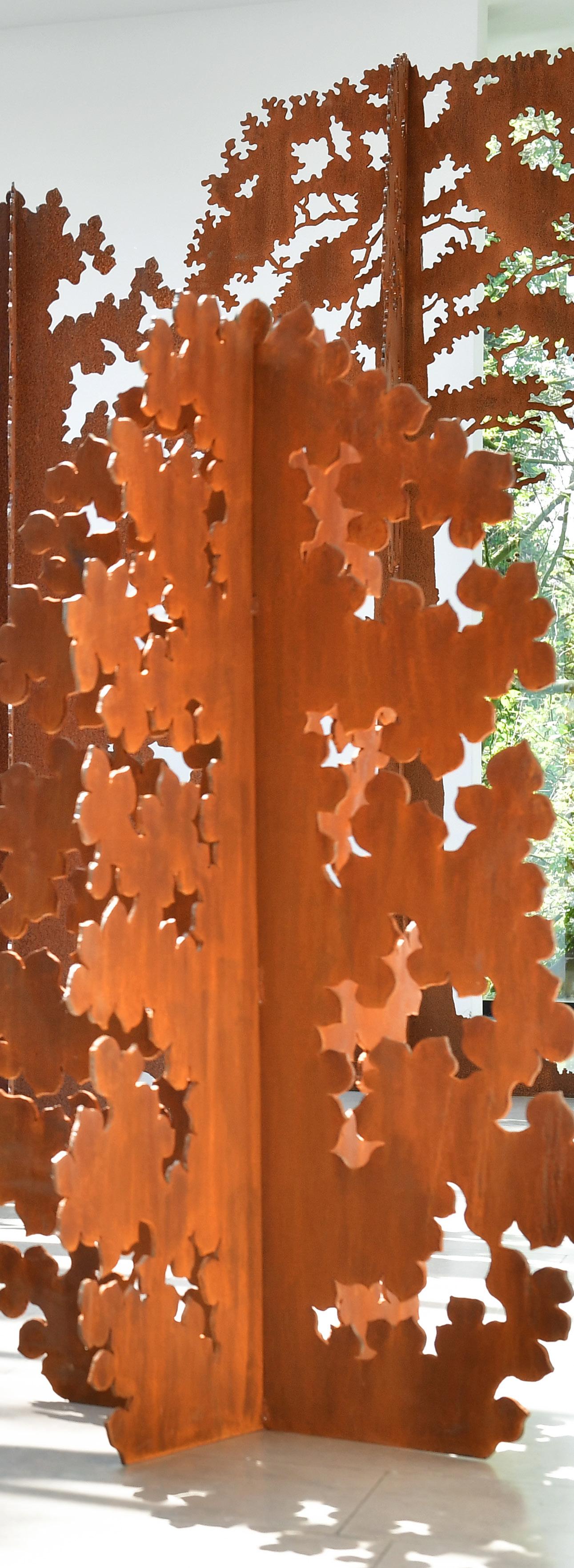
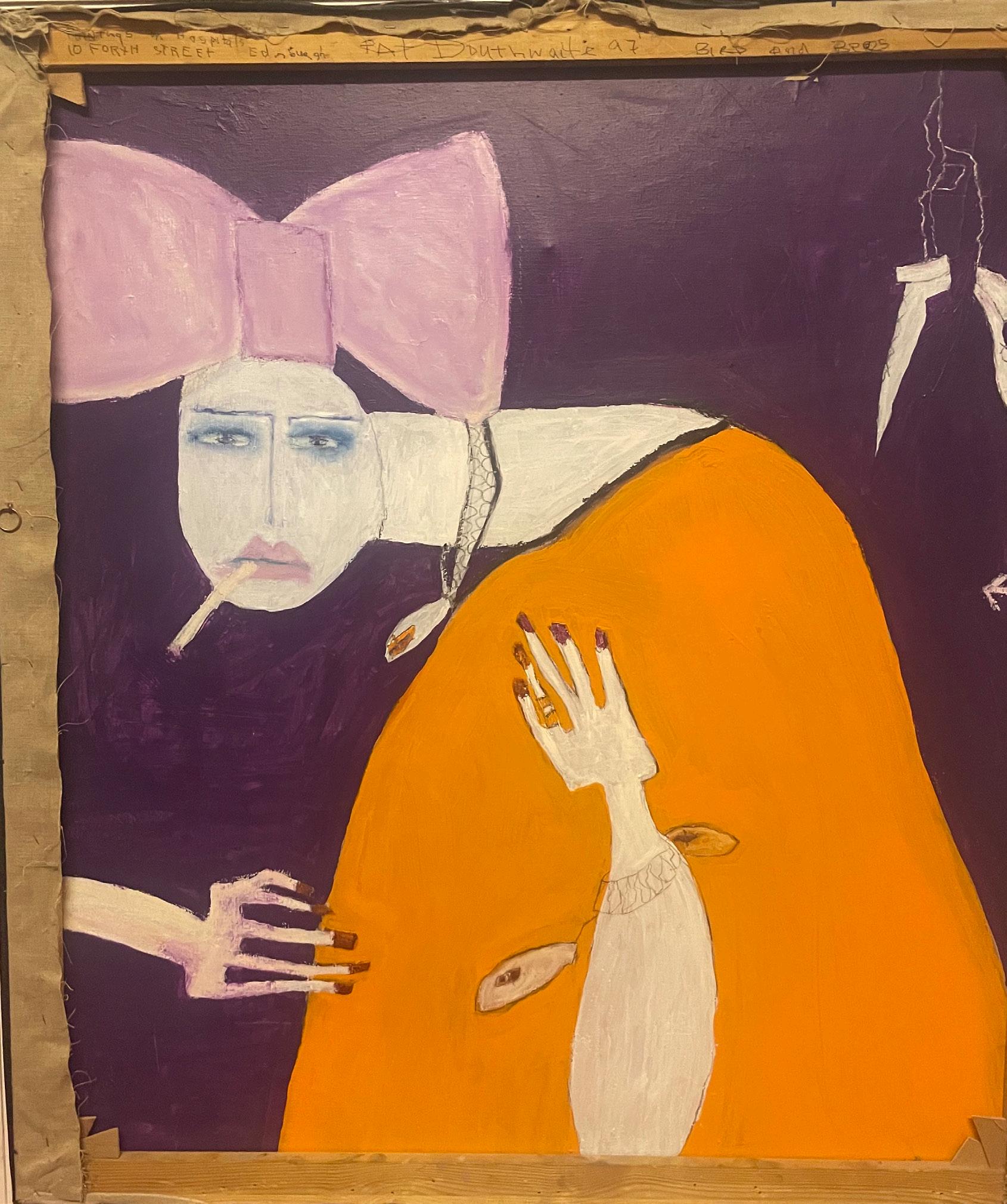
‘Although they’re not a conventional gallery, they have this amazing collection,’ notes Nelkin. They will be opening their building on York Place throughout the festival for collection tours and talks from their curators. Nelkin points to The Scottish Gallery’s exhibition, Amongst The Trees, as one that she’s particularly excited about. This indoor/ outdoor hybrid affair is led by Scottish sculptor Andrea Geile, who will also be curating works from other artists looking at the symbolic use of trees in art. ‘They’ve got this beautiful garden, and what’s exciting is seeing how art can be both inside and outside spaces.’ Nelkin also singles out The Atelier Gallery’s exhibition, The Importance Of Being Small. ‘It’s an exhibition of paintings highlighting how easy it is to overlook something small, using interesting framing techniques to show that these works still pack a punch.’
While art remains the focus of NT Art Month, it also looks to promote engagement with the local community. ‘One of the important things is encouraging people to walk between the spaces,’ Nelkin explains. Maps showing the locations of all the galleries will be available at various spots across Edinburgh. ‘The hope is that they spend a morning going for a stroll around all of these galleries and maybe pop into some of the independent cafés; we’ve marked our favourite cafés and bars on the map.’ Despite being a huge residential area, Nelkin feels that many people are not aware of everything the New Town has to offer. ‘Whether it’s coming along to these galleries in NT Art Month or actually just having a broader awareness of what’s on your doorstep, I think it’s really important for people to embrace that community and that local vibe.’
Art Month, various venues, Edinburgh, Friday 7–Sunday 30 June.

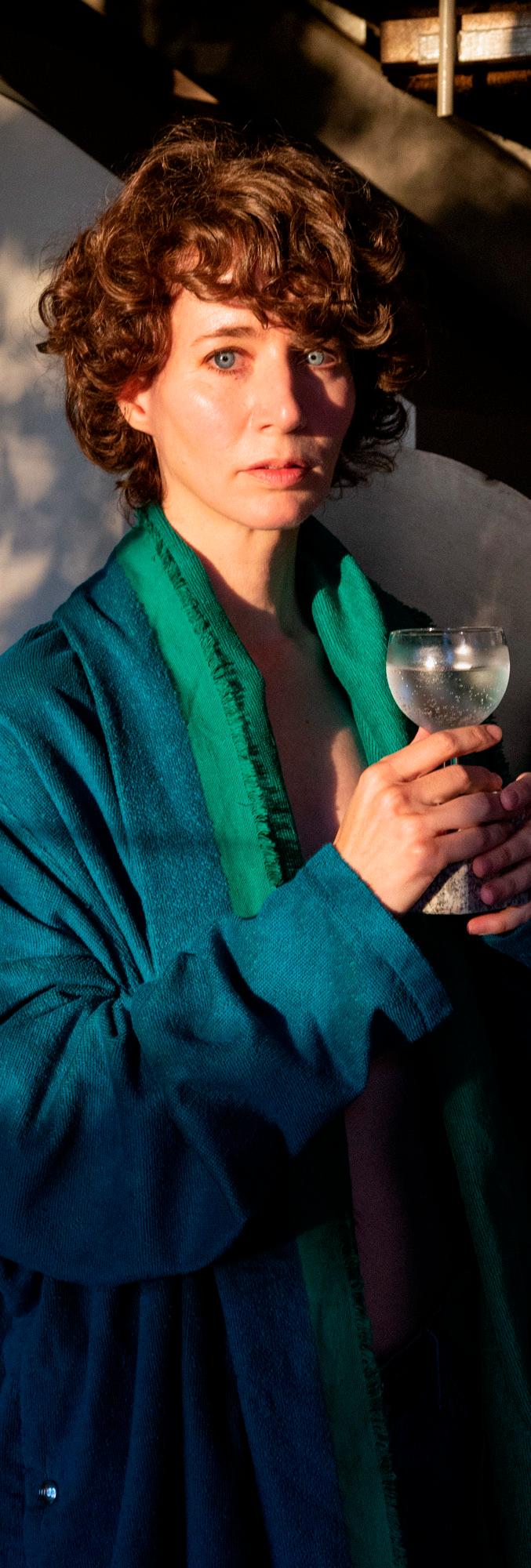
talk s sklat• t• a lks•
Filmmaker, artist and best-selling writer Miranda July’s new novel charts a fictional semi-famous female artist whose planned cross-country journey takes an unexpected detour in more ways than one. She chats to Claire Sawers about the line between truth and fiction, reframing the ageing process and the weirdness of intimacy
You describe this novel as ‘very close to the bone’. Your work has danced along the lines of fiction and autobiography before, but is this the closest to a thinly veiled version of your own story? It’s actually pretty thickly veiled if you know me. My friends are like ‘oh wow, you’ve managed to tell a whole story that’s not your story, but holds all the feelings of your story.’ I loaned some basic things about myself to the narrator: my job, my body. And she shares my excited, curious, hopeful feeling about life; this love of exploring, even if it’s a mess. But there’s no scene in the book that’s not fictional. I feel so protective of my family. I’m happy for everyone reading it to be entirely, enjoyably confused.
You’ve often been described as a fearless artist, but All Fours faces new fears . . . What’s new is I risked more. I went into things I was ashamed of. Starting with outing myself as being not young anymore. I was like ‘do I really want to tie my name to ageing and perimenopause?’ That seemed pretty unappealing. I thought maybe I could dodge the whole thing. But it started taking up more room in my head. I knew I was heading into a mapless place, and there was nothing it wouldn’t touch. It’s not even that [perimenopause] is so bad, but we are actually believing that it’s humiliating and gross, that something about life stops being interesting or exciting. If society was a matriarchy and we said ‘here’s a time when a woman really comes into herself and her power’, and she becomes president or huge in her field or whatever, then we would enter this time so differently. The thing that allowed me to be braver than before was all the conversations I was having with other women, like a whisper network or something. That is a difference between this book and any of my other fiction; that sense of writing with and for other women, not just in an imaginary way. It’s like having a conversation with a woman at a party that was fairly intense and I’ll probably never see her again, but now I’m writing for her.
There are a lot of older women in the novel really enjoying their sexuality, which is often missing in Hollywood, for example Yeah, it’s funny. When we’re younger, older women seem more ‘other’ to us. They’re not given a full sexuality and power. Whereas men . . . I mean, we’ve been made to think about the sexuality of all our presidents. It’s part of their ability to hold power. With older women, it’s like a sad punchline: who in their right mind would affiliate themselves to that?
The main character in All Fours is kind of a big deal, but she’s also a bit pissed off that she’s not more recognised. There’s a great line from her dentist, giving her a back-handed compliment when he keeps saying ‘my daughter has heard of you! What are the chances?’ How does that compare to the reality of being Miranda July? I think it’s just funny. I get the awkwardness of this level of fame as opposed to Arkanda [a huge celebrity in the novel] level of fame. There’s a fair amount of humour in it. My friends are like ‘maybe if you say your name you’ll get a reservation for us!’ And I call, and there’s just silence. On a deeper level, the book is about intimacy, and the weirdness of intimacy with strangers that fame can create. But then also this barrier to intimacy.
Do you attract people who feel they know you, because you often write characters that seem approachable or relatable? I remember after my first movie [Me And You And Everyone We Know] came out, people thought I was the character in the movie. She’s so sweet and approachable. She could never make a movie, right? You have to be incredibly tough. People would come up to me (this still happens) and say ‘can I give you a hug?’ It’s like ‘you should be scared of me! When you think of all that I’ve done, and the darkness, you don’t know who I am!’ I mean, I would be intimidated by most filmmakers I didn’t know.
As someone who loves to explore different artforms (dance, film, fiction, performance art, fashion), does it get harder to think of the next project or do you have a long list of ideas you want to work on next? No, it doesn’t really get harder. I guess I’m after different things now than when I was younger. I’m not so much trying to prove I can do something. Before I wanted to see if I could make a feature film or write a novel. What the great challenges are sort of shifts. It’s more of a subtler, more personal thing.
Miranda July will be in conversation with Chitra Ramaswamy at Nicolson Square, Edinburgh, Thursday 13 June; All Fours is out now published by Canongate.


House of Gods, Glasgow Book now at: sacredgardenrooftop.com
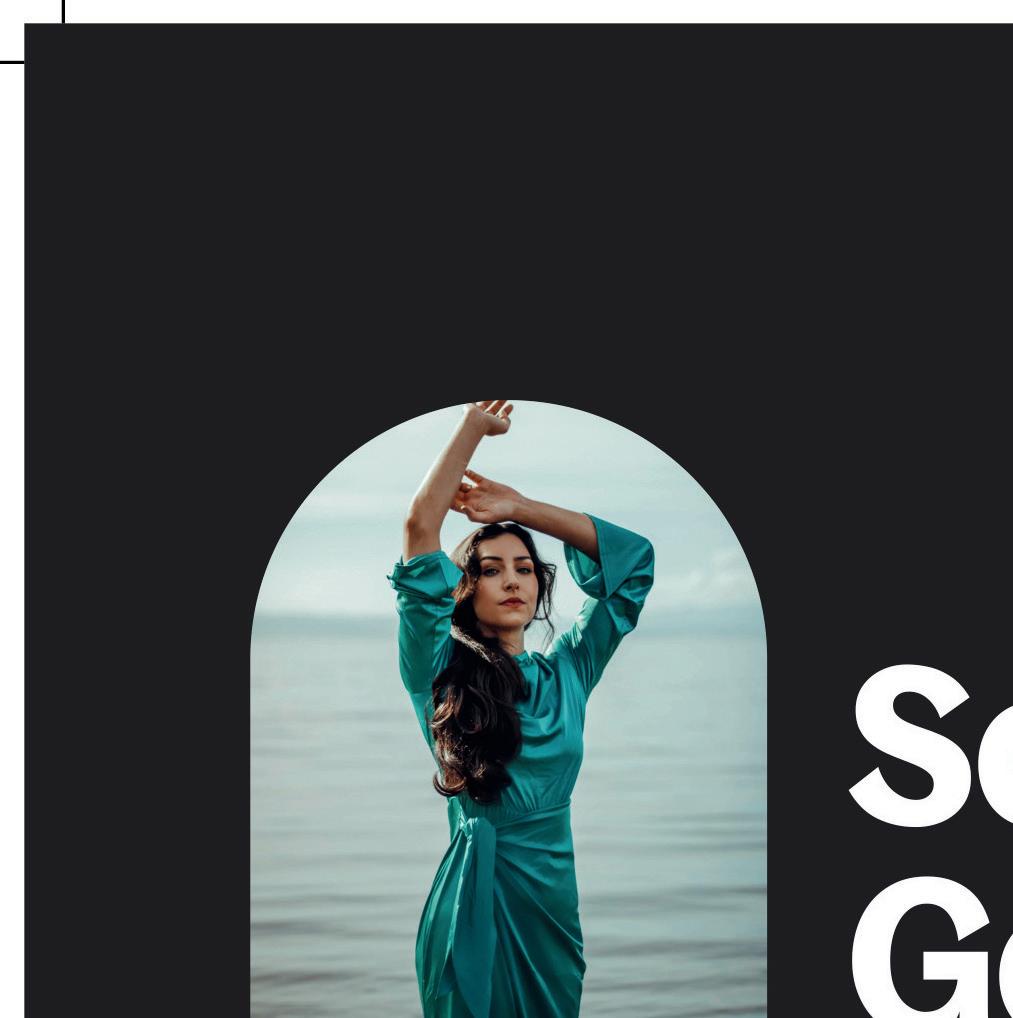










My comedy hero is, without a doubt, John Lithgow. I first saw him in the film 2010 which is, for me, the funniest movie ever made. But it was his starring role in the sitcom Café Americana that really cemented his hero status for me. Café Americana was set in a quirky Chicago coffee shop. Lithgow played Danny Espresso, the affable yet clumsy owner of the café, Coffee & Clarinets. It’s a funny title because they didn’t sell clarinets! Every week, a customer would come in and ask to buy a clarinet, and every week Danny Espresso would shoo them out with a broom. You couldn’t do comedy like that these days.
Café Americana famously gave career breaks to some now household names. Rico, the contortionist barista, was played by a young Daniel DayLewis. Thelma, the scheming owner of the rival Tea & Oboe shop, was played by Princess Anne, before she successfully auditioned for the Royal Family. But it was Lithgow who stole every scene. Who can forget the moment he comedically fell down an infinite manhole?
The show was sadly cancelled after just 27 seasons (spread over two years), but it did garner a cult following for its witty dialogue, endearing characters and portrayal of the café as a microcosm of American urban life, with Lithgow effortlessly helming the show with his slapstick and delivery of quickfire gags. The series finale still brings a tear to my eye where Danny Espresso shuts the café for the last time and gets tragically flattened by a spaceship: the very same spaceship that brought the four aliens to Earth in 3rd Rock From The Sun, a show I never much cared for.
n Brian Butterfield’s Call Of Now, Queen’s Hall, Edinburgh, Sunday 23 June; Pavilion Theatre, Glasgow, Tuesday 25 June.


In a world saturated with streaming services, double albums and enough TikTok sound snippets to dull even the sharpest of human minds, there’s something enticing about multi-hyphenate artist Bill Drummond’s pursuit to change how we listen to music. ‘Dispense with all previous forms of music and music-making, and start again,’ he wrote in his 2008 book 17, declaring ‘year zero now’. The search for that elusive ‘year zero’ continues with Hear Hard, a performance piece from Drummond and actor Tam Dean Burn, in which five tea chests, featuring their soundtrack album Voices From The Galloverse, will be transported to venues across Glasgow and Edinburgh. What will follow is a unique 90-minute show involving an ‘interrogation’ of the small audience (only 40 people will be allowed to attend) and an ‘induction into the ways of the Galloverse’.
‘It’s a cross between a listening party and a church service,’ Burn says. ‘I don’t know what punters can expect because I’ve never heard of anything like what we’ve done. I’m curious and excited to see what people make of hearing this album in its entirety, and then where we take it from there.’ These events will be the only chance for people to purchase the album, another ploy from Drummond to subvert the consumerist bastardisation of music which recalls his utopian dream of ‘people coming together with no knowledge of what music should sound like’.
It’s a sentiment that chimes with Burn, who views recalibrating our perceptions of sound as equivalent to toppling the patriarchy. ‘For thousands of years we made music with our voices. Those are our genuine roots. Perhaps one day we can get back to the polyphonic singing that did us proud for aeons.’ Whatever the Galloverse teaches us, a step back to our communal, choral past might be its most important lesson. (Kevin Fullerton) n Various venues, Glasgow, Friday 14–Sunday 16 June; various venues, Edinburgh, Friday 21–Sunday 23 June.

One of Africa’s most successful musical exports are bringing their life-affirming live show to Scottish festival goers. As they release their first original music in seven years, Amadou & Mariam chat to Fiona Shepherd about the new sounds they’re cooking up
There are few live experiences more joyous and irresistible than an Amadou & Mariam show with its innately danceable rhythms, featuring Amadou Bagayoko’s utterly funky guitar and Mariam Doumbia’s soulful mantras. The couple have been making music together since meeting as teenagers at Mali’s Institute For The Young Blind and joining that school’s orchestra. As a duo, they first enjoyed success throughout West Africa in the 80s before moving to Paris, plugging into the city’s pulsing musical diaspora and expanding their Malian blues include elements of rock, reggae and funk.
Their 2004 Manu Chao-produced album Dimanche à Bamako was their calling card to the rest of the world, while 2008’s Welcome To Mali sealed the deal, with support slots for Blur, Coldplay and U2 following. In 2011, they played a series of headline concerts with auditoriums plunged into complete darkness to convey something of the sensory experience the couple have around music, with the hope of sharpening other senses in the audience. But latest single ‘Mogolu’, their first new music since 2017, is flooded with the bright light of their native Bamako.
‘Mogolu means “people” in Bambara,’ they explain over email. ‘The song is about people and travelling. We travel a lot and meet a lot of people, create new experiences in life and, at the same time, share our experiences with everyone. Travelling, regardless of the means of transport you use, makes you live new experiences, grow and keep on learning.’
Keeping with the travel theme, the couple have teased their single with the strapline ‘let the journey begin’ and confirm more music is pending. Forthcoming album La Vie Est Belle, slated for an autumn release, will feature a mix of greatest hits and exclusive material, marking a half-century of music-making for the couple. ‘“Mogolu” is the very first taste. We can’t say much more yet as we’re working hard to bring great music this year, but we are travelling to new sounds.’
The pair remain tight-lipped about what those new sounds might involve. When asked what they’re listening to right now, they reply ‘when we are at home we listen to the radio a lot, so we listen to any new hit popping at the radio. We also have loads of traditional music that we bring from home. We listen to the news as well, to be connected and learn what is happening to the world.’
Amadou & Mariam will soon be back in their natural environment, communing with a live audience. ‘For us it is fundamental, almost as essential as water or food, to be able to perform live in order to feel the energy of an audience.’ First on their summer schedule is a headline slot at Eden Festival in Moffat alongside the likes of Mr Scruff, LTJ Bukem and psych-pop veterans The Zombies.
‘We are very excited indeed! We have been many times to Scotland with our own project and with The Blind Boys Of Alabama. This time is special, as we will be performing “Mogolu” live and other great classics of our career. Finally, we are back to the live shows, which is what we enjoy the most because we have direct contact with the audience. We feel the energy and that is what keeps us full of strength: sharing our music, transmitting our message and feeling people vibrate, sing and enjoy with us. It is a very special union.’
Amadou & Mariam play Eden Festival, Moffat, Saturday 15 June; the full festival runs Thursday 13–Sunday 16 June.

A few years ago, something strange started happening to families with small children. Instead of flicking on CBeebies as an excuse to disappear off into the kitchen for a cup of tea, parents would sit down and watch along. School drop-off and play-date conversations began to be peppered with familiar references: ‘featherwand’, ‘shadowlands’, ‘tickle crabs’. A truculent imaginary emu called Shaun began disrupting family dinners (that one might just have been in our house).
The show that sparked this cornucopia of early-years touchstones is, of course (for anyone with kids), Bluey. On paper, it’s a light-hearted animation about a family of four Australian heeler dogs tackling various everyday situations. In reality, it’s a cultural juggernaut whose true-to-life presentation of the foibles, exhaustion and mischief of family life has made both children and adults feel seen.
Now the series has been transformed into a stage show, Bluey’s Big Play, with an original story that weaves in highlights from fan-favourite episodes. The signature flat animation style, meanwhile, is brought to life through puppets. ‘The audience goes wild when they spot familiar moments from the TV show,’ says puppeteer and actor Adam Ryan, who is taking the role of long-suffering (though not entirely innocent of mischief) dog dad, Bandit. ‘The team behind the puppets have worked super-hard to bring the 2D characters to life. It is our job as puppeteers to manipulate the puppets using all their expressions to recreate the feeling you get when you watch an episode of Bluey.’
This is precision work, syncing the puppets to a soundtrack created by the TV show’s original voice cast. But for Ryan, the effort is worth it to create the magic of familiar characters springing to life. ‘All their voices are so iconic,’ he says. ‘We lip sync exactly so it appears as if the TV characters are speaking live on stage.’ (Lucy Ribchester) n Festival Theatre, Edinburgh, Thursday 20–Sunday 23 June.
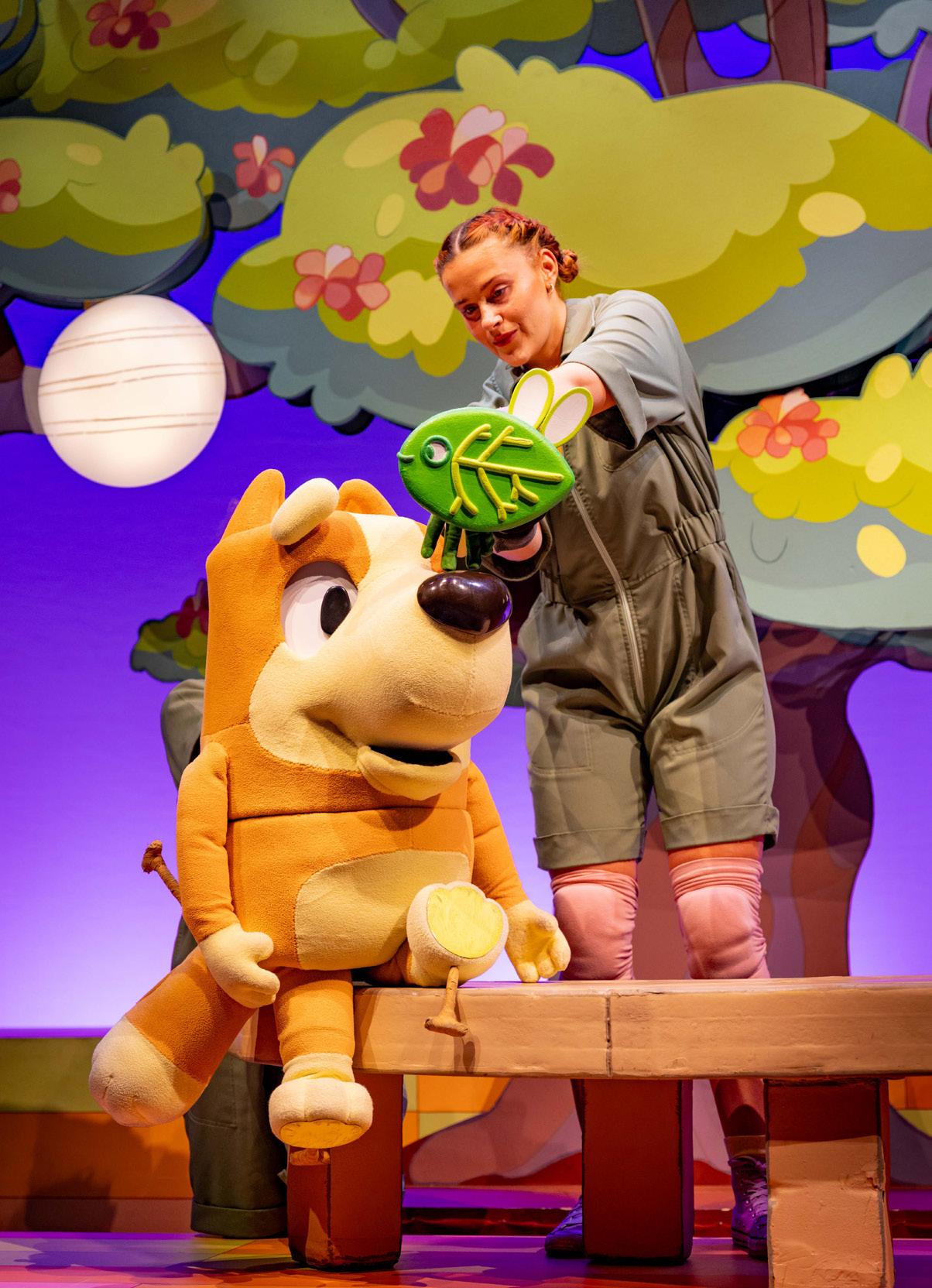

Fèis Phàislig’s Grant MacFarlane is visiting more than 40 primary schools this year as part of the organisation’s Stramash For Schools tour, helping raise awareness of traditional music and Gaelic within the Renfrewshire area. Previous years’ tours reached 20 schools, but Royal National Mòd funding meant that figure soared to 45 in 2023, with 42 set to take part this time around. ‘Still an amazing number,’ says MacFarlane, and numbers speak for themselves, as he explains 11,000 young people are ‘learning a bit of Gaelic, hearing traditional music and engaging with the culture’.
A recent upswing in Gaelic arts and language in Renfrewshire has resulted in the arrival of Paisley’s first Gaelic-medium unit, West Primary, where Saturday-morning classes are held. Fèis Bheag, a kids’ club for 5-to-7s, continues into June; for others, there are introductory sessions with games, singing and dancing. ‘It lets them experience some of the main elements of Fèis Week . . . and a wee bit of the language,’ says MacFarlane.
Within a year-round programme of events, Fèis Week (Johnstone High School, Tuesday 16–Friday 19 July) welcomes around 170 participants. Beginners and non-beginners’ classes give young people in upper primary and early secondary the opportunity to try something new. Picking three subjects, tutors include Ron Jappy (guitar), Fara’s Isla Callister (fiddle) and Croft No 5’s John Somerville (accordion). Alongside the success of MacFarlane’s Scotia Cèilidh Band, this proves that Fèisean spawn stellar professional careers. Fèis Phàislig’s ‘suite of different choices’ also includes music production, circus skills and film production.
The Advanced Fèis offers intermediate-to-advanced players the chance to build a band, working on ‘stagecraft, setting up PA, playing for dancing and group work,’ explains MacFarlane. For those seeking tuition during term-time, the Fèis also runs weekly classes in accordion, fiddle and guitar, and a free Gaelic choir on Tuesday evenings. (Marcas Mac an Tuairneir)
n feisphaislig.com

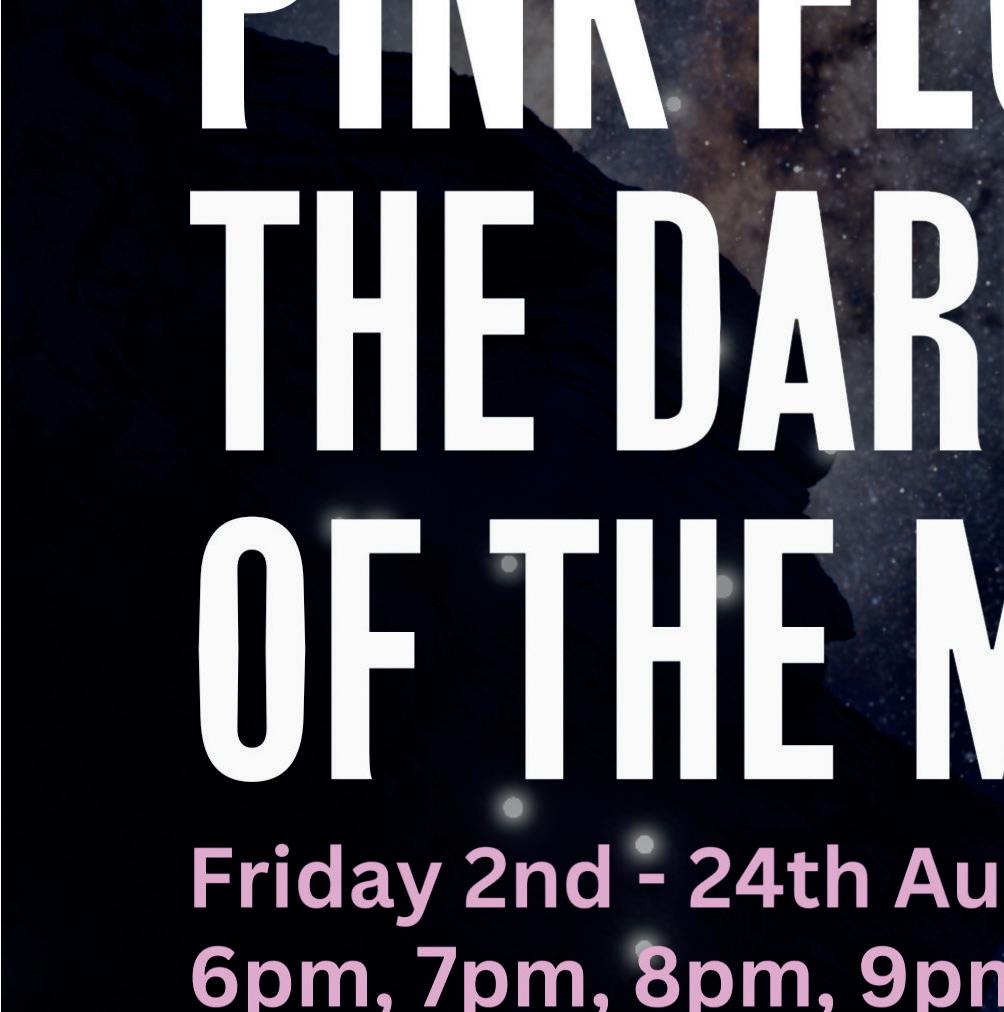



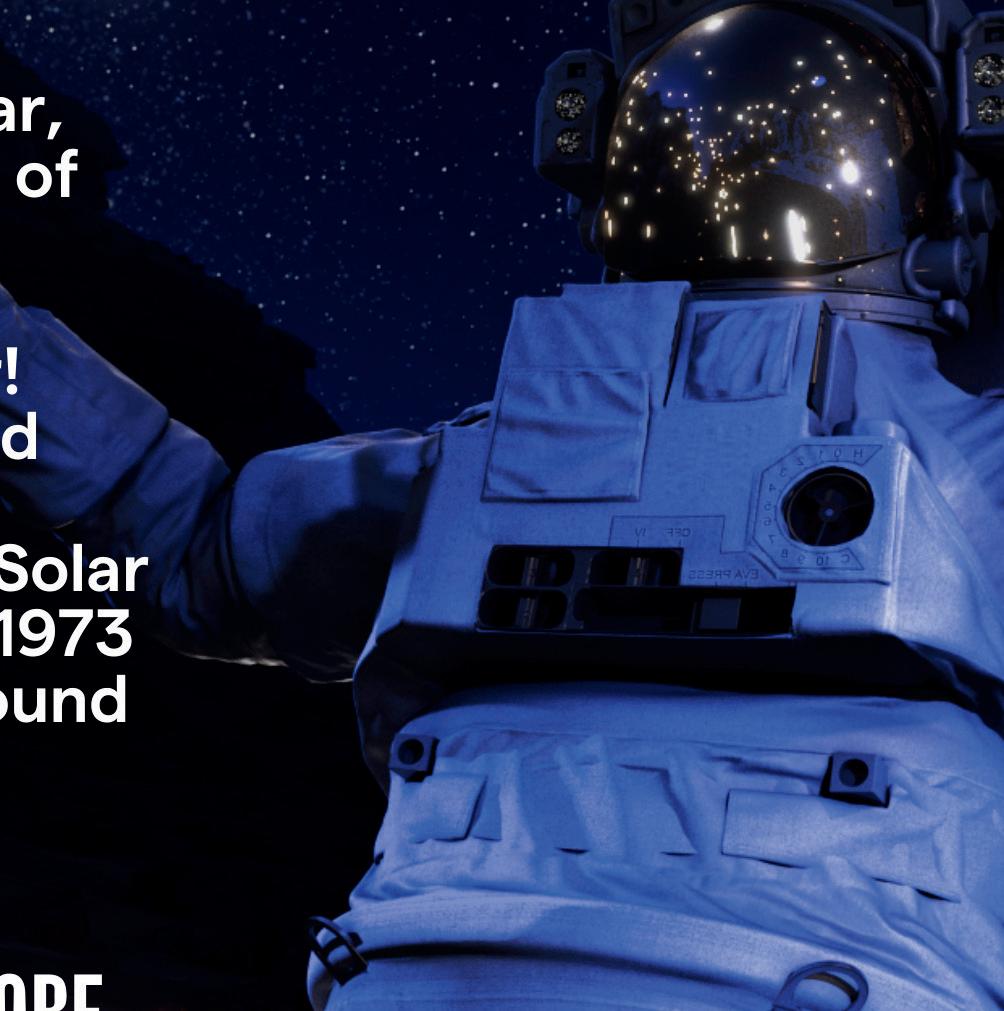
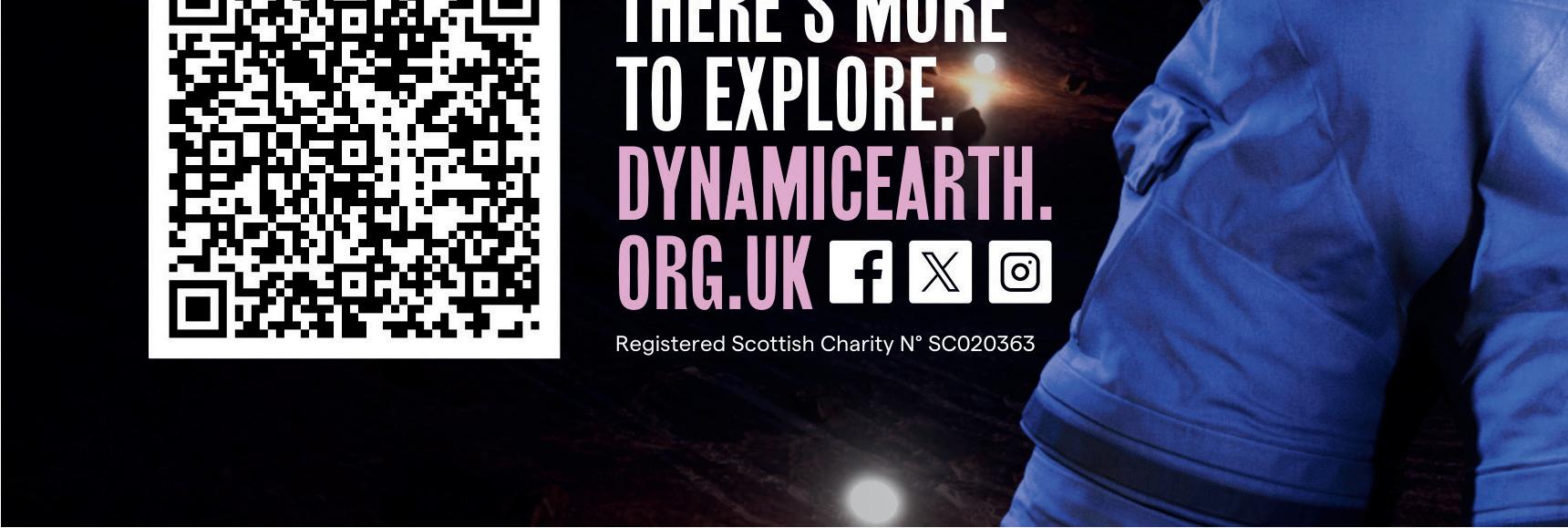
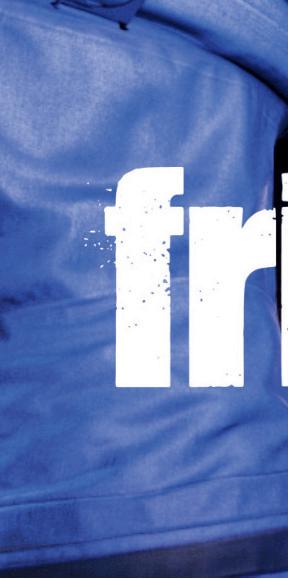




RWhen Agnieszka Holland’s powerful film about Poland’s reaction to the 2021 refugee crisis on its borders started gaining critical acclaim, the government’s response was ferocious. Despite facing death threats, the director tells James Mottram why she felt compelled to speak out against state-sanctioned violence
efugee drama Green Border began as Polish filmmaker Agnieszka Holland was watching on, in horror, as the migration crisis deepened in Europe. ‘I was interested in what kind of response the right wing and nationalistic populist Polish government would take,’ she says over Zoom. ‘And they took the worst possible, in my opinion . . . propaganda and violence against innocent people.’ All of a sudden, the border crossing between Poland and Belarus became a ‘laboratory’ of violence, where humanitarian and media organisations were forbidden.
It was at this point that veteran director Holland, an Oscar nominee for her 1990 film Europa Europa, decided to make her movie. ‘If the state legalised the violence and criminalised the help, it is a moment where I have to sound some kind of alarm,’ she says. The result, shot in black-and-white, is one of the most powerful films you’ll see this year, a jigsaw-like story following disparate groups of characters, including activists and border guards, as a Syrian family attempts to cross into Poland and the EU from Belarus.
Among other honours, Green Border was awarded the Special Jury Prize at the Venice Film Festival when it premiered last autumn. But it was then that trouble brewed back home, as the 75-year-old Holland came under attack from her own government. ‘I was expecting the worst,’ she admits, ‘but I wasn’t expecting that it would be led directly and personally by the highest politicians.’ The justice minister Zbigniew Ziobro, of the Catholic nationalist Sovereign Poland party, compared Green Border to a Nazi Germany propaganda film ‘showing Poles as bandits and murderers’.
Even the president, Andrzej Duda, weighed in, pointing to how ‘millions of Poles opened their hearts’ and welcomed Ukrainian refugees into their homes. ‘How do these people feel today when they see that a renowned director . . . is making a film slandering Poles and Poland?’ Holland sighs when she thinks back to this ‘heated time’ and a ‘hateful campaign against myself, some actors and the movie’. Worryingly, Holland received death threats and even had to employ security for fear she might be attacked. ‘It was a new experience for me, to be afraid on the streets.’
So how did she feel about the president citing Poland’s response to the Russia-Ukraine conflict? ‘It poses a lot of questions,’ she says. ‘Why are those refugees so welcome? And others . . . no. And racism is one response for sure. Because racism became, I think, an important phenomenon in contemporary societies, not only in Poland but in many places. But I don’t want to be judgmental . . . I understand the fear of people; I also understand the questions of security, especially when we have full-scale war so close to the borders.’
Among the most affecting strands of Green Border is that of Polish border guard Jan (Tomasz Włosok), who bears witness (and then participates) in jaw-dropping atrocities. Holland took great pains researching these elements, speaking to real guards, many of whom underwent something akin to post-traumatic stress disorder. ‘It was very much what we imagined; some of them became very traumatised, some of them felt guilty; some of their colleagues felt very powerful when inflicting pain on weaker people.’
One thing is certain: Green Border will not be shown in Belarus, where hardliner Alexander Lukashenko remains president. ‘There you have afraid people and very courageous people who are in prison, and you have very cruel people who are serving the government,’ says Holland. ‘But I don’t like to say that Belarusians are like that. So you always have to try to meet the human being; and I’m sure you can meet the human being, even among the Belarusian guards.’
Green Border is in cinemas from Friday 21 June.



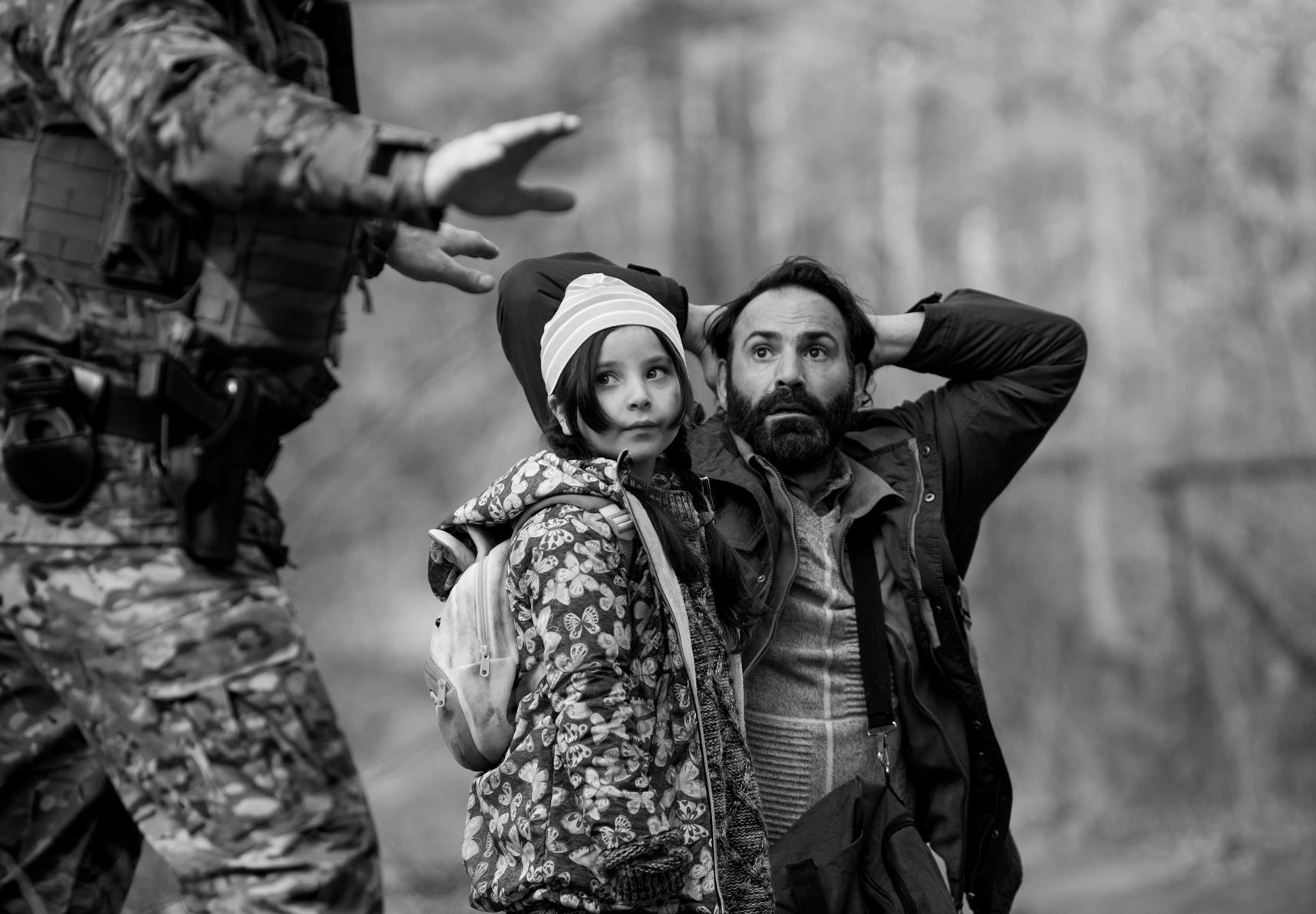


Fifteen years ago, CinemaAttic set out to promote independent film from Ibero-America, programming pop-up screenings and events across the central belt. This year the season will end with the Latin Connections Film Festival, designed to encourage cultural exchange and illustrate the links between Scotland and Latin America. In particular, CinemaAttic hope the festival will be a space for the Latin American diaspora in Scotland to come together and connect.
The festival incorporates films from across Latin America and Europe, but it also looks further afield with its screening of Himno (pictured), a Chilean film that charts the journey of the song ‘El Pueblo Unido’ to becoming a worldwide anthem of popular struggle. In keeping with the spirit of Himno, all proceeds from boxoffice sales go to Medical Aid For Palestine.
A series of three shorts by Brazilian director Eunice Gutman, Hoje Eu Sou Eu (Today I Am Myself), continues the festival’s focus on social issues. The collection aims to shine a light on the hidden side of 80s and 90s Rio. Shown in collaboration with the Invisible Women collective, the shorts take a feminist perspective, covering everything from education to sex workers’ rights. The festival will close with Submerged Memories, a double bill featuring a live score by Chilean musician José Rojas, and consisting of the silent film El Peñol, and the recent short Memories Of The Last To Leave. Together, they tell the story of the Peñol-Guatapé Reservoir in Colombia and the loss that accompanied its creation. (Isy Santini) n Various venues, Edinburgh, until Sunday 16 June.






Get yourself away from the central belt and out into various parts of Scotland where the cultural landscape is just as rich and varied. Among the highlights this month are an innovative comic considering the digital age, a visual drama about climate fear, a filmic tribute to a true Scottish icon, and two Strictly stars doing their dancey thing
ABERDEEN
JAMES
Come and sit down to hear Tim and the gang as they enter their fifth decade in the music biz. A 17th studio album has just been released and they’re fresh from being honoured at the Ivor Novello Awards.
n P&J Live, Monday 3 June.
MARK WATSON
The ever innovative Bristol comic (not Welsh in fact, for those who followed his early career and then somehow stopped), brings us Search, a show about the pursuit of meaning in a digital age that is almost out of control.
n Lemon Tree, Friday 7 June.
DUNDEE
PHOTO CITY
Subtitled ‘how images shape the urban world’, this exhibition examines how photography transformed our everyday experiences, featuring pictures taken everywhere from Dundee to Tokyo.
n V&A, until Sunday 27 October.

SHŌ AND THE DEMONS OF THE DEEP
Written by Zoë Bullock and directed by Shilpa T-Hyland, this visual adventure story is about fear, climate, and how the actions of one generation can ripple into the next.
n Eden Court Theatre, Inverness, Monday 3 June.
RUFUS WAINWRIGHT
Already a musical explorer, Wainwright recently embarked on a special journey into his family folk roots. The resulting Folkocracy features duets with artists such as Chaka Khan, John Legend and Anohni. Slices of that project might be tasted tonight.
n Eden Court Theatre, Inverness, Saturday 22 June.
MELROSE
BORDERS BOOK FESTIVAL
Four packed days of excellent literary events in a delightful setting include writers such as David Nicholls, Tan Twang Eng, Janey Godley, Howard Jacobson, and Nadine Aisha Jassat.
n Harmony Garden, Thursday 13–Sunday 16 June.
In Behind The Magic, glamour and dance are the names of this game as Strictly pros Bychkova and Widdrington embark on their second tour.
n Perth Concert Hall, Thursday 6 June.
PITLOCHRY
BEAUTIFUL
A new production of the West End and Broadway hit musical features Kirsty Findlay taking on the role of Carole King as it tracks her incredible rise through the music industry.
n Pitlochry Festival Theatre, Friday 7 June–Saturday 28 September.
STIRLING
BIG BANANA FEET
Directed by Murray Grigor, this restored mid-1970s examination of Billy Connolly captures the great man on and off stage during a tour of Ireland at a highly incendiary time for that country.
n Macrobert Arts Centre, Stirling, Saturday 1–Wednesday 5 June.


























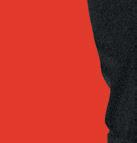











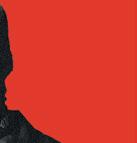
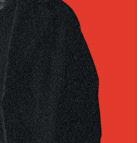
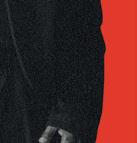




Damian Barr revisits his tough childhood by penning a stage version of Maggie & Me. Eddie Harrison finds wounded anger galore in a work that mines 80s nostalgia and flirts with the fabulous
Trigger warnings automatically apply as Damian Barr adapts his own childhood memoir for this new National Theatre Of Scotland production. Not just for Barr’s painful account of abuse by a family member, but also for reviving Margaret Thatcher, played with uncomfortable realism by a game Beth Marshall. She’s one of an array of 80s icons evoked when a grown-up Barr (Gary Lamont) attempts to capture his own teenage development in prose. That book (published to acclaim in 2013) inspires this theatrical phantasmagoria with contemporary music (Bronski Beat’s ‘Smalltown Boy’ several times) and caustic nostalgia, as he acts out scenes from soap opera Dynasty in Carfin Grotto and likens the Tories to those ratswallowing aliens seen in tacky sci-fi drama V.
Co-written with James Ley, Maggie & Me opens with Barr sitting comfortably at a laptop behind his desk in Brighton circa 2008. Director Suba Das detonates his protective barriers of books and toys in a slick coup de theatre reminiscent of the NTS’ celebrated Black Watch. The IRA bombing of the Conservative Party conference in 1984 acts as a curtain raiser to a past hellscape



that resembles Stephen King’s Salem’s Lot, a text borrowed by the author from his local library. Barr has regrets and remorse. As a kid, he tortured frogs by smashing them with tennis rackets, a vicious streak he excuses in the context of the cruel treatment he received such as being forced into abandoned wardrobes then toppled over, and having to deal with parental divorce. More specifically, there’s the threat posed by his mother’s violent partner, Logan, who turns innocent bath times into something to be feared.
Maggie & Me is very much a story of self-transformation in which Barr’s instinctive negativity to Thatcher, his father’s new girlfriend (‘Mary The Canary’) and other females is counterbalanced with his experience battling prejudice to assert himself as a gay man.
Thatcher centres the personal and political from his child-like point of view with the young Barr begging her to rescue his father from a physically dangerous job at Ravenscraig steelworks. It’s a release that comes at a psychological cost to a precious, self-aware boy who labels himself somewhat negatively as ‘Damian “Free School Dinners Broken Home” Barr’.


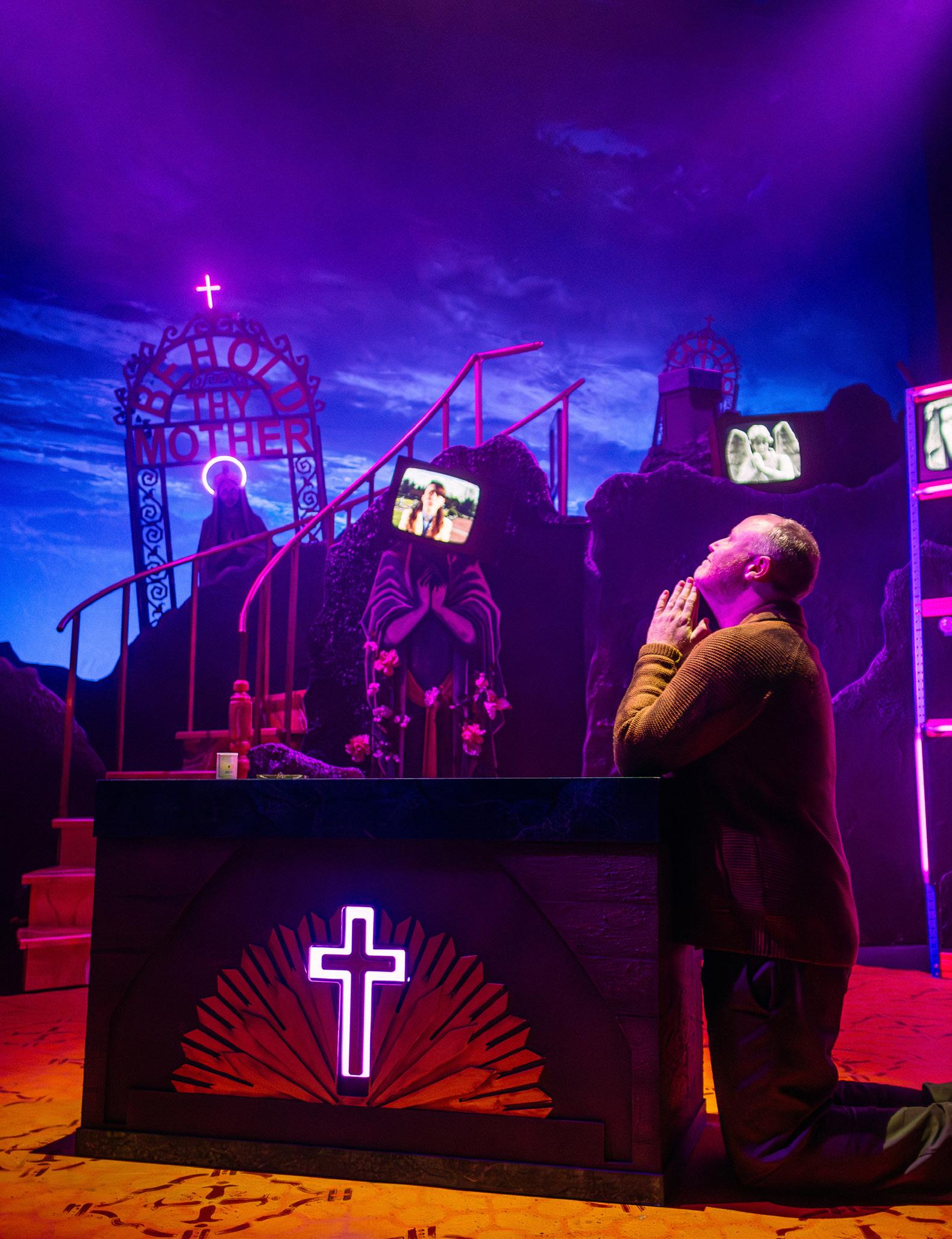
With choreographed musical sequences, a substantial cast in multiple roles, and a large-scale quiz-game parody, Maggie & Me is an epic production with a deeply personal focus. Barr is clearly pleased with how well he turned out, but while the mixture of catharsis and selfcongratulation feels earned, there’s no real attempt to translate or explain cultural references to anyone below 40.
Barr describes a girl at his school named Heather who is mocked for being a virgin while he was castigated for being gay; she admires his precocious reading (Muriel Spark, Tennessee Williams) and they fake a romantic partnership to defy the bullies. But Maggie & Me focuses so tightly on Barr that there’s no room for anyone else, and no empathy for any woman other than his mother; even the school bullies are somehow all female.
As an adult, Barr is shocked to find himself mirroring thoughts and phrases previously voiced by Thatcher, and the piece uses drama as a poultice to draw the poison of her influence from his system. Maggie & Me justifies its large-scale staging by dint of lively evocation of childhood experiences in beating the bullies, later finding Barr on
the sticky dancefloor at Glasgow’s Bennets and becoming a bigwig journalist who can endlessly complain about tiresome editors demanding to see their copy. That sense of aggressive self-pity mixed with righteous, wounded anger at the damaging process of growing up in the 80s connects Maggie & Me to the psychodrama of recent film
All Of Us Strangers, with unresolved parental issues coming back to haunt a protagonist in quasi-supernatural trappings.
Seeing Thatcher as anything other than an outright hate figure may upset some audiences, but Barr’s articulate play reflects how the Tory treatment of AIDS as a bogeyman created an oppressive, corrosive climate. That’s an accurate, evocative message that should strike home with anyone from his generation who fought to find their inner fabulous during the Tory leader’s outwardly horrendous reign.
Maggie & Me, Dundee Rep, until Saturday 1 June; Traverse Theatre, Edinburgh, Wednesday 12–Saturday 15 June; reviewed at Tron Theatre, Glasgow; Damian Barr is in conversation with Chitra Ramaswamy, National Library Of Scotland, Edinburgh, Thursday 6 June.
Unlike last year’s Killers Of The Flower Moon, Fancy Dance is a story about Native American women told by Native American women. The film follows petty thief and erstwhile drug-dealer Jax (Lily Gladstone) as she struggles to take care of her niece, Roki (Isabel Deroy-Olson) after her sister’s disappearance. When the state moves to put Roki in the care of her well-meaning but ignorant white grandparents, Jax must balance the search for her sister with the fight to keep Roki.
Fancy Dance shines a light on Seneca–Cayuga culture with love as well as anger at a system that dismisses the murder of indigenous women and forces people to turn to crime for survival, only to punish them for it. These social criticisms ring so true because they are thoroughly grounded in the familial relationships of the characters. Both Gladstone and Deroy-Olson bring a wonderful tenderness to the aunt-niece dynamic, so that in the midst of upheaval, we are able to find the small joys with them (such as the celebration of Roki’s first period).
Director Erica Tremblay’s feature debut is many things: murder mystery, coming-of-age story, family tale, social drama. Yet somehow, these diverse genres blend in such a way that everything comes together effortlessly in the moving finale. Fancy Dance invites us to mourn the thousands of indigenous women who never received justice, but it also demands our respect for those still living. (Isy Santini) n In cinemas from Friday 21 June.
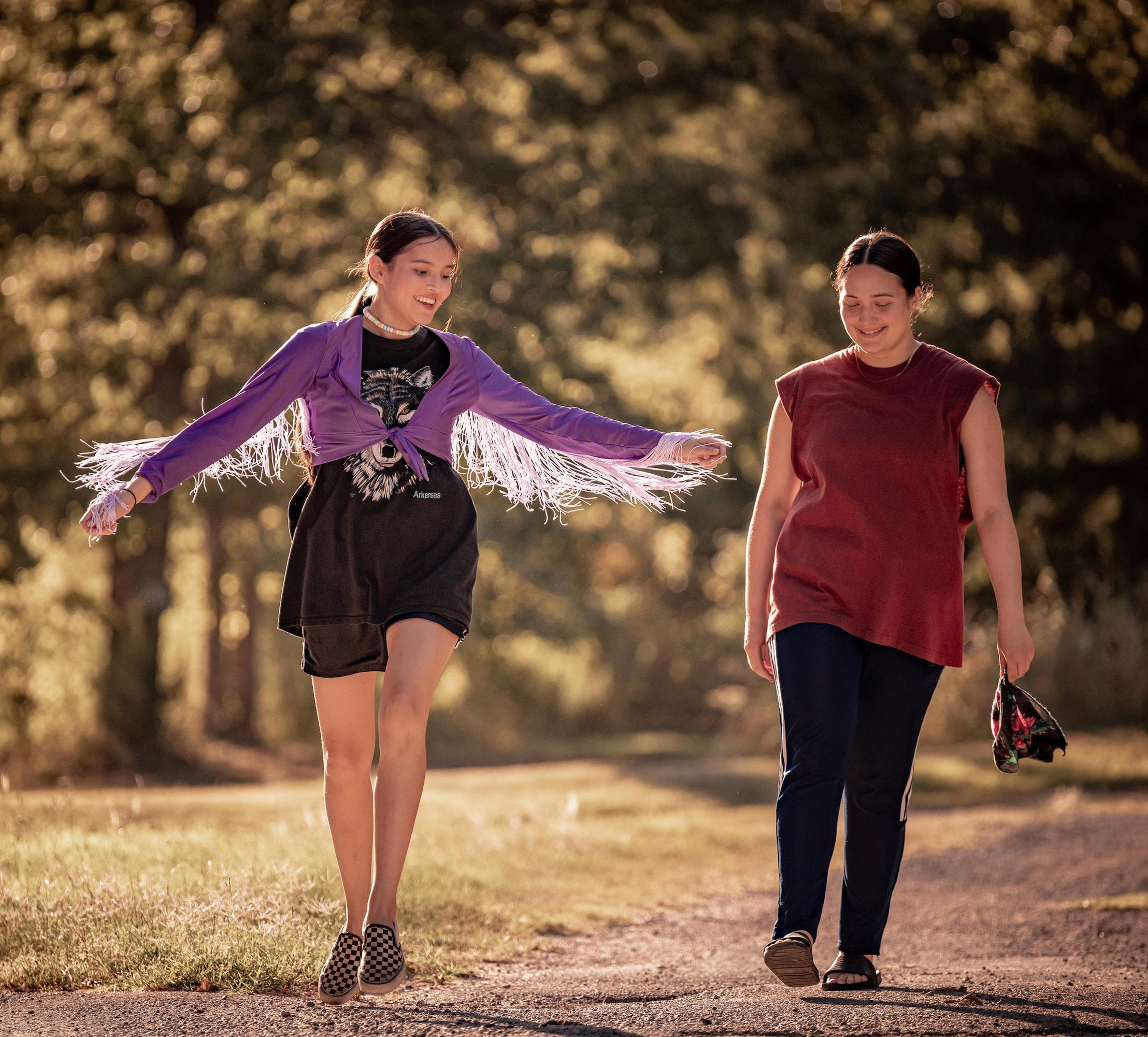
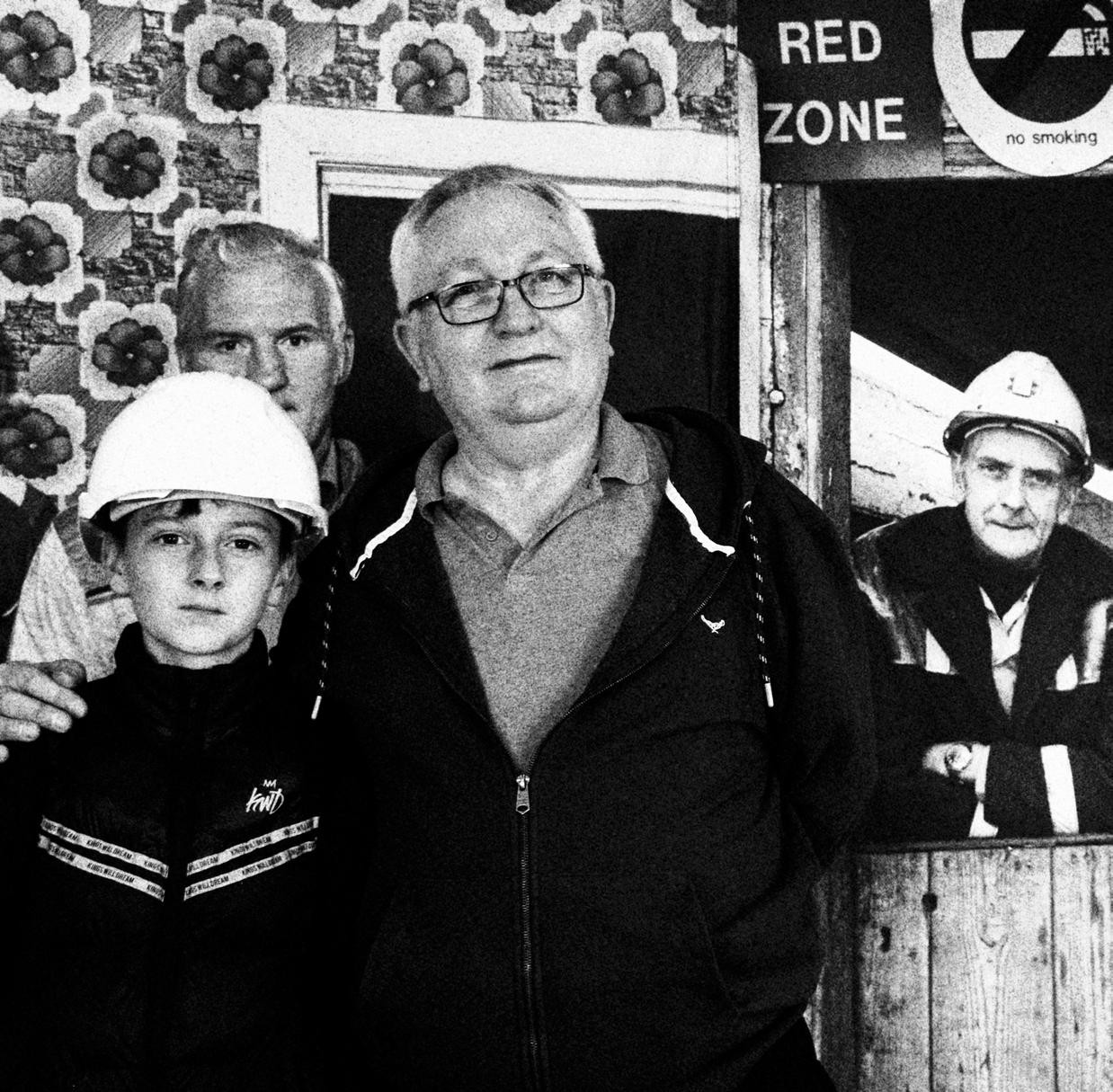
When American photographer Milton Rogovin visited mining communities in Ayrshire, Fife and Midlothian over three weeks in 1982, the images he took of people at work, rest and play captured a time and place just before those communities were upended by the strike that changed Britain forever. Forty years on, artist Nicky Bird followed in Rogovin’s footsteps, revisiting the places, the people and descendants of those originally depicted, marking the changes and memorialising the seismic past that shaped them.
The resulting and powerful exhibition puts images by both artists side by side, in a way that bridges generations, to tell a story that became one of the markers of late 20th-century society. Developed by Bird with the communities depicted, each photograph is captioned with a commentary by those in the thick of the scenes. From the grubby-faced men posing beside the pit or in the living room in Rogovin’s Family Of Miners, Scotland (1982) series, a portrait of an entire community comes to life. The juxtapositions of some images are telling. An 80s shot of a much-needed doctor’s surgery is set next to the same shop front’s current guise as a tanning salon. In others, where men stood in the mine works in Rogovin’s black-and-white contact sheets, Bird’s colour studies of the same locations show a landscape transformed.
Beyond the photographs, historical banners line the walls, while a miner’s overalls become a life-sized monument to old industry. Bird’s unearthing of Rogovin’s archive is treated with as much empathy as those in her own photographs. Combined, these two bodies of work form a vital piece of living history that is a testament to survival and the everyday heroism of those whose stories shaped their age. (Neil Cooper) n National Galleries Of Scotland: Portrait, Edinburgh, until Sunday 15 September.
Taboos and differences are abundantly explored in the fairytale-like Rosalie. Emma Simmonds hails a historical film that speaks powerfully about current debates
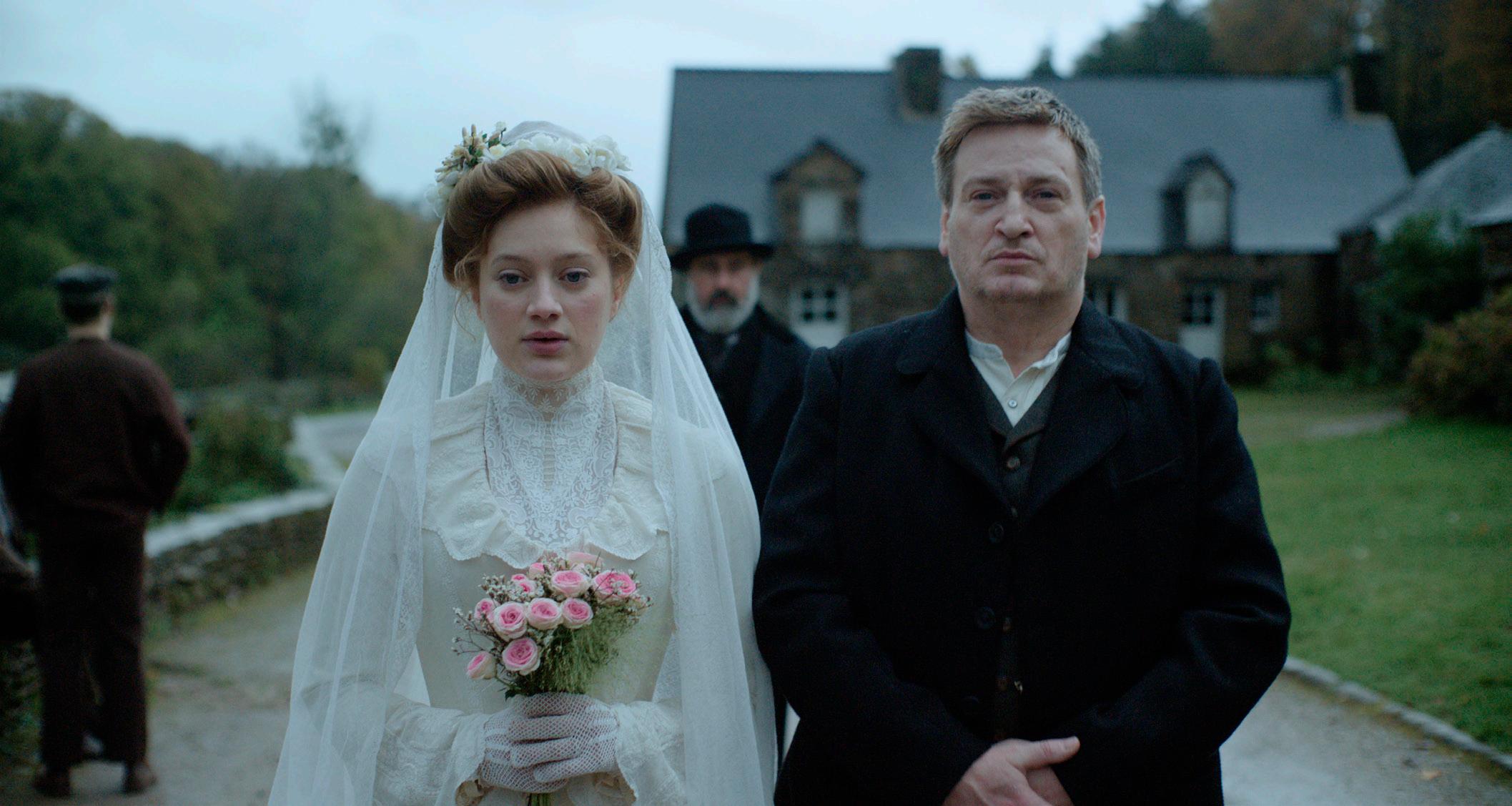

I‘t’s never simple to be a woman,’ Rosalie Deluc tells a journalist when asked how people react to her unexpectedly hirsute appearance. Loosely inspired by the life of celebrated bearded lady Clémentine Delait, the sophomore film from French director Stéphanie Di Giusto (The Dancer) tells a subversive yet relatable story of standing out from the crowd. Set in a mill town in 1870s Brittany, Rosalie follows the titular trailblazer (beautifully played by Finnish-French actress Nadia Tereszkiewicz from Only The Animals) as she’s married off to middle-aged tavern owner Abel (a tormented Benoît Magimel). Abel, it transpires, is only in it for the dowry which puts a dent in his debt to the mill’s owner Barcelin (Benjamin Biolay), a hard-hearted man who won’t allow his workers to drink in Abel’s establishment and is pressuring him to sell up. On the couple’s wedding night, Abel is in for the surprise of his life, discovering that the youthful, stereotypically feminine Rosalie is covered in an abundance of body hair, and that she has been shaving her face to fit in. Abel’s reaction is one of bafflement and revulsion, resulting in Rosalie spending a night sleeping rough. However, on her return she resolves to embrace her idiosyncrasy and, after unveiling her true, unshaven self to the tavern’s gobsmacked clientele, Rosalie becomes a sensation, while her indomitable character and newfound pride in her appearance starts to win Abel around. Sadly, such acceptance is short-lived.
Rosalie is fairytale-esque in its fatalism and faintly magical air, with its heroine cutting a pristine, princess-like figure in impoverished environs, and depicted as both beauty and beast. The film is very astute on the destructive impact of shame and the confusion and conflict Rosalie provokes in those around her, without overly demonising anyone.
It shows us men who have been physically and mentally scarred by war and are curious at first, but who inevitably surrender themselves to the will of the baying mob. Not so long ago this material would have been mined for laughs in an attempt to ease an audience’s discomfort, but Di Giusto plays it straight, and her film is all the better for it. Sensitively shot by Christos Voudouris, using a soft, melancholic palette, Rosalie’s emotional impact is enhanced by Hania Rani’s elegant orchestral score, which movingly reflects our heroine’s hopes, fears and distress.
Difference will always stir up hate in the hearts of some, and there are days where it doesn’t feel like we’ve made a whole lot of progress. With the debate on who is allowed to call themselves a woman raging and female body hair still taboo, Rosalie may be set in a different century, but it speaks powerfully to our time.
Rosalie is in cinemas from Friday 7 June.
Now this is a show! Tenacious D might parody all the posturing, excess and inflated egos of classic metal, but they legitimately and genuinely rock hard too. As they acknowledge, Jack Black and Kyle Gass have known true ups and downs in a musical career that comfortably precedes the former’s megastardom. Their 2006 cinematic flop Tenacious D In The Pick Of Destiny was a long cherished dream-turned-nightmare that they had to dust themselves down from, with tonight’s juggernaut romp through ‘Rize Of The Fenix’ an ebulliently defiant response.
Showcasing Black’s fierce, irrepressible charisma and lusty mock operatic vocals, allied to the technically impressive musicianship of Gass and lead guitarist John Konesky, they were always going to be a force to be reckoned with. But there are also some memorable bits of business in this performance. Black indulges in feigned histrionics at the expense of his roadie, while intergroup squabbles and reconciliations (sending up many bands’ commercially sustained bromances) culminate in a soulful croon of Chris Isaak’s ‘Wicked Game’ as Black and Gass are shown cavorting on a beach in their scanties. This Is Spinal Tap-style pyrotechnics are fumbled by new crew member ‘Biffy Pyro’, and there’s sustained duelling with the devil: a giant inflatable Satan rises and falls behind the drum kit, with the power of ‘Metal’ personified in the guise of a clanking, dancing golem.
Supremely dumb in parts, there’s a celebratory song about video games (‘Video Games’) and another, in tribute to their crew, called simply ‘Fuck Her Gently’, an hilariously on-point insight into the male psyche. ‘Wonderboy’ soars and Black elevates ‘Double Team’ with a passionate snatch of Travis’ ‘Turn’ that surpasses the original vocal. A shout-out, too, for comedy support act Dave Hill, who endearingly delivers exactly the same juvenile swagger set to thousands in an arena as he does in modest Edinburgh Fringe basements. (Jay Richardson)
n Reviewed at OVO Hydro, Glasgow.
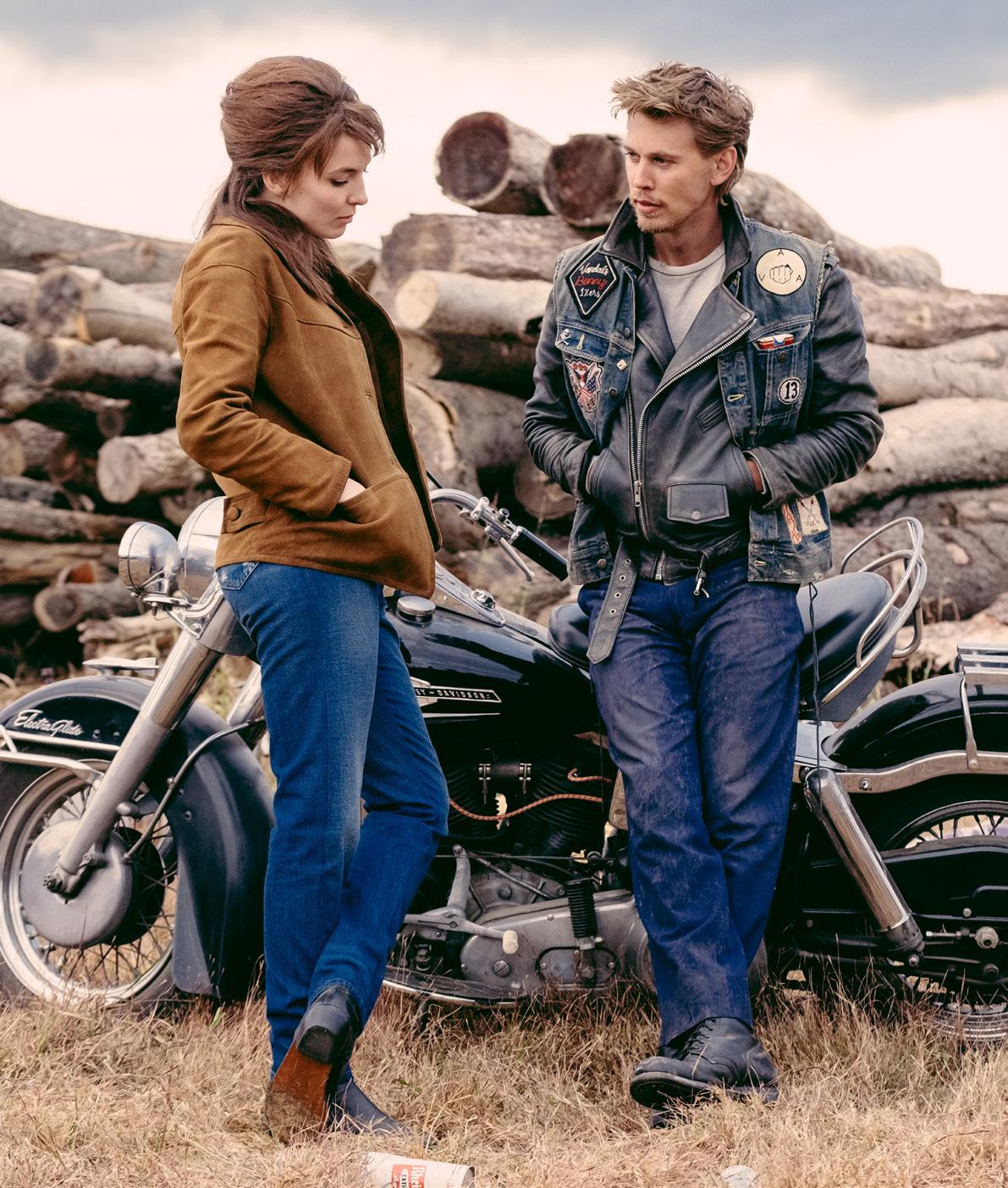

After impressing as Elvis Presley, The Bikeriders sees Austin Butler kick off the blue suede shoes of one American icon to channel another, playing a rebel-without-a-cause motorcyclist who is the absolute spit of James Dean. Best known for Midnight Special and Mud, American writer-director Jeff Nichols takes a classy, largely compelling look at 60s biker culture.
Inspired by Danny Lyon’s 1967 photo book, and heavily mimicking Goodfellas in both format and tone, the film introduces us to The Vandals, a Midwestern motorcycle club started by affable truck driver Johnny (Tom Hardy) after he watches Marlon Brando in The Wild One on TV one night. The gang’s rise and fall is recounted by Jodie Comer’s straight-talking Kathy, who falls for one of the crew: the brainlessly volatile but puppyish and magnetic Benny (Butler).
Hardy resists the temptation to showboat as the average-joe gang leader who finds himself wading out of his depth. As a handsome, quicktempered enigma, Butler mainly smoulders, yet he does so with oodles of old-school Hollywood charm, which certainly suits the material. The reliably charismatic Comer guides us ably through the story, but her efforts to master the Midwest accent can sometimes feel like a distraction, while interesting actors such as Michael Shannon, Norman Reedus, Damon Herriman, Mike Faist and Boyd Holbrook are confined to small roles which never amount to much.
Nichols’ sixth feature is a slick, often-seductive piece of cinema that would have benefitted from more memorable characters. For much of its duration, this stunningly rendered film feels dramatically underwhelming; the gang are likeable yet too benign and it’s only late in the game that any real tension is introduced. Though it captures the thrill of hitting the open road, story-wise The Bikeriders lacks a little engine power.
(Emma Simmonds)
n In cinemas from Friday 21 June.

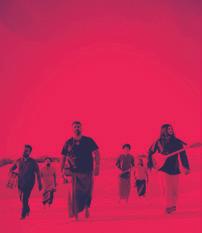







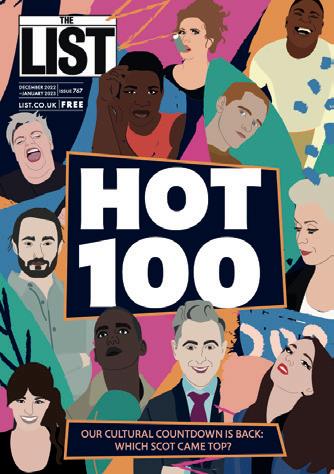



















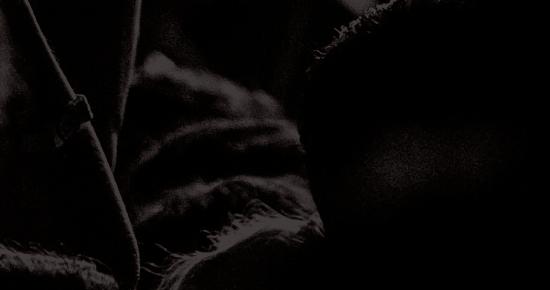


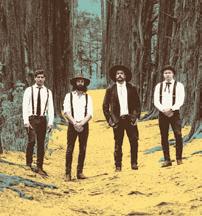





Northern Ballet have an excellent reputation when it comes to adapting literary classics for the stage. As such, the storytelling in their new version of Aesop’s Tortoise And The Hare is as crystal clear and vibrant as you would expect. Choreographers Dreda Blow and Sebastian Loe weave traditional ballet movements into character-building gestures, without dampening their brilliance: there are leaping jetés from Hare as he warms up, flittering fouettés from a busy bee, and a graceful en pointe butterfly. The tale is simple enough to be summed up in a sentence, so Blow and Loe’s challenge is to eke out each character’s intentions into long, descriptive motions, making sure even the very littlest audience members are keeping up.
In this the production excels, giving us simple passages of dance that show the characters’ thoughts and emotions (Hare arrogantly kissing his trophies, or cruelly mocking Tortoise’s slowness), as well as solos and duets that break up the action. Two cheerleader bunnies jostle for our attention in a danceoff with pom pom carrots; an elegant butterfly drifts around a flower and an acorn-hoarding squirrel tries to distract competitors from the course.
The only issue with these interludes (which is perhaps part of a wider problem with ballet) is that they lean towards an underlying subtle narrative of gender traditions, which shows women as pretty, decorative and lightfooted, while the men are strong and sporty. You feel that it would have been quite easy to substitute a male butterfly or cast a jaunty squirrel-woman. Young kids are sponges when it comes to absorbing unconscious biases and these things do matter. Nevertheless, wonderful live performances of Bruno Merz’s woodlandy, evocative score, along with stunning, coloursoaked design from Ali Allen, not to mention energetic performances from the cast, make a winning formula for introducing children to both ballet and Aesop’s tale. (Lucy Ribchester)
n Reviewed at Festival Theatre, Edinburgh.
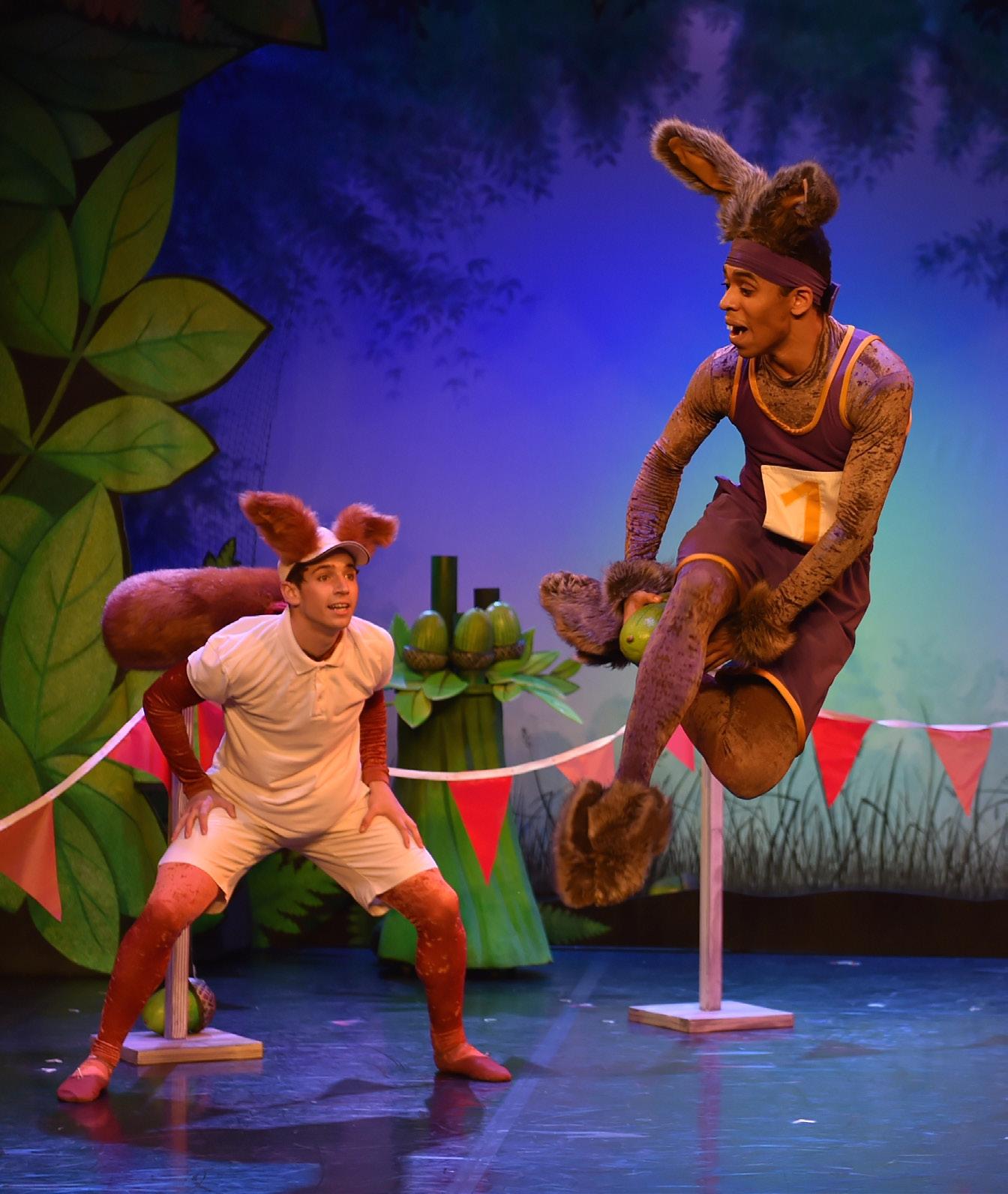

Careering through their greatest-hits catalogue with minimal fuss or unnecessary fanfare, Twin Atlantic’s homecoming gig was a resounding success. After a thorough warm-up led by local duo Saint Phnx, frontman Sam McTrusty and the boys didn’t need third gear to appease the rip-roaring Academy crowd, all 2500 of whom were delighted to welcome the band back to this venue after more than a decade away.
In a 19-song set that refused to skimp on any of the hits, lulls were few and far between. Though the anthemic likes of ‘Make A Beast Of Myself’, ‘Hold On’ and ‘Free’ piqued the crowd, it would have been hard to lose interest even in the calmer moments of their 90-minute set. McTrusty’s uniquely endearing Glaswegian falsetto shone on melancholy numbers like ‘Actions That Echo’, which was aired for the first time in nine years, while ‘Be A Kid’ provided the obligatory ‘lighters out’ moment.
Clearly an ardent family man, McTrusty paused to dedicate ‘Brothers And Sisters’ to guitarist Ross McNae’s sister (a moment he admitted was ‘cringe’), before shouting out his own sibling Chloe who was watching from the balcony, and his mum, as he warned the crowd ‘don’t let big Shirley down’. When the time came for a grand finale, the inevitable 'Heart And Soul' crescendo did not disappoint, uniting the room without the need for ticker tape or confetti.
(Danny Munro)
n Reviewed at O2 Academy Glasgow.





































If you fancy getting out and about this month, there’s plenty culture to sample such as an electronica fiesta, the bloodthirsty prequel to a horror saga, and the return of a beloved play while four comics perform in two cities across one evening
ART
GSA DEGREE SHOW
It’s that time of year again when we get the chance to celebrate the latest generation of art students who are showing off work in this large public exhibition of graduate creativity.
n GSA Garnethill Campus, Glasgow, until Sunday 9 June.
COMEDY
THE MUSLIMS ARE COMING
A quartet of very busy comedians hotfoot it across east and west in one day to make people chuckle. Tez Ilyas and Nabil Abdulrashid are among these funny folk.
n Monkey Barrel, Edinburgh & Glee Club, Glasgow, Sunday 23 June.
A QUIET PLACE: DAY ONE
This third instalment in John Krasinski’s postapocalyptic horror series is a prequel starring Lupita Nyong’o and Joseph Quinn in which bloodthirsty alien beings with really excellent hearing invade New York
n In cinemas from Friday 28 June.

Based on a Roddy Doyle novel, this animation has Brendan Gleeson and Sharon Horgan helping voice the story of four generations of women who go on a journey of discovery.
n In cinemas from Friday 28 June.
AWFUL AUNTIE
A tiny ghost, a huge owl and the eponymous terrible relative are among the players in this adaptation of David Walliams’ kids book. When Stella finds herself trapped in her aunt’s house, she’s in a race against time to save herself.
n King’s Theatre, Glasgow, Thursday 6–Sunday 9 June.
RICHARD HAWLEY
The ex-Longpigs and Pulp man has a couple of Olivier Awards to his name for his own musical but he’s back here doing his gritty/soothing vocal and guitar thing.
n Barrowland, Glasgow, Sunday 2 June; Usher Hall, Edinburgh, Monday 3 June.
PRTY FESTIVAL
Local acts are joined by international talent for this one-day event featuring the electronic likes of Parfait, Fantasm, Black Traffic, Circo and Dominique.
n Braehead Arena, Glasgow, Saturday 22 June.
SHIRLEY VALENTINE
The beloved one-woman play by Willy Russell is back with Sally Reid taking on the role made famous in the movies by Pauline Collins as we learn about a bored housewife who suddenly grabs life before it’s too late.
n Lyceum Theatre, Edinburgh, Wednesday 12–Wednesday 19 June.
MEDEA ON THE MIC
This latest instalment of A Play, A Pie And A Pint comes from the pen of Nazli TabatabaiKhatambakhsh who reimagines the classic Greek tragedy through a feminist, queer and Scottish lens.
n Òran Mór, Glasgow, Monday 10–Saturday 15 June.
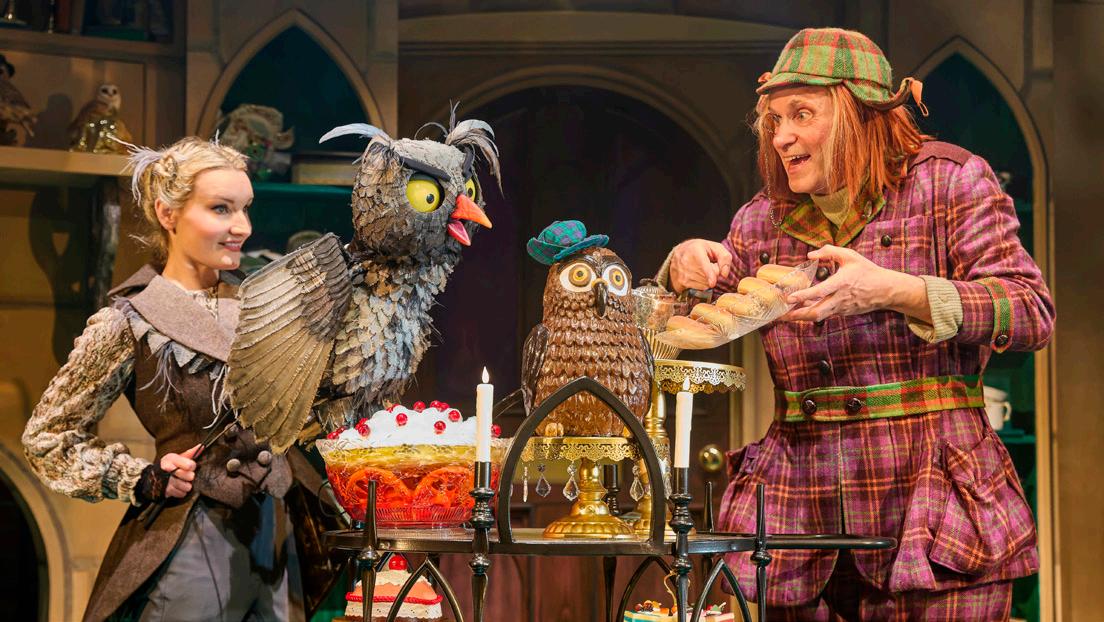









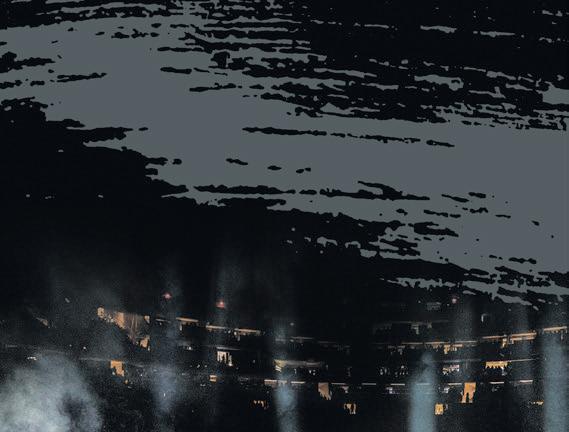



















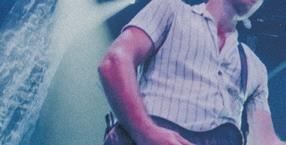

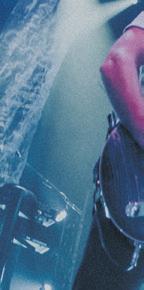
















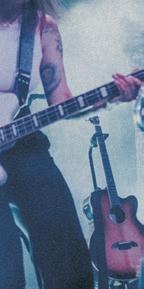
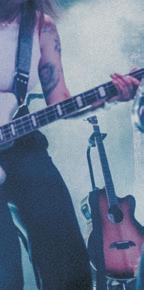


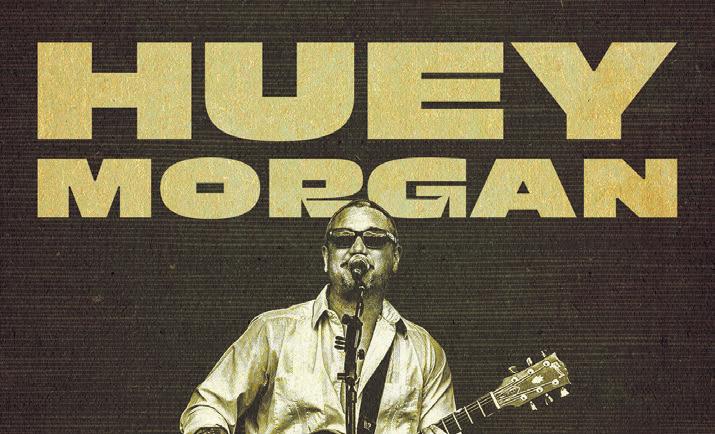










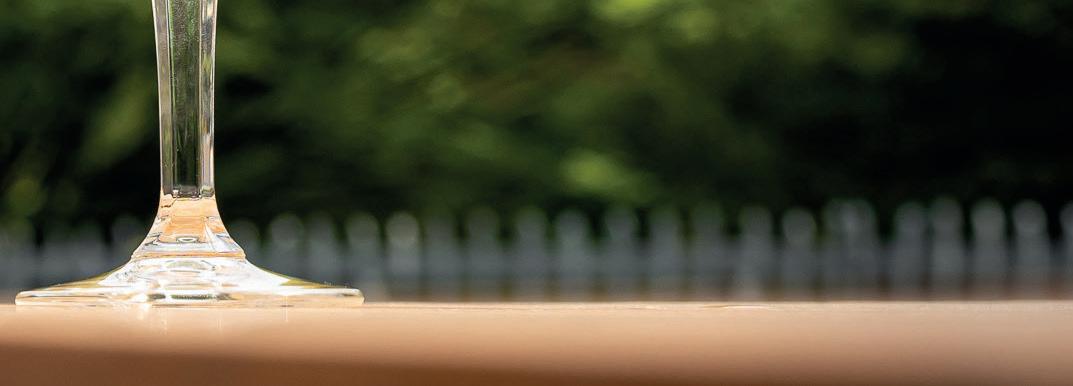



S OA K UP SUMMER AT T HE BRASSERIE
Immerseyourselfinthelaid-backatmosphereofTheScholarHotel, nestledatthefootofArthur’sSeat.Relaxamidstthegreeneryofour newGardenTerrace:enjoyarefreshingdrinksselection,craftedin partnershipwithPickering’sGin,ortakeyourtimeindulgingin our seasonalmenu.
Open daily, 12noon -9pm @thescholaredinburgh
Back in 1980, Cyndi Lauper was in a legal battle featuring her old band Blue Angel and a former manager when the judge declared ‘let the canary sing!’ Several decades later, that’s the title of a new documentary about this pop icon who achieved major cult status with tunes such as ‘Girls Just Want To Have Fun’, ‘True Colours’ and ‘Time After Time’. After years of turning down offers to have her story told, Lauper finally entrusted the task to Alison Ellwood who has previously made music docs about The Eagles, Laurel Canyon and The Go-Go’s. (Brian Donaldson) n Available on Paramount+ from Tuesday 4 June.
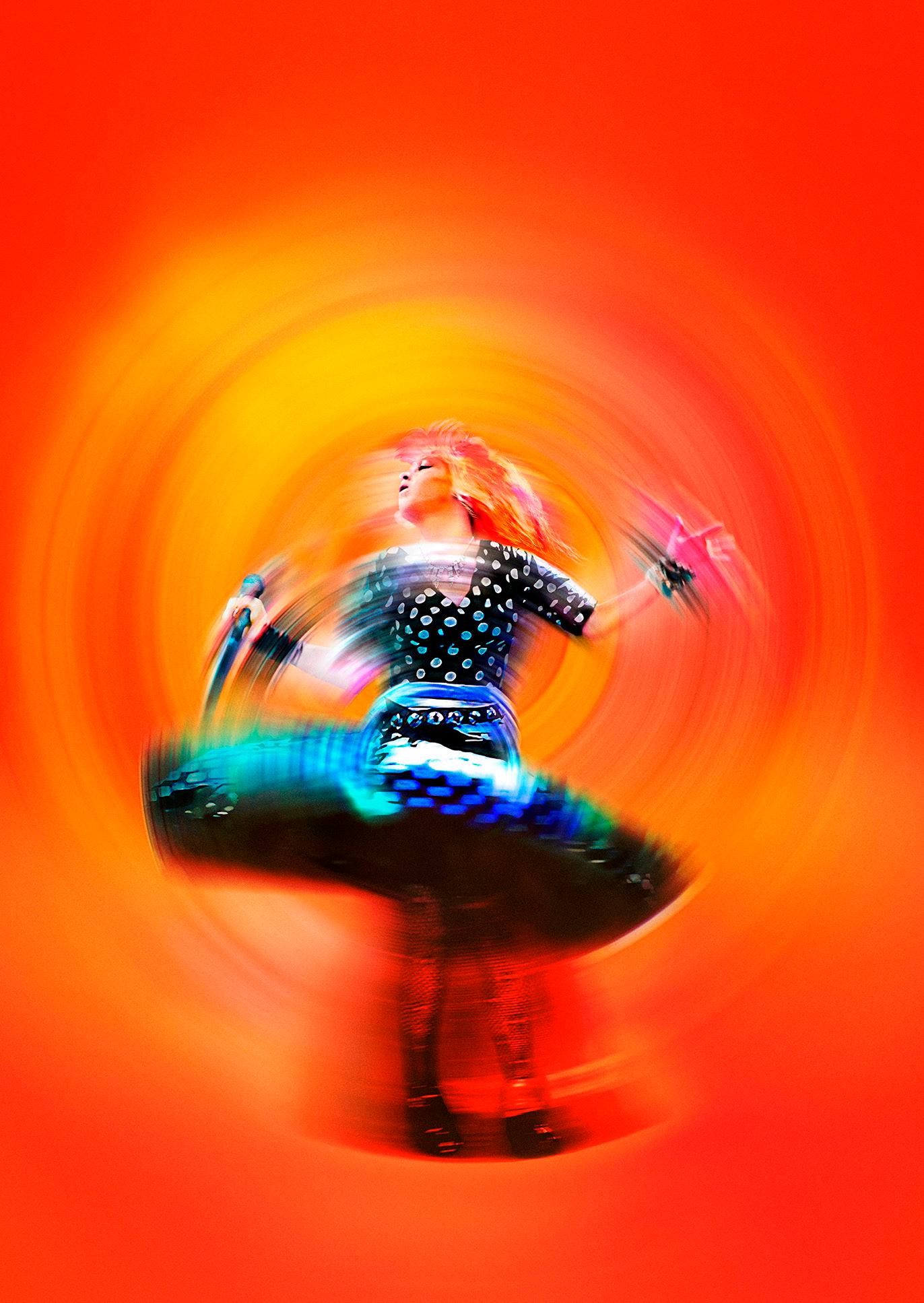
TV series Pyramid Game is the latest slice of South Korean culture to reach our shores and make some headlines. Megan Merino wonders if this anti-bullying teen drama is another of that country’s cult triumphs
If we cast our minds back to September 2021, one particular television series had landed on top of the global pop-culture agenda. Shocking audiences all over the world with its compelling characters, psychologically disturbing concept and arresting violence, Hwang Dong-hyuk’s Squid Game became Netflix’s most watched show. Blowing predecessor Bridgerton out of the water, it received over 271 million views across its launch period, solidifying South Korea’s small-screen exports as undeniably mainstream.
Of course, this wasn’t the first time the Western world was enthralled by a South Korean story. In early 2020, director Bong Joon-ho’s Parasite was victorious at the Academy Awards, becoming the first foreign-language film to win Best Picture. But was this enough to change the way English-speaking institutions saw South Korea’s cultural contributions into the future? Arguably yes. In April of last year, Netflix pledged to invest $2.5bn into South Korean cinema and television development and, while the show in question doesn’t come from that particular streaming giant, a new psychological thriller shamelessly titled Pyramid Game (co-produced by Paramount+ and South Korean streamer TVING) could be seen as the latest manifestation of this trend.
Pyramid Game follows student Seong Su-ji, played by well-known singer and actress Kim Ji-yeon, as she navigates an all-girls high school (think Mean Girls but with a dark twist). Being an angsty teenager in a totally new environment could easily feel like a daily fight for survival, but in Su-ji’s case this metaphor becomes all too literal. Forced to partake in a ruthless ranking system based on popularity, secret votes determine which students are attackers, victims and bystanders. Those who land at the bottom of this pyramid have to make a choice: do they endure violence or stand up against the game?
Directed by Park So-yeon (The Heavenly Idol), Pyramid Game reflects a very real bullying epidemic in South Korean schools. In an interview with The Korea Times, So-yeon explains that despite the show’s depictions of cruelty, her intention is to prevent violence, not promote it. ‘I intended to show how people’s indifference and insensibility can lead to such frightening school violence. I aimed to depict psychological changes of the students under the theme of school bullying and deliver a message with their stories.’
n The Pyramid Game is available now on Paramount+.




Brighton-based developer The Chinese Room has earned itself a reputation for crafting startlingly original, narrative-focused games. Their breakout hit was 2012’s Dear Esther, a haunting elegy set on a deserted Hebridean island. The game popularised a new genre: the walking simulator, in which players must patiently traverse an environment while a story unfolds. Three years later, Everybody’s Gone To The Rapture showed what they could achieve if given a healthy budget by Sony. Its vast, impeccably detailed depiction of a fictional 1980s English village told a compelling tale, heavily influenced by the work of classic science-fiction writer John Wyndham.
Still Wakes The Deep is a psychological horror set in 1975 on a damaged drilling platform off the Scottish coast. Taking on the role of an electrician, players must escape from the collapsing rig while being pursued by a mysterious creature. The original pitch was ‘The Thing set on an oil rig’ and, with its non-combat mechanic, it’s reminiscent of Frictional Games’ terrifying Amnesia: The Bunker from last year. The Chinese Room has worked with that developer before, on 2013’s narrative-heavy Amnesia: A Machine For Pigs, so a little cross-pollination may be inevitable (and no bad thing). With its developer’s gift for creating tension, atmosphere and a real sense of place, Still Wakes The Deep has big potential. (Murray Robertson)
n Released

Steve Pemberton and Reece Shearsmith are about to give us their final shock ending as Inside No 9 comes to a conclusion. Brian Donaldson reflects on a consistently innovative show that might well be leaving the best to last
Inside No 9 bowing out on its ninth season is, of course, very fitting for a programme that was all about tying everything up at the very end. From crushing together a crew of parlour game players with its opening salvo, ‘Sardines’, in 2014 through to this month’s grand finale (the BBC are keeping that one very hush hush indeed, so fan speculation will be rife), Steve Pemberton and Reece Shearsmith have continually pushed themselves by coming up with unique ways to go ‘inside a number nine’.
More often than not this would be the door number of a house or flat where sinister/silly events would play out over approximately 30 minutes and which would climax in a ‘didn’t see that coming’ twist (not for nothing was the show initially pitched as the new Tales Of The Unexpected ). But occasionally they improvised such as with the episode which pivoted on a size-nine shoe, or took place on the ninth floor of a hotel, or had a footballer who wears the number nine shirt, or the quiz show episode called ‘3 x 3’.
So how will it all wind up? This final sextet has already been heavy on the meta with one episode taking place in an escape room and another dwelling on things dying when a ‘ninth’ is completed (in that case, a classical symphony). Some fitting finales are denied them given that they’ve already used them: a live broadcast, one that centred on a crossword puzzle, one that ran backwards, a
(near) silent half hour, an episode which featured their old League Of Gentlemen gang member Mark Gatiss (they imposed a rule upon themselves that no actor would ever appear twice). Maybe their hare will take a central role in the denouement? Maybe neither Pemberton nor Shearsmith will appear in it?
But will whatever they come up scoop their finest episodes? The scary/sad ‘12 Days Of Christine’ seems to crop up on many people’s best-of lists, while for fans of pure horror, ‘The Harrowing’ is up there even if the twist element was negligible. Other contenders are ‘A Quiet Night In’ (ssshhhh), ‘The Devil Of Christmas’ (the sheer terror of its finale is disturbingly unforgettable), ‘The Riddle Of The Sphinx’ (the crossword one), and ‘Bernie Clifton’s Dressing Room’ (arguably the most poignant episode).
Of course, whether this really is the end-end of Inside No 9 is unclear. A live West End show entitled Stage/Fright starts its run in January, and the pair have made very veiled hints that they might return to it one day in screen form. After all, when it comes to Reece Shearsmith and Steve Pemberton, we’ve learned to expect the unexpected.
The final episode of Inside No 9 airs on BBC Two, Wednesday 12 June; all nine seasons will then be available on BBC iPlayer.



A celebration of the incredible independent art galleries in Edinburgh’s New Town. Pick up an NT Art Month map and get walking!

In this Q&A, we throw some questions about ‘firsts’ at debut authors. This month, we feature Briony Cameron, author of The Ballad Of Jacquotte Delahaye, the tale of a fierce and legendary female pirate in the Caribbean who is awaiting the hangman’s noose
What’s the first book you remember reading as a child? The Wrestling Princess And Other Stories by Judy Corbalis. I was absolutely obsessed with it as a kid, specifically the story about the titular Wrestling Princess herself. I suppose I’ve always had a love for strong women.
What was the book you read that made you decide to be a writer? I will say this forever and always, but The Three Musketeers by Alexandre Dumas. I truly wish I had the thrill of reading this again for the first time.
What’s your favourite first line in a book? ‘There was a boy called Eustace Clarence Scrubb, and he almost deserved it.’ The Voyage Of The Dawn Treader by CS Lewis. Probably one of the best opening lines to a book of all time.
Which debut publication had the most profound effect on you? Things Fall Apart by Chinua Achebe. It’s so moving and raw and just human. It’s devastating and powerful and changes you. It leaves you with this feeling in your gut that you can’t shake for days.
What’s the first thing you do when you wake up on a writing day? Usually, I’ll try to read or listen to an audiobook. Just a chapter to get my gears in motion and get myself in the mood for writing. I try never to force myself to write, because any time I’ve done that, the writing has been such a hot mess that it all has to be disregarded, so I centre myself and prepare with some reading.
What’s the first thing you do when you’ve stopped writing for the day? Honestly, I usually knit/crochet or play some video games. Whatever the post-writing mood calls for. Something that helps me switch off my brain and recover from whatever turmoil I’ve been putting my characters through.
In a parallel universe where you’re the tyrant leader of a dystopian civilisation, what’s the first book you’d burn? I would never in my life burn a book, I can’t even bring myself to dog-ear pages. But for the sheer irony of it, Fahrenheit 451 by Ray Bradbury.
What’s the first piece of advice you’d offer to an aspiring novelist? Write for yourself. Write the book that you always wanted but never got. Be the person who brings that piece of art into this world. You will never regret staying true to that vision.
The Ballad Of Jacquotte Delahaye is published by Piatkus on Thursday 6 June.

• bo o sk


Our alphabetical column on viewing marathons reaches a second slice of Y
When Armando Iannucci began work on sweary political satire The Thick Of It, he revealed that Yes Minister (Apple TV+) was one of the key influences for his new show. This statement proved to be something of a surprise to many people given how almost quaint the Antony Jay and Jonathan Lynnpenned sitcom was. But the awkward and cringeworthy way in which the politicians, civil servants and advisors continually clash and misconstrue each other is straight out of Iannucci’s playbook.
Those who adore You (Netflix), the four-season strong show about Joe (Penn Badgley), a genial bookshop boss by day and psychotic stalker at night (but also during the day) probably do it in spite of themselves. So far, Joe has dragged his obsessive personality across New York, LA, Marde Linda (a made-up place) and London with filming already underway for a fifth and final season. As a review of the most recent set of episodes noted ‘it is entertaining, but is also sort of awful . . . don’t look too hard at it and you will have a lovely time.’ (Brian Donaldson)
n Other Y binges: Yellowstone (Paramount+), Young Dracula (BBC iPlayer), Your Face Or Mine? (BritBox).

ROur column celebrating new music to watch continues with Dundeebased alt.rockers Red Vanilla. The band chat to Fiona Shepherd about living together, perfectionism and discovering their niche
ed Vanilla are a driven bunch, a band on a (long-term) mission who dropped out of school and university to devote their energies and funnel their funds into achieving a dream which had been percolating in singer/guitarist Anna Forsyth’s mind for almost a decade. High on Paramore tour videos, she resolved at the age of 12 to form a band when she was 13. ‘I was on a mission to find band members,’ she says. It took her five years to find her wingman George Weller. In contrast to Forsyth, he was a reluctant music student as a child. ‘I had about six or seven guitar teachers and I really hated it,’ he recalls. ‘I finally got this one teacher who taught me “Times Like These” by Foo Fighters. It was the first song I heard that I really liked and I started to realise that I really love playing.’
Music has been something of a lifesaver for Weller, who has been diagnosed with OCD. At its worst, he struggled to function and shut himself away. ‘The thing that eventually got me to come out was knowing the band are waiting for you and they need their guitarist; so I didn’t do it for me, I did it for the band.’ In a further show of commitment, the four-piece all live together, like a fun boot camp. Drummer Lucas Mander joins Forsyth and Weller, Zooming in from their collective couch (bassist Sam Roberts is indisposed, with a few months still to go before school’s out forever). Forsyth freely admits that many of her lyrics are inspired by the band’s gang mentality. ‘We’re like siblings,’ she says. ‘Nobody else in the world gets how it feels apart from you guys because it’s your little thing. That’s why I started a band in the first place as I wanted that bond with other people.’
Forming just before the pandemic hit, they honed their shoegazey indierock skills during lockdown. Inspired by Wolf Alice’s Ellie Rowsell, Forsyth took up guitar to add to their armoury. Debut single ‘Embers’ was released in 2022 after which the band worked on their first seven-track EP Days Of Grey with producer Kieran Smith, who has worked with another of Red Vanilla’s fave raves, Dundonian alt.rockers To Kill Achilles. ‘Dundee’s scene is very varied and we’ve found our niche; it’s very welcoming,’ says Mander.
‘We made the whole EP in Kieran’s home studio using cardboard boxes as vocal booths, but it sounds incredible,’ says Weller. ‘It took me 12 hours to do my guitar parts; it took Lucas ten minutes.’
‘I would like the world to know that I did the whole EP in one take,’ says Mander. ‘Our approach in general is we’re all perfectionists. There are stakes involved. All of our cards are on the table with this EP.’
Days Of Grey is self-released on Friday 7 June, and launched at Beat Generator, Dundee, Saturday 6 July.



Was there ever a time when humans were not fascinated by the murky, seedy events that lead to crimes, and the people who perpetrate them? The past decade may have spawned a whole genre of true-crime documentaries and podcasts, but for several hundred years before, there was another way in which criminal tales were distributed en masse: murder ballads.
I was prompted to go digging into the practice of ballad singing after reading that, in the 18th century, it was a culture dominated by women. Online, I found digitised archives (such as the National Library Of Scotland’s Word On The Street) filled with penny broadsides: cheap printed sheets that were peddled and sung outdoors. They covered topics from politics to lost love, but there was one subject that kept cropping up again and again: murder.
Eighteenth-century murder ballads ranged from tales detailing a crime in a particular region, such as ‘The Gloucestershire Tragedy’, to verses claiming to be the last words of criminals about to be hanged. More than simple cautionary tales or historical accounts, they seemed to chime with our contemporary fascination for exploring crime, for filling in the blanks and trying to explain the ‘whys’.
There is something irresistibly tempting about wanting to probe and pick at a story, to know more about what makes its players tick. That’s what draws one of the principal characters in my latest book, Murder Ballad, to investigate a tale she recognises but doubts the veracity of. But as she discovers, unravelling fact from fiction is not a straightforward business, and can bring its own dark consequences. (Lucy Ribchester) n Murder Ballad is published by Black & White on Thursday 20 June.
In this column, we ask a pod person about the ’casts that mean a lot to them. This month, it’s Danny Robins, the writer and broadcaster who has been variously dubbed as ‘a latter day Alfred Hitchcock’ and ‘a contemporary Van Helsing’. His latest podcast is Uncanny USA which takes an established and hugely successful formula of seeking out the paranormal and peculiar but this time to a country which, let’s face it, is prone to all sorts . . .
Which podcast educates you? No Such Thing As A Fish. It’s a font of information you’ll find yourself regurgitating at parties or to your mates in the pub, and it’s funny too.
Which podcast makes you laugh? I’m a huge admirer of Jon Holmes and his show The Skewer. I’ve known Jon for years since we used to write topical sketch comedy together for BBC Radio 4 and am very impressed by the consistently funny (and award-winning) shows he makes.
Which podcast makes you sad or angry? In The Dark is a powerful American podcast exploring miscarriages of justice. In season two they took on a case of a black man who had been seemingly framed by a vindictive white prosecutor. Shows like that make me both sad and angry.
Which podcast is your guilty pleasure? I sometimes feel guilty listening to truecrime podcasts as I’m always aware that someone’s suffering or loss has been repackaged as entertainment. I found myself very gripped by the first series of Up And Vanished but then felt a little awkward hearing the host do adverts for comfortable underpants in between discussing someone being murdered.
Name someone who currently doesn’t have a podcast but totally should When I was out in the States recording Uncanny USA recently, I met a former cop whose job had been deprogramming hardcore criminal gang members in LA and then helping them start new lives. He was fascinating.
Pitch us a new podcast idea in exactly 25 words I go on a mission to find the holy grail. I’ve always fancied myself as a podcast Indiana Jones. Either that, or I find Atlantis!
New episodes of Uncanny USA are available on Radio 4/BBC Sounds every Tuesday.
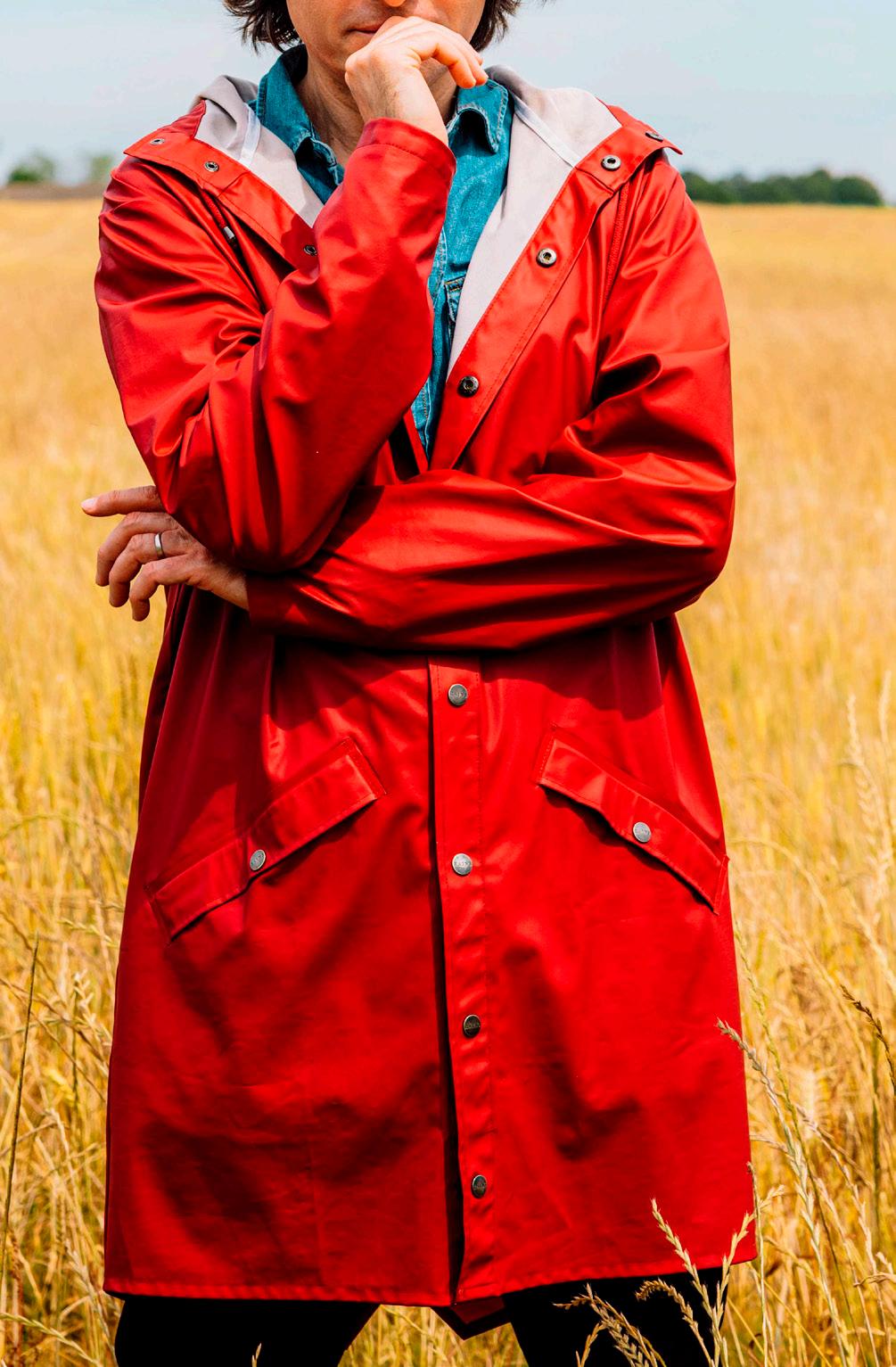












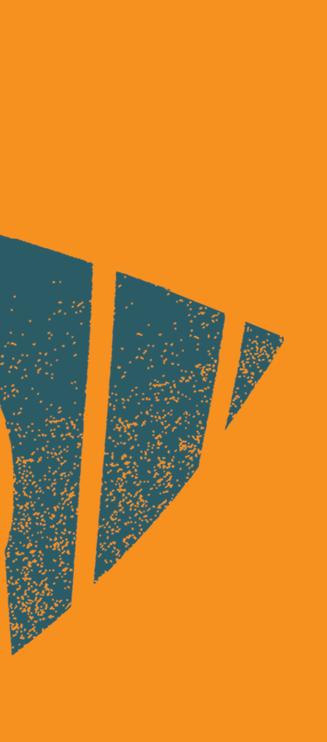


“LIKE


















WFor her debut album, harpist Esther Swift has teamed up with talented musos to create a distinctive sound and energy.
Megan Merino has a listen and reaches for lofty comparisons to Björk and Kate Bush
hile Esther Swift, the pedal harpist and composer, has captivated audiences with her live performances and arrangements, this debut album sees her stepping out from behind the soundbox as a multi-pronged artist. Within Expectations Of A Lifetime’s 12 tracks, Swift sings, composes and plays her way through folk songs, ballads and some surprising up-tempo numbers, joined by marvellous musicians, including Fergus McCreadie on piano and the all-female quartet Vulva Volce on strings.
‘Opening’ gently eases us in with ambient birdsong, strings and picked guitar before a gaggle of other instruments join Swift’s stacked vocal harmonies. ‘Just run away with me, let’s get out of the city,’ she pleads as a bagpipe and military snare drum burst in, bringing with them a sense of urgency that returns later in the album. Before then we’re treated to Swift’s leaping falsetto in ‘Blue’, a richly orchestrated dreamscape of a song, followed by ‘Lateral Flow’, a hopeful tune of solidarity written during lockdowns.

Alongside nature and community, womanhood and familial structures are recurring themes. ‘Problems To Sharpen The Young’ and ‘The First Blast To Awaken Women Degenerate’ both take large extracts from poems by Rachel McCrum and place music around the words in an often theatrical fashion, introducing more percussion and brass
sounds to add further texture and drama. ‘Vessels’ sees Swift briefly recount an experience of miscarriage and the complex emotional turmoil that followed; the pain and loss but also a relief. ‘Pain and joy can be held in one house without shame,’ she says, over building strings, before a handful of final glissandos played on her harp seem to partially rinse away the anguish.
In the more jazzy, up-tempo ‘Work And Play’, Swift seems to poke fun at Rishi Sunak’s advice for creatives to ‘retrain’ during lockdown. ‘I work to play / I have no plans to retrain / I don’t get existential dread everyday,’ she sings over frantic strings and syncopated drums. A racing piano solo and rallying pipes lead into an increasingly knotty instrumental before a final raucous chorus offers a grand catharsis.
Swift constantly mixes the sonically harsh and soft to create compositions that sound almost rickety in nature, as if any moment they could simply fall apart. Her eclectic and sometimes conflicting methodologies, from the cinematic nature of classical music and the improvised spirit of jazz, imbue themselves in this record, resulting in a frenetic energy akin to the genrebending sounds of Björk or Kate Bush.
Like those two iconic songstresses, Swift’s voice is breathy but unfaltering, occasionally reaching shrill notes that should make anyone who hears it stand to alertness. But it’s Swift’s composition skills, along with the reliable sounds of Vulva Voce’s strings and Fergus McCreadie’s piano, that keep her music firmly tethered to its listener.
Expectations Of A Lifetime is released by Orange Feather Records on Friday 14 June.


Moving to a sleepy wine town in sunny northern Spain may sound like a dream. But with no money, a missing husband and a criminal gang on your tail, it quickly becomes a nightmare in Land Of Women. Eva Longoria stars as Gala, a New York socialite forced to flee when her husband makes a dodgy investment. She travels with her elderly mother Julia (Carmen Maura) and teenage daughter Kate (Victoria Bazua) to the tiny town Julia fled 50 years ago, having pledged never to return.
The series lives and dies on its quirky array of strong female characters across the generational divide. Without the vengeful gang of wine-making grandmothers, freeloving bar-keep and all the smalltown lesbians, Land Of Women would just be about another middle-aged lady finding herself on holiday. But it’s hard not to love a story about women surviving against the odds.
Maura’s Julia is a particular treat. Perhaps unfamiliar to UK audiences, she is a certified legend in Spain. Her career as a comedic and dramatic actor has spanned six decades, and here it’s easy to see why. As Julia she wears her battle with dementia lightly, flirting with anything that moves within a five-mile radius. But quickly we learn this is all a coping mechanism against her failing health and mysterious past. Maura’s timing is so sharp, she can make you laugh or cry right on cue. Land Of Women is a satisfying watch which is much more than meets the eye. Come for the twists and turns but stay for a genuinely sweet story that ages like fine wine. (Rebecca Crockett) n Starts on Wednesday 26 June.
To shamelessly pilfer from the Cliff Richard song which was adopted as the theme tune for 1980s groundbreaking sitcom The Young Ones, once in every lifetime, comes a comic genius like Rik Mayall. Utterly fearless and rammed full of bravado, Mayall catapulted himself (given his love for physical comedy which bordered on the quasi-violent you could imagine this being quite literal) into the forefront of that era’s alternative-comedy movement.
From playing the pompous ‘radical’ Rick in that anarchic student-flat sitcom to being sleazy self-serving Tory MP Alan B’Stard in The New Statesman plus scene-stealing cameos in Blackadder as Lord Flashheart and performing in Waiting For Godot with his key comedy partner Adrian Edmondson, Mayall developed a stirring and chaotic body of work that was sadly cut short ten years ago this month after suffering a heart attack at home. This hour-long documentary from writer Max Kinnings touches on all of that, but zeroes in on his collaboration with Mayall in 2004 to write the latter’s memoir, Bigger Than Hitler, Better Than Christ
The book’s publisher HarperCollins may have commissioned a fairly straight autobiography but what they got (and probably half-wished for) was an off-the-rails stream of mayhem and faux-megalomania which did everything it could to reveal as little of the real man as possible. Kinnings positions himself as the cap-doffing straight man but allows us to hear his off-the-cuff sparring with Mayall as they try to ‘jam’ their way to uncover comedic concepts that could form the backbone of this so-called memoir.
Most movingly, we hear from Mayall’s three children about the kindness, encouragement and love they were always shown by their dad while Ben Elton speaks of a partial disbelief that his comedy hero was also a friend and colleague. No doubt elements of Mayall’s work would probably be considered a little bit raw for some modern sensibilities but, to paraphrase the man himself, if you don’t like it, you’re a wanker. (Brian Donaldson) n Available from Saturday 1 June.


Exclusive 1-hour guided tour

Reveal the hidden histories of LGBTQIA+ community life in Edinburgh from as far back as 1546 until 1912.
FRIDAYS & SATURDAYS IN JUNE


From discussions of global conflicts to dissecting situationships, The Broski Report is a no-holds-barred podcast stylised as satirical propaganda films. Texan comic Brittany Broski, who first went viral in 2019 as Kombucha Girl, explores music, news, internet culture and everything in between. Though many episodes centre around her more niche interests, Broski has a real knack for keeping listeners engaged and each instalment better resembles a FaceTime call with an older sister.
She turns current affairs into digestible chunks for the illinformed and does so with razor-sharp wit. In ‘Why I Left The Christian Church’, she delves into America’s issues with religious fundamentalism and why it forced her to abandon her devout roots. Only minutes before, the hostess was raving about that week’s infatuation: a TikToker cosplaying as Ghost from Call Of Duty
With props and green-screen hijinks, The Broski Report is a treat for viewers and listeners alike. Retro television screens, a glittering world map and a rotating cast of Funko Pop figurines perfectly encapsulate its tone and a unique perspective on humanity. Broski’s candidness about influencing as a career is what sets her apart from fellow content-creators-turnedpodcasters. Unfiltered excitement emanates from her voice when she debriefs celebrity interviews (such as in ‘Having A Literal Meltdown Over Meeting Beyoncé’) and has helped build a rapport with her audience; despite a boom in status, she remains one of us.
While it occasionally may not be for the faint of heart, The Broski Report is a genuine delight. By celebrating those little things that ameliorate female experiences, she has concocted an antidote for the virulency created in part by Andrew Tate and his ilk. (Fiona Brown) n New episodes available every Tuesday.
The Hen Hoose brood is broadening. This collective of female and nonbinary musicians, founded in 2020 by Tamara Schlesinger (who records as Malka), has now secured funding to run as a not-for-profit organisation for another two years and has set up the Beldina Odenyo Bursary to honour their late co-founding member also known as Heir Of The Cursed.
The first of three EPs to be released this year showcases the work of some newer Hoose mates, each of the seven tracks a collaboration between two artists. Riches abound, from the sleek, burnished electro pop of ‘The Lucky Ones’ by composer Lucy Parnell and French-Cameroonian singer-songwriter Djana Gabrielle to the stately, soulful synth torch song ‘Waves’, featuring the intertwined vocals of Belfast-based singer Tanya Mellotte and multi-disciplinary artist Gillian Katungi, aka Paix.
There is no mistaking the delicate voice of Kathryn Williams beside Sacred Paws’ Ray Aggs on the refined ‘Night Is Calling’ while the hypnotic alt.pop of ‘Brigid’ by Cariss Crosbie and Elisabeth Elektra is both sultry and plaintive. Edinburgh-based producer Shears and rapper Xo keep it moody on their pop R&B track ‘Let It All Go’, and ‘My Only Ghost’ is another mesmeric contribution, fusing electronics, accordion and bewitching vocals from Inge Thomson and London-based Bengali composer BISHI. ‘Look Up’ is a luminous highlight among these simpatico partnerships. There is an otherworldly quality to its plucked strings, gentle piano and the exquisite vocals of Jill Lorean and The Anchoress (Catherine Anne Davies) hailing ‘two souls in sympathy, galaxies apart’. (Fiona Shepherd) n Released on Wednesday 5 June.


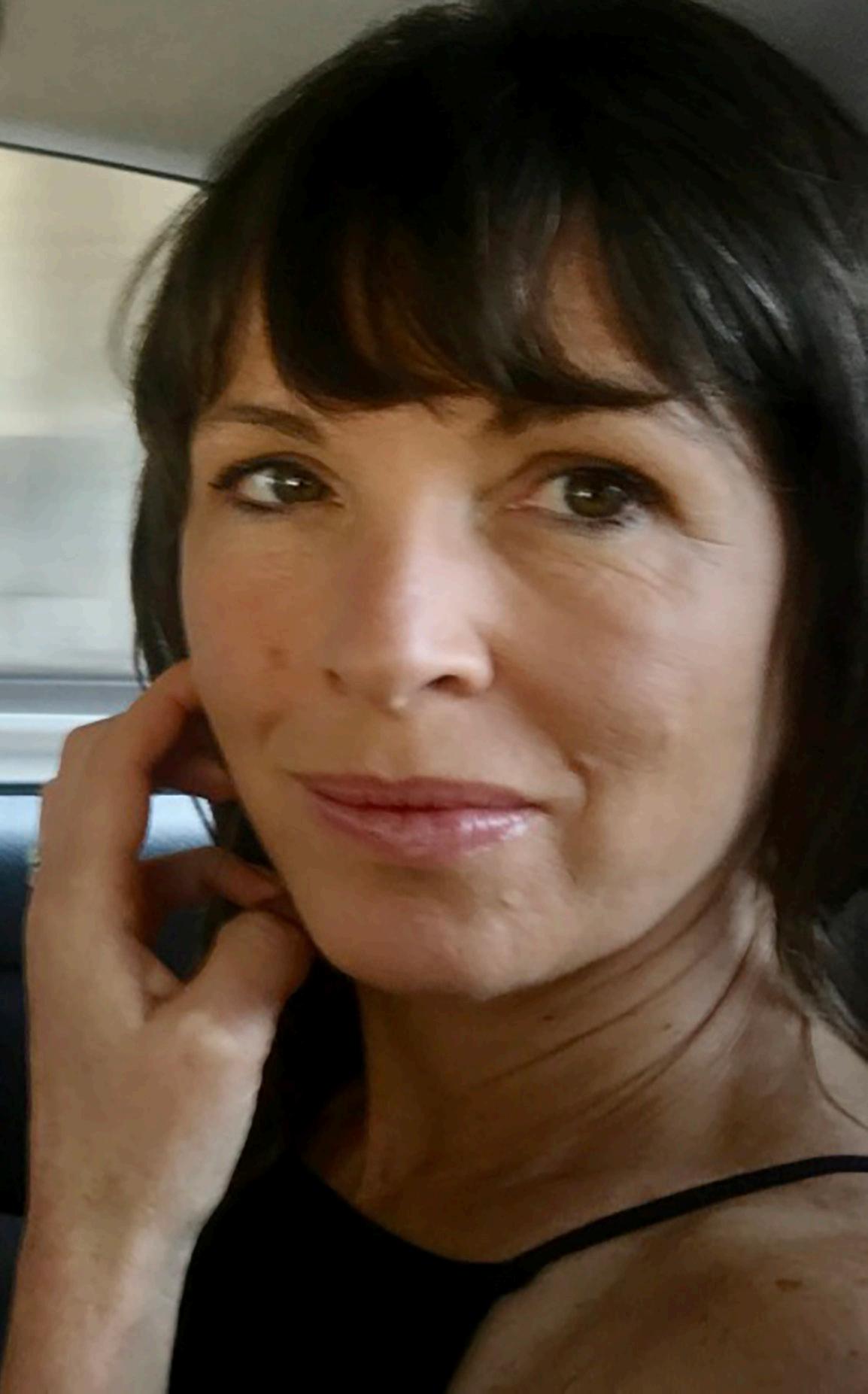
Parade, the latest novel from acclaimed author Rachel Cusk, explores a tapestry of troubled lives in unconventional fashion. Haneen AlEid declares this examination of the human condition a masterpiece
In her latest novel, Rachel Cusk unleashes a torrent of profound explorations, magnifying the intricate complexities of human emotions and preconceived societal norms. Parade consists of four chapters and begins by following the success of an artist who paints his wife upside down. Through this, he also makes her ugly.
Cusk’s interest lies in capturing how art and abstraction can serve as a form of acceptance of madness and a means of escape from the self.
We grow attached and deeply commiserate with other women in the book, in particular how they subsume themselves in traditional marriage roles, and how they become flawed mothers and people because of it. The novel does not follow a conventional structure; Cusk’s unique narrative unfurls like a tapestry of troubled lives, renouncing traditional storytelling in favour of an immersive exploration of the human condition.
The stories truly take off when we encounter G, who at 22 travelled far from home to build a new life, away from the disapproval of her parents. She would later attract a husband who also frowned upon her. G’s external success and family turmoil are attached to the same seed: her shame. Cusk seamlessly captures ancient emotions women have battled with for centuries through her characters’ inner monologue. She artfully encapsulates female emotions, juxtaposing ‘rage’ and ‘competence’ in
the same breath. Through our journey to G’s professional success, we ponder the weight of scrutiny. Shame, body consciousness, womanhood and abuse are spread out very thinly across the pages of this book, making you wish that all women would read it at least once in their lives.
The novel makes a notable assumption that art can be used to cope with everything we dread, in a joyous sense. When the final chapter begins, the whirlwind of ideas come to an end with a last exploration. In it, we learn of a filmmaker who uses an alias. Cusk constructs beautiful trains of thought about how fabricating an external identity can lead to the loss of internal truths. The filmmaker’s attachment to protecting his private life stems from a belief that being truly known is inherently shameful, and that attaching oneself to art can breed arrogance. Most poignantly, the filmmaker’s relationship with his dying mother and its impact on his own trajectory explores the notion that even after we are gone, the people and things we owned continue to carry us. If Parade is your first encounter with Rachel Cusk’s work, chances are you’ll want to explore further to see if she has ever matched this masterpiece.
Parade is published by Faber on Tuesday 4 June.

In 1999, Relic Entertainment released Homeworld, a ground-breaking real-time strategy game set in space. Whereas prior examples of the genre had been limited by two dimensions, Homeworld was (arguably) the first in which players were able to navigate across all three axes. It was a huge deal then and its legacy endures.
Which makes it odd that, apart from a sequel, some spin-offs and remasters, it’s taken this long for a proper third entry. Made by a development team comprising several key personnel from the original title, Homeworld 3 is a gorgeous paean to a niche genre. Battles take place in a variety of arenas that are much more interesting than the plain space of previous entries, and they include a giant starship graveyard bathed in the glowing fug of nearby suns, overseen by distant nebulae and vast galactic discs. The action is accompanied by winningly realistic radio chatter and an appropriately eerie soundtrack by original Homeworld composer Paul Ruskay. Ironically, for a game set in deep space, it’s seriously atmospheric.
The strategy itself starts off relatively easy to grasp, with the game gradually layering in new features and complexities over the brief campaign’s 13 missions (there’s plenty of multiplayer options for longevity). When the action inevitably overwhelms, players are free to use ‘tactical pause’ to gain some wiggle room. That’s also a good opportunity to safely take in the stunning vistas; it’s just a shame that the UI is a little too imperious, frequently blocking the view. Nevertheless, Homeworld 3 is a fitting return to form for this influential series. (Murray Robertson) n Out now on PC.
You’d have thought that shock-jock Infowars loudmouth Alex Jones might have learned to keep his trap shut after being humbled in the courts over his diabolical claims that 2012’s Sandy Hook school shooting was one big fat hoax. Of the new mayor for Derry, he recently raved that ‘the World Economic Forum is now installing invaders as mayors in Ireland just like in London.’ Given that he’s a far-right conspiracy theorist, it should come as no surprise to learn that Kenya-born Lilian SeenoiBarr is the first black mayoral appointment in Northern Ireland’s history.
Silence is not an option for him, obviously, and despite The Truth Vs Alex Jones laying out his Sandy Hook shame bit by bit, he will probably only feel emboldened by it. Jones craves attention so no doubt all he will see across its two hours is his ‘brand’ being highlighted. The rest of us will observe a man whose worldview is so utterly blinkered that he spouts off about left-leaning plots wherever he looks. Most disturbing of all, he actually has the ear of Trump.
What also comes across in this documentary is the dignity and resilience of parents who lost their children (aged six or seven) in the most horrendous manner imaginable, when heavilyarmed 20-year-old Adam Lanza entered a school building one December morning to perpetuate carnage on a devastating scale. Within hours of the tragedy, the ever courageous Jones was on his ‘show’ spouting drivel about it being a statesponsored false flag event designed to ‘take our guns away’ (12 years on, how has that turned out?), later denouncing grieving parents as being ‘crisis actors’. When Jon Ronson included him in his 2001 documentary series The Secret Rulers Of The World, Jones came across as almost likeable, a little cranky but largely harmless. In a pretty packed field, he is now arguably the most dangerous man in America. (Brian Donaldson) n Available from Thursday 13 June.


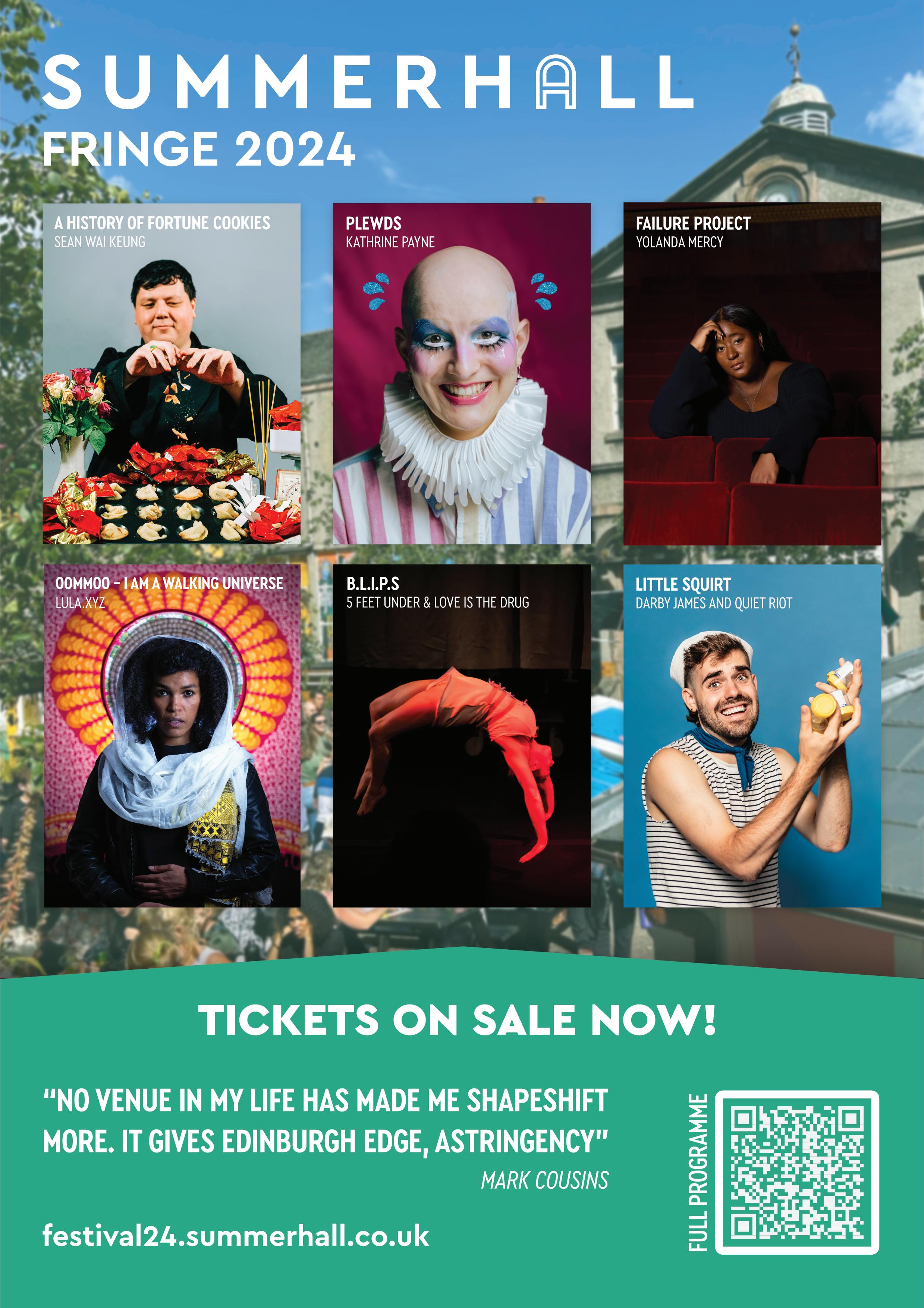
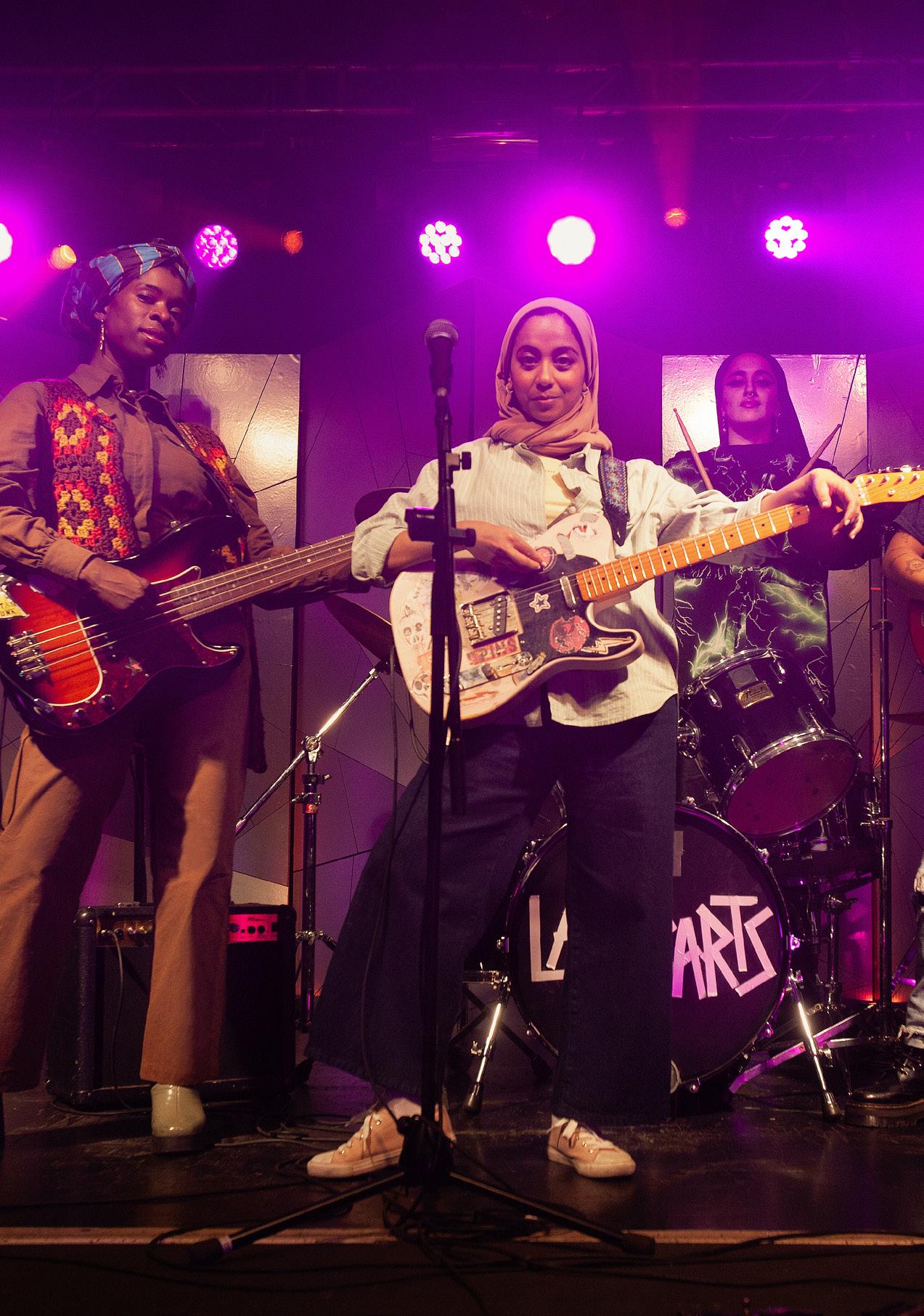
Amina and the girls are back with more obstacles to navigate on the road to punk stardom. Forced to compete with rival bands hijacking their sound, opportunistic promoters refusing to cough up, and a myriad of personal conundrums, things are never straightforward for the ever-feuding five-piece. Having spent the summer scooping up new fans on a UK tour, Lady Parts are forced to enter their ‘Villain Era’ when an adversarial local band receive acclaim for covering their biggest hit. But beyond the main storyline, this irreverent comedy’s sophomore series is at its best when the protagonists are grappling with how to toe the line between commercial success and artistic integrity.
In just six short episodes, We Are Lady Parts explores the tricky relationship between punk and glory, as the band endeavours to make it big without selling out. Viewers of season one will be delighted to know that the original score, penned by the show’s creator Nida Manzoor alongside her siblings, is as strong as ever; as are the covers littered throughout (see the ‘Oops! . . . I Did It Again’ rendition in episode three, which is likely to embed itself in your head).
Rather than taking the easy route, Manzoor and her wellselected cast have clearly put a great deal of hard work and creativity into making this second season fully engaging. While We Are Lady Parts isn’t always laugh-out-loud funny, it avoids the modern sitcom trope of taking itself too seriously. Bar the (fairly frequent) use of choice language, this could be the perfect find for parents of teenagers who are looking for something both informative and entertaining. They’ll also find homemade bangers and representation that refuses to rely on exhausted stereotypes, while there’s even a cameo appearance from none other than Malala Yousafzai. (Danny Munro) n New episodes are available every Thursday.
There’s a telling moment in the sixth episode of Lucy Beaumont and Sam Campbell’s new podcast, when, having phoned up a bemused Ed Gamble for a wheeze, he asks them if they’ve worked out their pod’s format yet. The internet is groaning under the weight of comics just conversationally riffing on eclectic topics. But Perfect Brains is more scattergun than most, with an episode devoted to talking about random years not lasting beyond a discussion of various 2011 phenomenon, while another is given over purely to Campbell’s frivolous game-show idea.
Having originally been flung together by Taskmaster, these intimate, weekly instalments confirm that neither of the pair’s eccentricities are that much of an act. And the twisted and telepathic sibling energy they spark in each other is endearing, exemplified by Campbell coercing his colleague into breaking one of her daughter’s toys. Still, they could benefit from a grounding external voice, a regular third wheel to play off against and rein in their over-indulgence; a grownup to scold these arrested adolescents and give them more to kick against. By some distance, the best episode features Tim Key, Campbell’s ‘mentor’, bickering with ‘The Termite’ over their respective sucking up to a New York socialite. This is followed by Beaumont introducing the Australian to her redoubtable mother, who entertains Campbell’s cheeky line of questioning right up until the moment that she snaps back. Guests have been few and far between up to now. But each new booking or intrusive call affords Perfect Brains fresh impetus and inspiration. (Jay Richardson) n New episodes available every Friday.

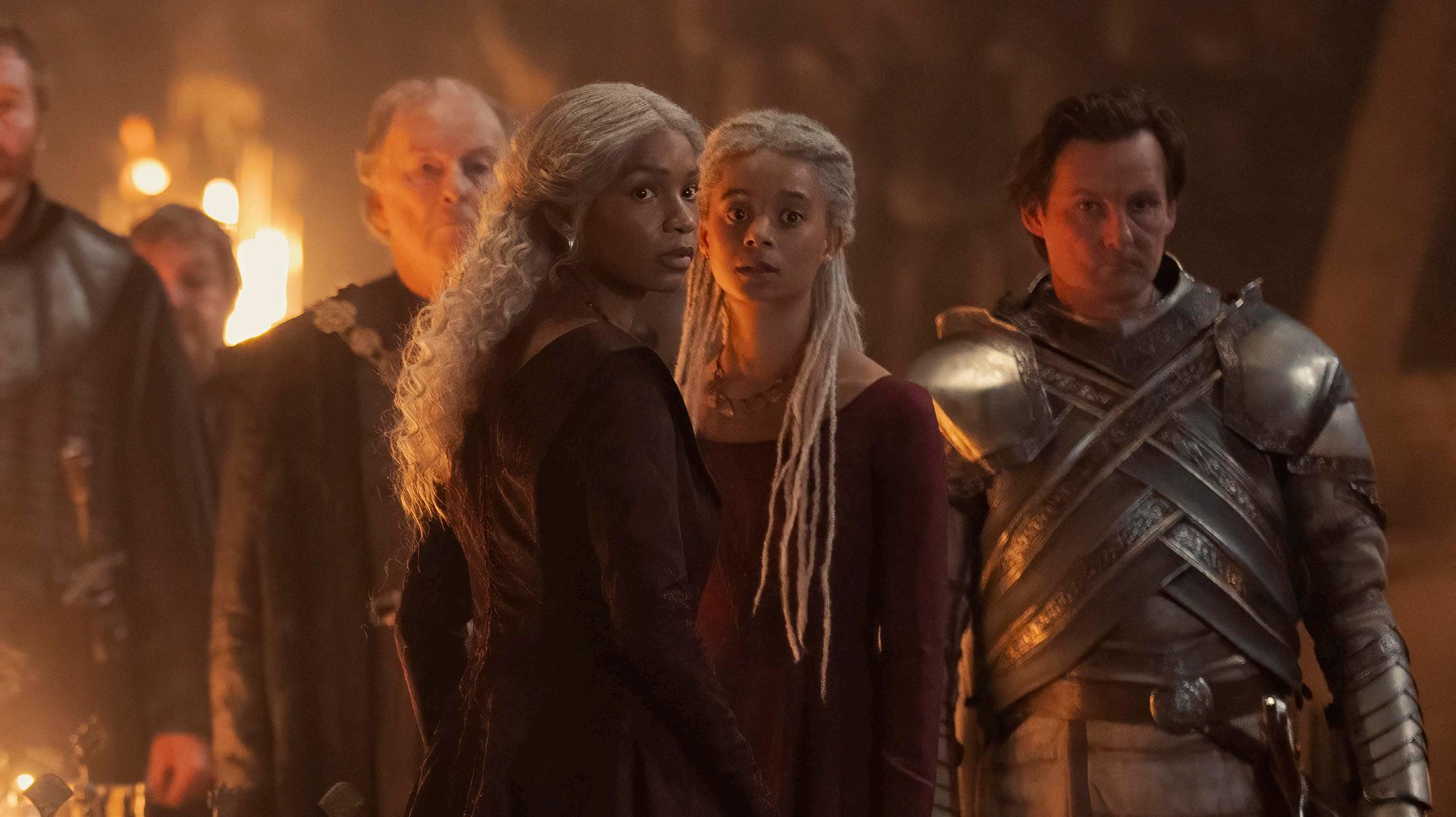
A packed month of things to do indoors or consume on your travels including a 30th anniversary release of a classic pop album, a podcast about the weepiest show in TV history, and a novel from the writer dubbed the new Susan Sontag
ALBUMS
SAM MORTON
Sam Morton is a musical duo comprised of Samantha Morton (who very generously gives the act both a forename and a surname) and Richard Russell (who, em, isn’t really anywhere in the name: wonder how that band-title meeting went?), launch a debut album, Daffodils & Dirt
n XL Recordings, Friday 14 June.
MARCELLA DETROIT
The former Shakespears Sister member marks 30 years since the release of her solo album Jewel which features some glitzy collaborations with the likes of Jools Holland, Phil Manzanera and Elton John.
n London Records, Friday 21 June.
BOOKS
LEAH COWAN
In Why Would Feminists Trust The Police?, writer and editor Cowan traces the complex history of British feminism’s alliances and aggravations with both the law and its enforcers.
n Verso, Tuesday 11 June.
Dubbed the ‘Susan Sontag of her generation’, Elkin gives us Scaffolding, a story of two couples who live in the same Paris apartment almost half a century apart.
n Chatto & Windus, Thursday 13 June.
ADD
Now in its ninth season, Jeffrey Boakye is joined by a new co-host, the violinist, producer and composer Anna Phoebe, with the pair exploring more connections between tracks across very different musical genres.
n BBC Sounds, new episodes available on Fridays.
You’d need a strong constitution to make your way through the weepfest that is This Is Us, and here is a pod that forces you to do just that. Mandy Moore (Rebecca), Sterling K Brown (Randall) and Chris Sullivan (Toby) host this episode-by-episode look.
n Audible, new episodes available on Tuesdays.
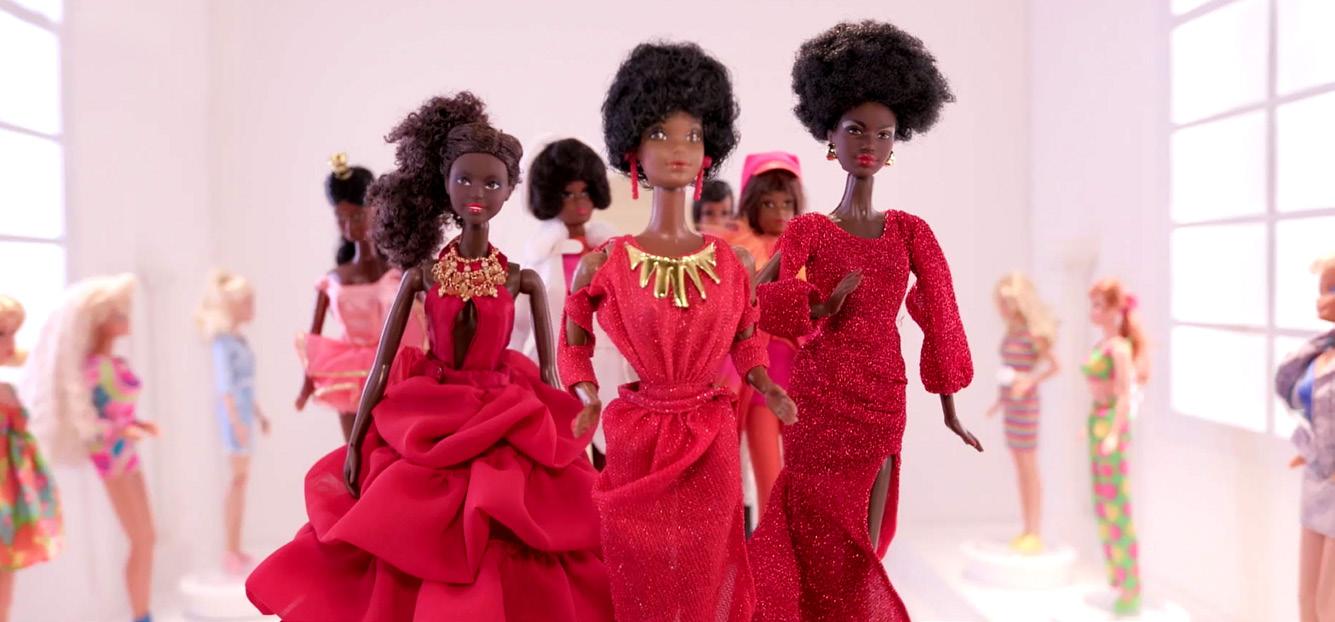
Another in a recent line of late 80s/early 90s US movies being made into TV dramas (Dead Ringers, Fatal Attraction), this legal thriller has been adapted by David E Kelley with a strong cast including Jake Gyllenhaal, Ruth Negga and Peter Sarsgaard.
n Apple+, Wednesday 12 June.
A second season of the Game Of Thrones prequel swoops back in with more pre-origin stories about the Targaryens and Baratheons. Expect ick and awfulness.
n Sky Atlantic/NOW, Monday 17 June.
Shondaland dips into documentary territory with a story of the three women who worked at Mattel and successfully ushered in a black Barbie in 1980, some 30 years after the blonde doll landed on the market.
n Netflix, Wednesday 19 June.










has a bold vision for the
Ed Robson has some big ideas for the iconic arts centre
Last month, Ed Robson took up the post of Artistic Director at Macrobert Arts Centre. Robson’s extensive CV includes a spell as Assistant Director at Birmingham Rep, associate director at Northern Stage Ensemble and Artistic Director at Cumbernauld Theatre where he spent 12 years overseeing a major capital redevelopment. In recent years, he’s worked freelance, including a spell in Portugal on an artist development project. Until his new appointment, his last dalliance with Macrobert was with his critically acclaimed play The Gardener in 2022.
Robson has a bold vision for the future of Macrobert and he wants the industry in general to rethink how we use these spaces: ‘For some people Arts Centre means pottery wheels and country cafes, for others they’re mixed use rehearsal spaces chock full of noisy musical youth, for others they’re places with loads of classes for kids . . . and they’d be right, many arts centres are these things but they’re also so much more.’
Robson looks back on the original purpose of arts centres as they sprang up in the 1960s/70s. ‘People wanted the chance to experience the arts, to take part, to have affordable, local, relevant access to all kinds of culture and creativity. Communities and artists, then as now, need creative spaces. It stands to reason that as artistic practice diversified, artists and communities needed multi-use, multi-purpose spaces.
‘Arts Centres create opportunity, broaden access, and enable opportunity. Arts Centres democratise culture. Arts Centres are local. Arts Centres are affordable. Arts Centres are radical. Arts Centre foster community and cultural activism. Arts Centres celebrate and create. They’re a crucible, a cross-roads, and a meeting point and sometimes a sanctuary. They’re for anyone and everyone. Hopefully, I’ll see you here at Macrobert one day.’


For many people, he will forever be the too-cool-for-school Fonz from Happy Days. To others, he’s ramshackle attorney Barry Zuckerkorn in Arrested Development. And another constituency altogether will see him as self-absorbed acting impresario Gene Cousineau in Barry. Ahead of his in-conversation tour, evergreen icon Henry Winkler contemplates as much of our Q&A as he could stand
Who would you like to see playing you in the movie about your life? Ryan Gosling.
If you were to return in a future life as an animal, what would it be? A dolphin.
If you were playing in an escape room, name two other people (wellknown or otherwise) you’d recruit to help you get out I hate escape rooms and hope never to be in another one again.
Whose speaking voice soothes your ears? My grandchildren.
Tell us something you wish you had discovered sooner in life? Selfconfidence.
Describe your perfect Saturday evening? Movies, popcorn and a pasta dinner.
If you could relive any day of your life, which one would it be? The birth of my children.
What’s your earliest recollection of winning something? A pair of Hopalong Cassidy’s six guns at a Fireman’s Fair.
When did you last cry? At a commercial for a hospital.
When were you most recently astonished by something? The lack of my country’s ability to listen.
What tune do you find it impossible not to get up and dance to? I dance when there is no music.
Which famous person would be your ideal holiday companion? Brandi Carlile.
As an adult, what has a child said to you that made a powerful impact? love you.
Tell us one thing about yourself that would surprise people? I’ve told everyone all my secrets.
What’s the most hi-tech item in your home? My computer and my iPhone.
What’s a skill you’d love to learn but never got round to? I wish I could sing, but I don’t have the voice.
If you were selected as the next 007, where would you pick as your first luxury destination for espionage? The Amalfi Coast.
Henry Winkler: The Fonz And Beyond, Assembly Rooms, Edinburgh, Tuesday 25 June; all four seasons of Barry are available on NOW.


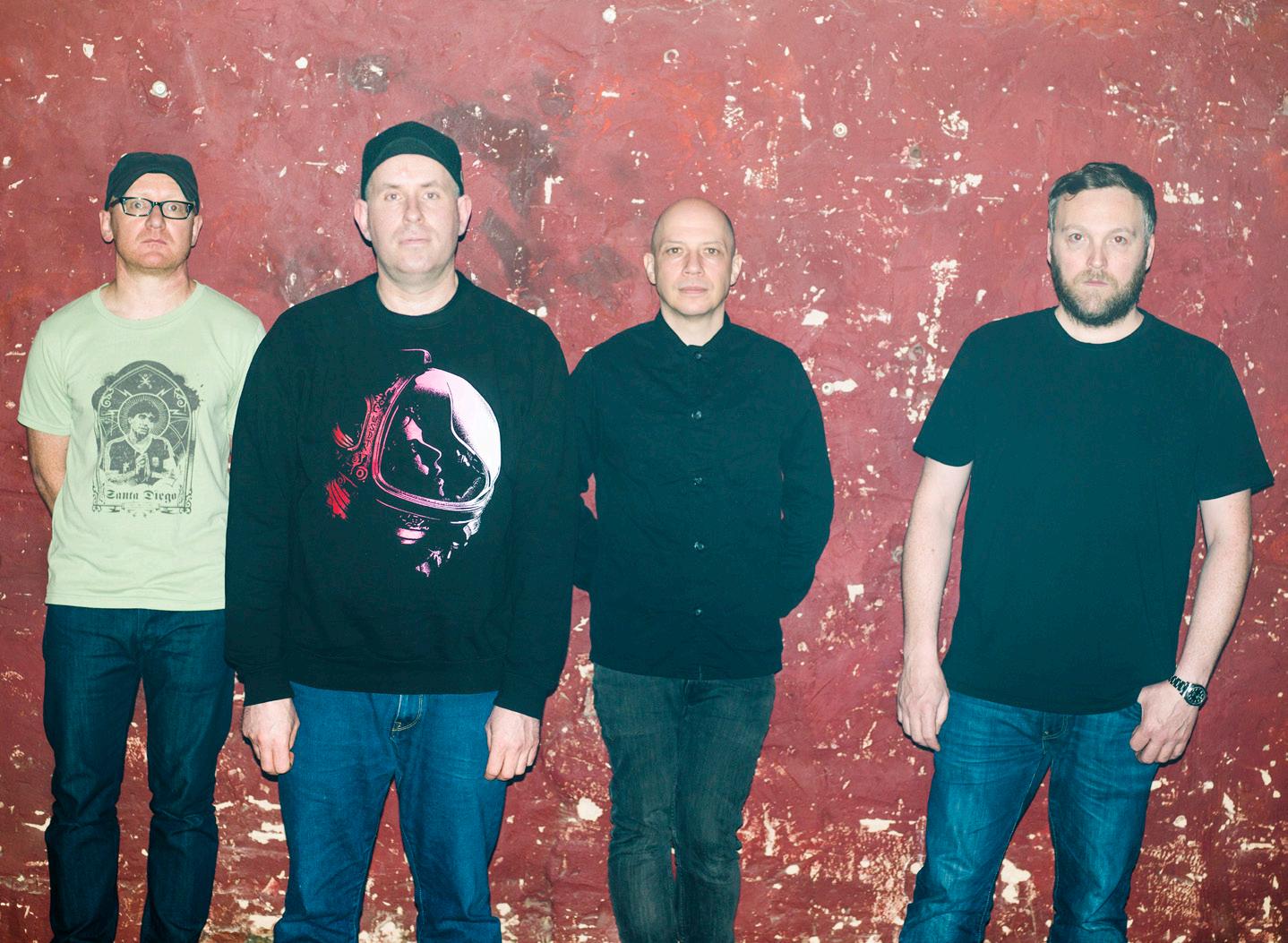

1 2 3
Cassa Pancho’s Ballet Black hit the road with a stop at Edinburgh’s Festival Theatre for a new double bill entitled Heroes (Tuesday 18 June). Mthuthuzeli November and Sophie Laplane are the choreographers in charge of your evening’s entertainment with the former giving us ‘The Waiting Game’ while Laplane lays on ‘If At First’.
Not content with simply being one of the best bands on the planet, Mogwai have now only gone and curated their very own one-day festival in Glasgow. Nadine Shah, Slowdive and Cloth are among several acts taking to the Queen’s Park stage for Big City (Saturday 29 June) while Stuart Braithwaite and co get set to top the bill.
Out at Jupiter Artland, Laura Aldridge has created a space where ‘materiality might absorb or encourage certain feelings’ via her sculptural installation Lawnmower (until Sunday 29 September). Working with textiles, ceramic, glass and found objects, she’s collaborated alongside musicians and other artists for new video works.





































